17 Sailboat Types Explained: How To Recognize Them
Ever wondered what type of sailboat you're looking at? Identifying sailboats isn't hard, you just have to know what to look for. In this article, I'll help you.
Every time I'm around a large number of sailboats, I look around in awe (especially with the bigger ones). I recognize some, but with most of them, I'll have to ask the owner. When they answer, I try to hide my ignorance. The words don't make any sense!
So here's a complete list with pictures of the most common sailboat types today. For each of them, I'll explain exactly where the name comes from, and how you can recognize it easily.


So here's my list of popular sailboat types, explained:
Bermuda sloop, sailing hydrofoil, dutch barge, chinese junk, square-rigged tall ship, in conclusion, how to recognize any sailboat.
Before we get started, I wanted to quickly explain what you should look for when you try to identify a sailboat.
The type of sailboat is always determined by one of these four things:
- The type of hull
- The type of keel
- The number of masts
- And the type of sails and rig
The hull is the boat's body. There are basically three hull types: monohull, catamaran, and trimaran. Simply said: do I see one hull, two hulls (catamaran) or three hulls (trimaran)? Most sailboats are monohulls.
Next, there is the keel type. The keel is the underwater part of the hull. Mostly, you won't be able to see that, because it's underwater. So we'll leave that for now.
The sail plan
The last factor is the number of masts and the sail plan. The sail plan, simply put, is the number of sails, the type of sails, and how the sails are mounted to the masts (also called rigging ).
Sailboat are mostly named after the sail plan, but occasionally, a sail type is thrown in there as well.
So now we know what to pay attention to, let's go and check out some sailboats!

Dinghies are the smallest and most simple sailboats around.
They are your typical training sailboats. Small boats with an open hull, with just one mast and one sail. Perfect for learning the ways of the wind.
On average, they are between 6 and 20 ft long. Mostly sailed single-handed (solo). There's no special rigging, just the mainsail. The mainsail is commonly a Bermuda (triangular) mainsail. Dinghies have a simple rudder stick and no special equipment or rigging.
Dinghies are great for learning how to sail. The smaller the boat, the better you feel the impact of your trim and actions.
How to recognize a sailing dinghy:
- short (8ft)
- one Bermuda sail
- open hull design
- rudder stick
Common places to spot them: lakes, near docks

If you'd ask a kid to draw a sailboat, she'll most probably draw this one. The Bermuda Sloop is the most popular and most common sailboat type today. You'll definitely recognize this one.
How to recognize a Bermuda Sloop:
- triangular mainsail (called a Bermuda sail)
- a foresail (also called the jib)
- fore-and-aft rigged
- medium-sized (12 - 50 ft)
Fore-and-aft rigged just means "from front to back". This type of rigging helps to sail upwind.
Any sailboat with one mast and two sails could still be a sloop. Even if the sails are another shape or rigged in another way. For example, here's a gaff-rigged sloop (more on the gaff rig later):

If you want to learn all about sail rigs, check out my full Guide to Understanding Sail Rig Types here. It has good infographics and explains it in more detail
The Bermuda sloop has a lot of advantages over other sailboat types (which is why it's so popular):
- the Bermuda rig is very maneuverable and pretty fast in almost all conditions
- it's really versatile
- you can sail it by yourself without any problems
- it's a simple setup
Common places to spot a sloop: everywhere. Smaller sloops are more common for inland waters, rivers, and lakes. Medium-sized and large sloops are very popular cruising boats.

Cutters have one mast but three or more sails. Most cutters are Bermuda rigged, which means they look a lot like sloops.
How to recognize a cutter:
- looks like a sloop
- two or more headsails instead of one
- commonly one mast
- sometimes an extra mast with mainsail
Cutters have more sail area, which makes them faster, but also harder to sail single-handed. There's also more strain on the mast and rigging.
Common places to spot a cutter: everywhere. Cutters are very popular for cruising.
They mostly have a Bermuda rig, which means triangular sails. But there are also gaff cutters and naval cutters, and some have two masts.
Here's an example of a two-masted naval cutter with an extra gaff mainsail and top gaff:

The Hydrofoil is a pretty new sailboat design. It's a racing sailboat with thin wing foils under the hull. These lift up the hull, out of the water, reducing the displacement to nearly zero. The foils create downforce and keep it from lifting off entirely.
This makes the hydrofoil extremely fast and also impressive.
The hydrofoil refers to the keel type. There are both monohull and multihull hydrofoils.
How to recognize a hydrofoil:
- it flies above the waterline and has small fins
Common places to spot a hydrofoil: at racing events

Famous catamaran: La Vagabonde from Sailing La Vagabonde
A catamaran is a type of cruising and racing multihull sailboat with two hulls. The hulls are always the same size.
Most catamarans have a standard Bermuda rig. The catamaran refers to the hull, so it can have any number of masts, sails, sail types and rig type.
How to recognize a catamaran:
- any boat with two hulls is called a catamaran
Common places to spot catamarans: coastal waters, The Caribbean, shallow reefs
The advantages of a catamaran: Catamarans heel less than monohulls and are more buoyant. Because of the double hull, they don't need as deep a keel to be stable. They have a smaller displacement, making them faster. They also have a very shallow draft. That's why catamarans are so popular in the Caribbean, where there's lots of shallow water.
Catamarans are nearly impossible to capsize:
"Compared with a monohull, a cruising catamaran sailboat has a high initial resistance to heeling and capsize—a fifty-footer requires four times the force to initiate a capsize than an equivalent monohull." Source: Wikipedia

How to recognize a trimaran:
- any boat with three hulls is called a trimaran
Trimarans have three hulls, so it's a multi-hull design. It's mostly a regular monohull with two smaller hulls or floaters on the sides. Some trimarans can be trailered by winching in the auxiliary hulls, like this:

This makes them very suitable for long-term cruising, but also for regular docking. This is great for crowded areas and small berths, like in the Mediterranean. It sure is more cost-effective than the catamaran (but you also don't have the extra storage and living space!).
Common places to spot Trimarans: mostly popular for long-term cruising, you'll find the trimaran in coastal areas.

Gaffer refers to gaff-rigged, which is the way the sails are rigged. A gaff rig is a rectangular sail with a top pole, or 'spar', which attaches it to the mast. This pole is called the 'gaff'. To hoist the mainsail, you hoist this top spar with a separate halyard. Most gaffers carry additional gaff topsails as well.
Gaff rigs are a bit less versatile than sloops. Because of the gaff, they can have a larger sail area. So they will perform better with downwind points of sail. Upwind, however, they handle less well.
How to recognize a gaffer:
- sail is rectangular
- mainsail has a top pole (or spar)
Since a gaffer refers to the rig type, and not the mast configuration or keel type, all sailboats with this kind of rigging can be called 'gaffers'.
Common places to spot a gaffer: Gaffers are popular inland sailboats. It's a more traditional rig, being used recreationally.

Schooners used to be extremely popular before sloops took over. Schooners are easy to sail but slower than sloops. They handle better than sloops in all comfortable (cruising) points of sail, except for upwind.
How to recognize a schooner:
- mostly two masts
- smaller mast in front
- taller mast in the back
- fore-and-aft rigged sails
- gaff-rigged mainsails (spar on top of the sail)
Common places to spot a schooner: coastal marinas, bays

How to recognize a ketch:
- medium-sized (30 ft and up)
- smaller mast in back
- taller mast in front
- both masts have a mainsail
The ketch refers to the sail plan (mast configuration and type of rig). Ketches actually handle really well. The back mast (mizzenmast) powers the hull, giving the skipper more control. Because of the extra mainsail, the ketch has shorter masts. This means less stress on masts and rigging, and less heel.
Common places to spot a ketch: larger marinas, coastal regions

How to recognize a yawl:
- main mast in front
- much smaller mast in the back
- back mast doesn't carry a mainsail
The aft mast is called a mizzenmast. Most ketches are gaff-rigged, so they have a spar at the top of the sail. They sometimes carry gaff topsails. They are harder to sail than sloops.
The yawl refers to the sail plan (mast configuration and type of rig).
Common places to spot a yawl: they are not as popular as sloops, and most yawls are vintage sailboat models. You'll find most being used as daysailers on lakes and in bays.

Dutch Barges are very traditional cargo ships for inland waters. My hometown is literally littered with a very well-known type of barge, the Skutsje. This is a Frisian design with leeboards.
Skutsjes don't have a keel but use leeboards for stability instead, which are the 'swords' or boards on the side of the hull.
How to recognize a Dutch Barge:
- most barges have one or two masts
- large, wooden masts
- leeboards (wooden wings on the side of the hull)
- mostly gaff-rigged sails (pole on top of the sail, attached to mast)
- a ducktail transom

The clipper is one of the latest sailboat designs before steam-powered vessels took over. The cutter has a large cargo area for transporting cargo. But they also needed to be fast to compete with steam vessels. It's a large, yet surprisingly fast sailboat model, and is known for its good handling.
This made them good for trade, especially transporting valuable goods like tea or spices.
How to recognize a Clipper:
- mostly three masts
- square-rigged sails
- narrow but long, steel hull
Common places to spot a clipper: inland waters, used as houseboats, but coastal waters as well. There are a lot of clippers on the Frisian Lakes and Waddenzee in The Netherlands (where I live).

This particular junk is Satu, from the Chesapeake Bay Area.
The Chinese Junk is an ancient type of sailboat. Junks were used to sail to Indonesia and India from the start of the Middle Ages onward (500 AD). The word junk supposedly comes from the Chinese word 'jung', meaning 'floating house'.
How to recognize a Chinese junk:
- medium-sized (30 - 50 ft)
- large, flat sails with full-length battens
- stern (back of the hull) opens up in a high deck
- mostly two masts (sometimes one)
- with two mainsails, sails are traditionally maroon
- lug-rigged sails
The junk has a large sail area. The full-length battens make sure the sails stay flat. It's one of the flattest sails around, which makes it good for downwind courses. This also comes at a cost: the junk doesn't sail as well upwind.

The cat rig is a sail plan with most commonly just one mast and one sail, the mainsail.
Most sailing dinghies are cats, but there are also larger boats with this type of sail plan. The picture above is a great example.
How to recognize a cat rig:
- smaller boats
- mostly one mast
- one sail per mast
- no standing rigging
Cat-rigged refers to the rigging, not the mast configuration or sail type. So you can have cats with a Bermuda sail (called a Bermuda Cat) or gaff-rigged sail (called a Gaff Cat), and so on. There are also Cat Ketches and Cat Schooners, for example. These have two masts.
The important thing to know is: cats have one sail per mast and no standing rigging .
Most typical place to spot Cats: lakes and inland waters

Famous brig: HMS Beagle (Charles Darwin's ship)
A brig was a very popular type of small warship of the U.S. navy during the 19th century. They were used in the American Revolution and other wars with the United Kingdom. They carry 10-18 guns and are relatively fast and maneuverable. They required less crew than a square-rigged ship.
How to recognize a brig:
- square-rigged foremast
- mainmast square-rigged or square-rigged and gaff-rigged

How to recognize a tall ship:
- three or four masts
- square sails with a pole across the top
- multiple square sails on each mast
- a lot of lines and rigging
Square-rigged ships, or tall ships, are what we think of when we think of pirate ships. Now, most pirate ships weren't actually tall ships, but they come from around the same period. They used to be built from wood, but more modern tall ships are nearly always steel.
Tall ships have three or four masts and square sails which are square-rigged. That means they are attached to the masts with yards.
We have the tall ship races every four years, where dozens of tall ships meet and race just offshore.
Most common place to spot Tall Ships: Museums, special events, open ocean

This is a bonus type since it is not very common anymore. As far as I know, there's only one left.
The Trabaccolo is a small cargo ship used in the Adriatic Sea. It has lug sails. A lug rig is a rectangular sail, but on a long pole or yard that runs fore-and-aft. It was a popular Venetian sailboat used for trade.
The name comes from the Italian word trabacca , which means tent, referring to the sails.
How to recognize a Trabaccolo:
- wide and short hull
- sails look like a tent
Most common place to spot Trabaccolo's: the Marine Museum of Cesenatico has a fully restored Trabaccolo.
So, there you have it. Now you know what to look for, and how to recognize the most common sailboat types easily. Next time you encounter a magnificent sailboat, you'll know what it's called - or where to find out quickly.

I loved this article. I had no idea there were so many kinds of sailboats.
i have a large sailing boat about 28ft. that im having a difficult time identifying. it was my fathers & unfortunately hes passed away now. any helpful information would be appreciated.
Jorge Eusali Castro Archbold
I find a saleboat boat but i can find the módem…os registré out off bru’x, and the saleboat name is TADCOZ, can you tell me who to go about this matter in getting info.thank con voz your time…
Leave a comment
You may also like, guide to understanding sail rig types (with pictures).
There are a lot of different sail rig types and it can be difficult to remember what's what. So I've come up with a system. Let me explain it in this article.

The Ultimate Guide to Sail Types and Rigs (with Pictures)

How Much Sailboats Cost On Average (380+ Prices Compared)
Own your first boat within a year on any budget.
A sailboat doesn't have to be expensive if you know what you're doing. If you want to learn how to make your sailing dream reality within a year, leave your email and I'll send you free updates . I don't like spam - I will only send helpful content.
Ready to Own Your First Boat?
Just tell us the best email address to send your tips to:
A Complete Guide to Yacht Types and Sizes
- by yachtman
- August 28, 2023 August 26, 2023

Yachts, symbols of luxury and leisure, provide a stunning escape. From motor yachts to sailing yachts, the world of yachting is both diverse and captivating. Journey with us as we explore the different types and sizes of yachts, uncovering their secrets.
Climb onboard a superyacht , the queen of the seas. These floating palaces boast remarkable dimensions, with amenities such as swimming pools, helipads, and even submarines. Ideal for those seeking indulgence, superyachts are the epitome of yachting excellence.
For a more intimate experience, try a luxury motor yacht . With powerful engines, they let you visit multiple destinations quickly. Enjoy the lap of luxury as you cruise across the sea, appreciating every moment on board these vessels.
Sailing lovers will appreciate classic sailing yachts . Watch their silhouettes gracefully cut through the waves, powered by wind. Feel the passion for sailing, and the freedom, on an adventure akin to ancient seafarers. Uncover your inner explorer while savoring unparalleled serenity.
Catamarans are ideal for sailing with precision and finesse. With twin hulls offering stability and space, catamarans offer great comfort. Enjoy vibrant sunsets to tranquil anchorages, and bliss on water, with these versatile vessels.
For those keen on exploration, expedition yachts are perfect. Built tough and with advanced tech, they are designed for explorations to remote areas. Discover untouched landscapes, encounter wildlife, and make memories in the far-flung corners of the world.
Types of Yachts
Sailboats to mega-yachts – there’s a large choice of yachts. Let’s delve into the types and sizes that meet different needs.
Take a gander at the table below for an overview of yachts:
Sailing yachts are graceful and use wind power. Motor yachts are speedy and powered by engines.
Catamarans stand out with their steadiness and roominess – great for a leisurely cruise. Trawler yachts are great for long-distance trips because they’re fuel-efficient and have comfy living areas.
Adventurous souls should check out expedition yachts . Flybridge yachts have an extra deck level for entertainment and relaxation.
Sports fisher yachts are designed for fishing, with special gear and amenities.
Don’t miss out on your dream yacht – find the perfect one and go on amazing sea experiences. Start your journey now!
Sizes of Yachts
Yachts come in plenty of sizes, each with its own unique features and capabilities. To discover the perfect yacht for your needs, let us explore the sizes of yachts via a table showcasing their specifications.
Here’s what the table looks like:
Moreover, take into account that certain yachts have stability systems, others prioritize speed, and some are customized. I once met a yacht owner who wanted a retractable roof! With the help of creative builders, his dream was fulfilled and he got to enjoy a unique experience on the open seas.
Factors to Consider in Choosing the Right Yacht
Making the right yacht choice involves many key points to think about. These include size, type, budget, use and preferences, like amenities . To decide wisely, assess each factor and see how important they are. Here’s a table of the main considerations when choosing a yacht:
In addition, there are unique details you should consider, like if you plan to charter your yacht when not in use, go for a popular model. If privacy is important, choose a yacht with separate crew quarters. So, here are some tips for making the right choice:
- Get expert advice from experienced yacht brokers or naval architects.
- Choose respected brands that hold their value in case you resell.
- Visit boat shows and yacht exhibitions to explore different models and talk to professionals.
By taking all factors into account and following these suggestions, you can find the perfect yacht that fits your needs. Whether for leisure or adventure, the right yacht will give you amazing memories on the sea.
So many options! In this guide, we explore yacht types and sizes, helping you find the perfect vessel. From sailing yachts to motor yachts , each one offers a unique experience. Plus, you can customize your yacht for a truly special journey.
Let me tell you about James . He dreamed of a yacht that matched his adventurous spirit. So, he found a builder who specialized in customization. The result was amazing – a sleek motor yacht with state-of-the-art diving gear, space for fishing equipment, and luxurious comforts. On his customized vessel, James cruised beautiful coastlines and made memories that will last forever.
When you search for your yacht, remember that customization is key. You can have a tranquil sailing experience or a thrilling adventure. Dive into the ocean of possibilities – your imagination is the only limit.
Frequently Asked Questions
FAQ 1: What are the different types of yachts?
There are various types of yachts, including motor yachts, sailing yachts, catamarans, trimarans, superyachts, and expedition yachts. Each type offers unique features and advantages.
FAQ 2: What is the difference between a motor yacht and a sailing yacht?
A motor yacht, as the name suggests, is powered by an engine and offers more speed and convenience. On the other hand, a sailing yacht relies on wind power and provides a traditional sailing experience with a slower pace.
FAQ 3: What is a superyacht?
A superyacht is a luxury yacht with high-end amenities and extravagant features. These yachts often offer spacious cabins, multiple decks, swimming pools, helipads, and other luxurious facilities.
FAQ 4: What is the average size of a yacht?
Yachts can vary greatly in size. The average size of a yacht ranges from 30 to 60 feet. However, larger yachts, known as superyachts, can measure over 100 feet in length.
FAQ 5: What is the advantage of a catamaran or trimaran?
Catamarans and trimarans provide more stability due to their dual or triple hull design. They offer spacious interiors, increased deck space, and enhanced fuel efficiency compared to traditional monohull yachts.
FAQ 6: What is an expedition yacht?
An expedition yacht is designed for long-range cruising and exploring remote destinations. These yachts feature robust construction, advanced navigation systems, and ample storage for supplies and equipment.
Leave a Reply Cancel reply
Your email address will not be published. Required fields are marked *
Save my name, email, and website in this browser for the next time I comment.

Types of Sailing Yachts: Pros, Cons and Comparison

There are many different types of sailing yachts, each with their own unique features and characteristics. Here, we will discuss some of the most popular types of sailing yachts and the features that set them apart.
Table of Contents
Cruiser/Racer

Cruiser/Racer sailing yachts are designed for both cruising and racing, making them versatile and popular among sailors of all skill levels. These yachts typically have a comfortable interior for longer trips and a more performance-oriented hull design for racing.
One of the key features of cruiser/racer yachts is their balance between comfort and performance. While they have the amenities and space needed for cruising, such as a comfortable interior, a large cockpit, and a variety of amenities for extended voyages, they also have a more performance-oriented hull design for racing. This allows sailors to enjoy the best of both worlds, whether they want to go for a leisurely cruise or participate in a racing event.
The hull design of cruiser/racer yachts is typically more hydrodynamic than traditional cruising yachts, which allows for better speed and manoeuvrability. Additionally, these yachts often have a more lightweight construction to help reduce drag and increase performance.
Another feature that sets cruiser/racer yachts apart is their modern sail plan. They are often equipped with larger and more powerful sails than traditional cruising yachts, which allows them to reach higher speeds and perform better in racing conditions.
Cruiser/Racer sailing yachts are popular among sailors who want to participate in racing events, but also want to take longer trips and enjoy the comfort and amenities of a cruising yacht. They are also popular among sailors who want to learn to race, but don’t want to sacrifice the comfort and space of a traditional cruising yacht.
Pros and Cons of Cruiser/Racer
Cruiser/Racer yachts are versatile sailing yachts that are designed for both cruising and racing, making them popular among sailors of all skill levels. However, like any type of yacht, they have their own set of pros and cons.
- Versatility: Cruiser/Racer yachts are designed for both cruising and racing, which makes them a great choice for sailors who want to do both. They have a comfortable interior for longer trips and a more performance-oriented hull design for racing, which allows sailors to enjoy the best of both worlds.
- Balance of comfort and performance: Cruiser/Racer yachts are designed to provide a balance of comfort and performance. They have the amenities and space needed for cruising, but also have a more performance-oriented hull design for racing, which allows them to perform well in racing conditions.
- Good for learning to race: Cruiser/Racer yachts are a great choice for sailors who want to learn to race, but don’t want to sacrifice the comfort and space of a traditional cruising yacht.
- Expensive: Cruiser/Racer yachts can be more expensive than other types of yachts, especially if they are designed and built to high specifications.
- Maintenance: Cruiser/Racer yachts require more maintenance than other types of yachts, as they have more complex systems and features.
- Not as comfortable as a cruiser: Cruiser/Racer yachts are not as comfortable as traditional cruising yachts, as they have more performance
Overall, Cruiser/Racer sailing yachts are a great choice for sailors looking for a versatile yacht that can handle both cruising and racing. With their comfortable interior, performance-oriented hull design, and modern sail plan, these yachts offer the perfect balance between comfort and performance.

Daysailer sailing yachts, as the name suggests, are designed for short trips and day sails. They are typically smaller and more compact than other types of yachts, and are often used for training or recreational sailing.
One of the key features of daysailers is their small size and simplicity. They typically have a smaller cockpit, a simple sailplan, and minimal amenities, which makes them easy to handle and maneuver for sailors of all skill levels. This makes them ideal for training, learning to sail, or for short trips where you don’t need to bring much gear or supplies.
Daysailers also typically have a more lightweight construction than other types of sailing yachts, which allows them to be more responsive and maneuverable on the water. This makes them ideal for racing and other competitive sailing events.
Another feature that sets daysailers apart is their affordability. They are often less expensive than other types of yachts, which makes them an accessible option for sailors who are just starting out or who are on a budget.
Daysailers are also popular among sailors who prefer the simplicity of day sailing and are not interested in overnight trips or longer cruises. They are also a great choice for sailors who want to enjoy the experience of sailing without the added responsibilities that come with owning a larger yacht.
Pros and Cons of Daysailers
Daysailer yachts are designed for short trips and day sails, and are typically smaller and more compact than other types of yachts. They are often used for training or recreational sailing. However, like any type of yacht, they have their own set of pros and cons.
- Affordable: Daysailers are often less expensive than other types of yachts, which makes them an accessible option for sailors who are just starting out or who are on a budget.
- Easy to handle: Daysailers typically have a small cockpit, a simple sail plan, and minimal amenities, which makes them easy to handle and maneuver for sailors of all skill levels. This makes them ideal for training, learning to sail, or for short trips where you don’t need to bring much gear or supplies.
- Lightweight construction: Daysailers have a more lightweight construction than other types of sailing yachts, which allows them to be more responsive and maneuverable on the water. This makes them ideal for racing and other competitive sailing events.
- Limited amenities: Daysailers have limited amenities, which means they are not designed for overnight stays or longer cruises.
- Limited space: Daysailers typically have limited space, which makes them less comfortable than larger yachts.
- Not suitable for long-distance cruising: Daysailers are not suitable for long-distance cruising or live-aboard cruising as they are not equipped for it.
Overall, Daysailer yachts are a great choice for sailors looking for a small, easy-to-handle, and affordable yacht that is ideal for day sailing and short trips. However, they are not suitable for overnight trips or long-distance cruising, and have limited amenities and space.
Racing Yacht

Racing yachts are designed specifically for speed and performance. They are typically much smaller than cruising yachts, and are built to be as lightweight and hydrodynamic as possible. They are often used in competitive sailing events, such as regattas and races.
One of the key features of racing yachts is their lightweight construction. They are typically made of materials such as carbon fiber or high-tech composites, which are both lightweight and strong. This allows them to reach high speeds and perform well in racing conditions.
Another feature that sets racing yachts apart is their hydrodynamic hull design. These yachts are built with a sharp bow, a narrow beam and a long waterline, which helps them to cut through the water more efficiently and reach higher speeds. They also tend to have a deep keel, which provides them with more stability and helps them to perform better in strong winds and rough seas.
Racing yachts also often have a more modern sail plan, with larger and more powerful sails that allow them to reach higher speeds and perform better in racing conditions. They also often have a smaller interior to keep weight down, which can make them less comfortable for overnight stays.
Racing yachts are popular among sailors who want to participate in competitive sailing events and races. They are also popular among sailors who want to experience the thrill of sailing at high speeds and pushing the limits of performance. However, it’s important to keep in mind that racing yachts are not as comfortable for long cruises as other types of sailing yachts and they can be expensive to maintain.
Pros and Cons of Racing yachts
Racing yachts are designed specifically for speed and performance, and are often used in competitive sailing events such as regattas and races. However, like any type of yacht, they have their own set of pros and cons.
- Speed: Racing yachts are built with lightweight construction and a hydrodynamic hull design, which allows them to reach high speeds and perform well in racing conditions.
- Maneuverability : Racing yachts are designed to be highly maneuverable, which allows them to perform well in tight and technical racing conditions.
- Modern sail plan : Racing yachts are often equipped with larger and more powerful sails than traditional cruising yachts, which allows them to reach higher speeds and perform better in racing conditions.
- Cost : Racing yachts can be expensive to purchase and maintain, especially if they are designed and built to high specifications.
- Comfort : Racing yachts typically have a smaller interior than other yachts, which can make them less comfortable for overnight stays.
- Maintenance : Racing yachts require more maintenance than other types of yachts, as they have more complex systems and features, and they are often pushed to the limits of their performance.
- Not suitable for long-distance cruising : Racing yachts are not suitable for long-distance cruising or live-aboard cruising as they are not equipped for it.
Overall, Racing yachts are a great choice for sailors looking for a high-performance sailing vessel that can be used in competitive sailing events. With their lightweight construction, hydrodynamic hull design, and modern sail plan, racing yachts are designed to reach high speeds and perform well in racing conditions. However, they can be expensive to purchase and maintain, and may not be as comfortable as other types of yachts for overnight stays or long-distance cruising.

Cruising yachts, also known as cruisers, are designed for longer trips and are typically larger and more comfortable than other types of yachts. They are built for extended voyages, and often have a spacious interior, a large cockpit, and a variety of amenities to make life on board more comfortable.
One of the key features of cruising yachts is their spacious interior. They are designed to have multiple cabins, a large salon, and a well-appointed galley, which makes them ideal for longer trips and live-aboard cruising. They also usually have a lot of storage space, so you can bring all the gear and supplies you’ll need for an extended voyage.
Another feature that sets cruising yachts apart is their stability and seaworthiness. They are designed to handle rough seas and strong winds, which allows them to be more comfortable and safer for longer trips. They also typically have a more comfortable motion, which helps to reduce fatigue for those on board.
Cruising yachts also often have a variety of amenities, such as air conditioning, generators, and refrigeration, which make them more comfortable and convenient for longer trips. They also often have a larger cockpit, which provides more space for relaxing and entertaining.
Cruising yachts are popular among sailors who want to take longer trips, live aboard or even cross oceans. They are also popular among sailors who want to experience the comfort and convenience of a well-appointed yacht. However, it’s worth noting that cruising yachts are typically more expensive than other types of yachts and they require more maintenance.
Overall, cruising yachts are a great choice for sailors looking for a comfortable and seaworthy yacht that can handle longer trips and live-aboard cruising. With their spacious interior, stability, and variety of amenities, cruising yachts are designed to make life on board as comfortable and convenient as possible.

A catamaran is a type of sailing yacht that has two parallel hulls, rather than one. They are known for their stability and spaciousness, making them popular for longer trips, live-aboard cruising, and charter vacations.
One of the key features of catamarans is their stability. With two hulls, the boat has a lower center of gravity and a wider beam, which makes them less likely to tip over in rough seas. This makes them a comfortable and safe option for longer trips and live-aboard cruising.
Another feature that sets catamarans apart is their spaciousness. They typically have a larger interior than monohulls of the same length, which allows for more living and storage space. This makes them ideal for bigger groups of people or for longer trips. They also usually have a larger cockpit, which provides more space for relaxing and entertaining.
Catamarans also often have a more shallow draft than monohulls, which allows them to navigate shallow waters, and anchor in more secluded bays. This can open up new opportunities for cruising, especially in areas where monohulls can’t access.
Catamarans are popular among sailors who want to take longer trips, live aboard, or who are looking for more stability and spaciousness. They are also popular among sailors who want to experience the comfort and convenience of a well-appointed yacht. However, it’s worth noting that catamarans are typically more expensive than other types of yachts and they require more maintenance.
Pros and cons of Catamaran
Catamarans are a type of sailing yacht that have two parallel hulls, which makes them known for their stability and spaciousness. They are popular for longer trips, live-aboard cruising, and charter vacations. However, like any type of yacht, they have their own set of pros and cons.
- Stability: Catamarans have a lower center of gravity and a wider beam than monohulls which make them less likely to tip over in rough seas. This makes them a comfortable and safe option for longer trips and live-aboard cruising.
- Space: Catamarans typically have a larger interior than monohulls of the same length, which allows for more living and storage space. This makes them ideal for bigger groups of people or for longer trips.
- Shallow draft: Catamarans also often have a more shallow draft than monohulls, which allows them to navigate shallow waters and anchor in more secluded bays.
- Cost: Catamarans can be more expensive than other types of yachts, especially if they are designed and built to high specifications.
- Maintenance: Catamarans require more maintenance than other types of yachts, as they have more complex systems and features.
- Not suitable for racing: Catamarans are not typically used for racing as they are not as fast as monohulls.
- Can be affected by wind direction: Catamarans can be affected by the wind direction, as the wind can hit the hulls from the side and can cause them to heel over.
Overall, Catamarans are a great choice for sailors looking for a stable and spacious yacht that can handle longer trips and live-aboard cruising. With their stability, spaciousness, and shallow draft, Catamarans are designed to provide a comfortable and safe sailing experience. However, they can be expensive and require more maintenance, they are

A trimaran is a type of sailing yacht that has three hulls, two smaller amas (outrigger hulls) and a central main hull, rather than one. They are known for their speed and stability, and are often used for racing and long-distance cruising.
One of the key features of trimarans is their speed. The two smaller amas, which are located on the sides of the main hull, increase the waterline length and provide more surface area for the sails to push against. This allows them to reach higher speeds and perform better in racing conditions.
Another feature that sets trimarans apart is their stability. With three hulls, the boat has a lower center of gravity and a wider beam, which makes them less likely to tip over in rough seas. This makes them a comfortable and safe option for longer trips and live-aboard cruising.
Trimarans also often have a more shallow draft than monohulls, which allows them to navigate shallow waters, and anchor in more secluded bays. This can open up new opportunities for cruising, especially in areas where monohulls can’t access.
Trimarans are popular among sailors who want to participate in racing events, and also want to take longer trips and enjoy the comfort and amenities of a cruising yacht. They are also popular among sailors who want to experience the thrill of sailing at high speeds and pushing the limits of performance. However, it’s worth noting that trimarans can be expensive to maintain and they also need more space to store.
Overall, trimarans are a great choice for sailors looking for a high-performance sailing vessel that can handle both racing and long-distance cruising. With their speed, stability, and shallow draft, trimarans are designed to provide a comfortable and safe sailing experience while reaching high speeds and performing well in racing conditions.
Pros and Cons of Trimaran
Trimarans have several advantages over monohull boats:
- Faster: Trimarans have a wider beam (the width of the boat) than monohulls, which gives them more stability and allows them to sail faster.
- Shallower draft: Because the majority of the weight is on the main hull, trimarans have a shallower draft (the depth of the boat in the water) than monohulls, which allows them to navigate in shallower waters.
- More space: Trimarans have more space on deck and inside the boat, which makes them more comfortable for longer trips.
- Less comfortable in rough seas: Trimarans can be less comfortable in rough seas because the smaller hulls can be affected by the waves.
- More difficult to handle: Trimarans can be more difficult to handle than monohulls because they have a larger sail area and a wider beam.
- More expensive: Trimarans are generally more expensive to build and maintain than monohulls.
In summary, Trimarans are faster, more stable, and have more space, but they can be less comfortable in rough seas and are more difficult to handle. They are also more expensive than monohulls.
Classic Yacht

A classic yacht is a type of sailing yacht that is typically older and has been restored or maintained in its original condition. These yachts often have a timeless aesthetic and are often made of wood, they are often used for historical sailing events and regattas.
One of the key features of classic yachts is their unique and timeless design. They often have a traditional and elegant aesthetic, with classic lines, and a beautiful woodwork finish. These yachts are often one of a kind, as many of them were custom-built for their original owners.
Another feature that sets classic yachts apart is their history. Many of these yachts have a rich and interesting past, and have often been sailed by famous sailors, or have participated in significant sailing events. This can add to the charm and allure of owning and sailing a classic yacht.
Classic yachts also often have a more traditional sail plan and rigging, which can add to the sailing experience. Sailing a classic yacht can be a unique and rewarding experience, as it allows sailors to connect with the rich history of sailing and to appreciate the craftsmanship of these yachts.
Classic yachts are popular among sailors who appreciate the beauty and craftsmanship of traditional sailing yachts, and who want to experience the unique sailing experience that these yachts offer. They are also popular among sailors who want to participate in historical sailing events and regattas. However, it’s worth noting that classic yachts can be expensive to maintain, and require more expertise and care to keep in good condition.
Pros and Cons of Classic Yacht
Classic yachts are a type of sailing yacht that are typically older and have been restored or maintained in their original condition. They often have a timeless aesthetic and are often made of wood. They are often used for historical sailing events and regattas. However, like any type of yacht, they have their own set of pros and cons.
- Timeless design: Classic yachts often have a traditional and elegant aesthetic, with classic lines and beautiful woodwork finish. These yachts are often one of a kind, as many of them were custom-built for their original owners.
- History: Many classic yachts have a rich and interesting past, and have often been sailed by famous sailors or have participated in significant sailing events. This can add to the charm and allure of owning and sailing a classic yacht.
- Traditional sailing experience: Classic yachts often have a more traditional sail plan and rigging, which can add to the sailing experience. Sailing a classic yacht can be a unique and rewarding experience, as it allows sailors to connect with the rich history of sailing and to appreciate the craftsmanship of these yachts.
- Maintenance: Classic yachts require more maintenance than other types of yachts, as they are often older and may require more repairs and restoration.
- Expensive: Classic yachts can be expensive to purchase, maintain, and restore, especially if they are in high demand or have a rich history.
- Limited amenities: Classic yachts often have limited amenities, which can make them less comfortable than newer yachts. They may not have modern features such as air conditioning, generators, and refrigeration, which can be a drawback for longer trips or live-aboard cruising.
- Limited performance: Classic yachts are not built for speed and performance, as they were not designed for racing and competitive sailing events. They may not perform as well as newer yachts in racing conditions.
- Limited availability: Classic yachts are not as readily available as newer yachts, and it can be difficult to find one that fits your needs and budget.
Overall, classic yachts are a great choice for sailors who appreciate the beauty and craftsmanship of traditional sailing yachts, and want to experience the unique sailing experience that these yachts offer. However, they can be expensive to purchase and maintain, and may not have the same level of amenities and performance as newer yachts. They also require more maintenance and expertise to keep in good condition.
No matter what type of sailing yacht you choose, it is important to consider the features and characteristics that are most important to you, and to choose a yacht that will suit your needs and preferences. Whether you’re a seasoned sailor or a beginner, there is a yacht out there that will fit your needs.
Steven T. Anderson
Steven Taylor Anderson is an experienced sailor and author who writes for sailingbetter.com. He has been sailing for over 20 years across the USA and has taken several courses to improve his skills. He has also navigated throughout the world on various boats and yachts. His passion for sailing and knowledge of the sport shines through in his writing, making him a respected authority on the subject.
Recent Posts
Lagoon vs Leopard Catamaran: Which Sailboat Is Right for You?
Introduction When it comes to cruising on the open waters, catamarans have gained immense popularity for their stability, space, and comfort. Two of the leading catamaran manufacturers, Lagoon and...
How to Determine Sailboat Weight: A Comprehensive Guide
Introduction Sailing is a thrilling and adventurous activity that has captivated humans for centuries. Whether you are a seasoned sailor or a novice looking to set sail for the first time,...

Types of Sailboats – A Comprehensive Classification
Traditionally, sailboats were made of marine wood and other materials however; modern ones use premium marine lumber products. Sailboats are divided into subclasses, and one such is the catamaran which is made of fiberglass, which makes it more durable and low maintenance.
Sailboats are propelled by wind captured through their sails, masts and rigging lines. Some are equipped with generators, wind makers and other technologies to generate more power, hence providing more speed. They are considered a separate class of vessels independent of motor-powered crafts since their hydrodynamic characteristics differ.
They can vary in occupancy from single-seater crafts for competitions or adventure sailing to recreational vessels spanning hundreds of metres that can host up to thirty individuals. The luxury yachts are ideal to experience sailing in comfort and style. These vessels are known for their remarkable craftsmanship and innovative design.
The most common type of sailboat is the racing sailboat, used in sailing competitions around the world. Several international events intended to raise awareness about sailing allow a wide range of craft types to participate, including catamarans and racer-cruiser.
For most sailing vessels, sail plans are often drawn up before the vessel leaves port. These plans indicate sail positions for various weather conditions.
In this article, we will go through the different types of sailboats and their key features.
Hull-Based Classification Of Sailboats
Sailboats can be classified into three distinct types based on their primary hull type.
These include
- catamarans, and
- multi-hull crafts.
Traditionally, monohulls are the most common design for sailboats since they provide storage in addition to a certain level of stability.
However, with the advent of sailing competitions and an increased focus on performance and stability features, there has been a general shift towards catamarans and trimarans.
Monohulls are single-hulled structures, much like conventional vessels , that have a large hull beam (breadth) which provides stability while sailing. The advantage of having a single large hull is that the longer beam allows for improved onboard systems and amenities. It has a cabin, a cockpit, a galley, a v-berth and a saloon as well.
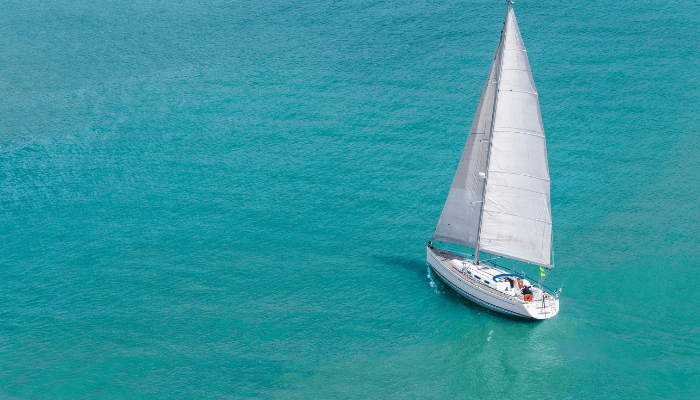
Catamarans refer to twin-hulled structures that are attached by specialized members to provide strength. The term originates from the South Indian phrase for “tied pieces of wood”, as this was the manner in which traditional sailboats were built in the subcontinent.
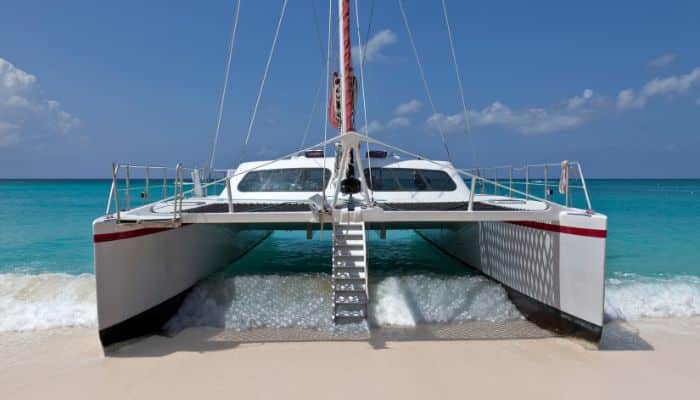
Twin hulls offer an increased level of stability. In addition, if designed properly the vessel will have a much higher speed than conventional crafts owing to lower wetted-surface resistance forces.
On the other hand, extensive care must be taken in designing the vessel, or else the resistive forces can exceed the values found in monohulls.
Multi-hull crafts, or simply multihulls, include vessels with anywhere between three to five hulls, although the three-hull variation is the most common. Such crafts are known as trimarans and are considered to be extremely stable owing to their large beam and lower centre of gravity.
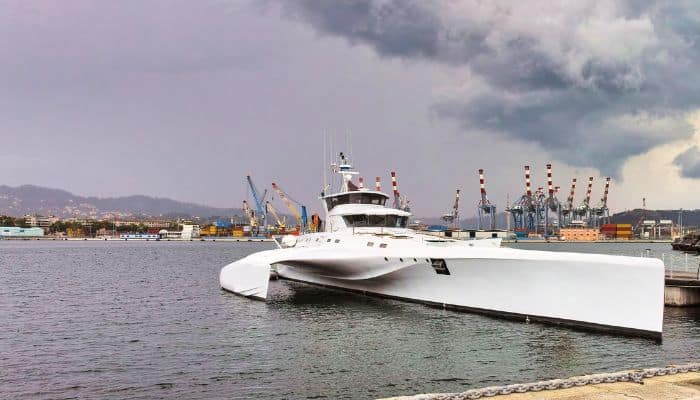
Four and five-hulled vessels are more difficult to manufacture and hence are rarely used commercially. An advanced form of the catamaran design is the SWATH version.
SWATH is an acronym for Small Waterplane Area Twin Hull, and it achieves unprecedented levels of speed owing to a considerably small waterplane area. To reduce this area, the hull has a reduced beam above the surface of the water, while underwater buoyant structures ensure that the vessel has the necessary weight balance.
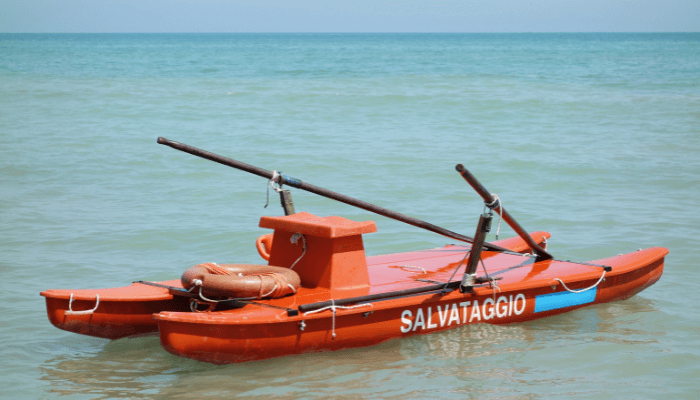
Common Monohull Designs
Monohulls are relatively easier to manufacture compared to multi-hull structures. Thus, there has been a wider range of innovations for this type of hull over the last thousand years.
The common classes of monohull crafts are – sailing dinghies, cutters, sloops, catboats, ketch and schooners.
A dinghy is a relatively common sailboat owing to its short overall length and ease of manoeuvring. They are used in competitions and in the port industry.
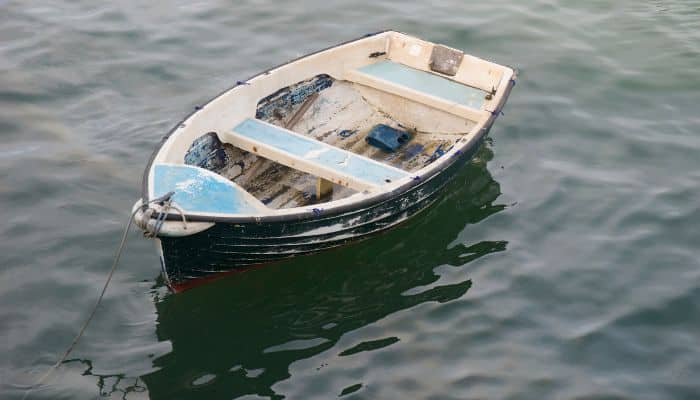
Generally, dinghies are used to transport people or small cargo to and from a larger vessel such as a cruise ship that is anchored away from the shore.
Such vessels may not be able to enter a port due to size and tonnage regulations. Hence, dinghies serve as the best mode of transporting essential goods between the port and the vessel.
Dinghies can have sails, such as the three-sailed variant consisting of the mainsail, jib and spinnaker. However, motor-powered dinghies are also commonly used especially as lifeboats onboard ships.
Cutters are another class of sailboats that are medium-sized and generally have three sails. The mainmast on which the sails are mounted is located near the stern of the ship to allow for larger sails to be used.
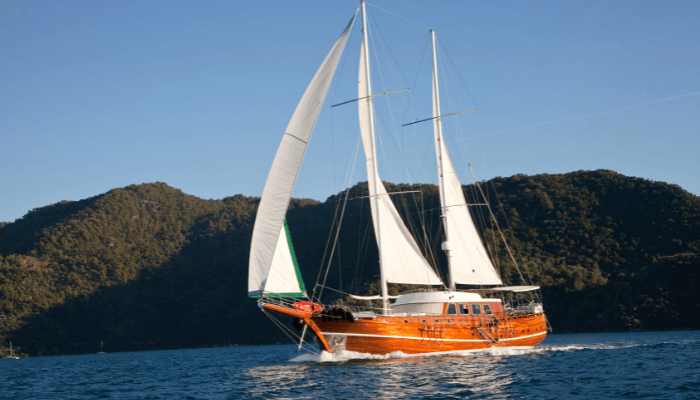
Cutters were commonly used in competitions as their design favours speed and agility. A different combination of the sails also allows cutters to be used for cruises and other recreational sailboats.
Sloops are similar to cutters and are the most commonly found sailboats. They are the standard in sail designs, with a two-sail configuration used for added manoeuvrability. They have a mainsail and a headsail called jib or genoa.
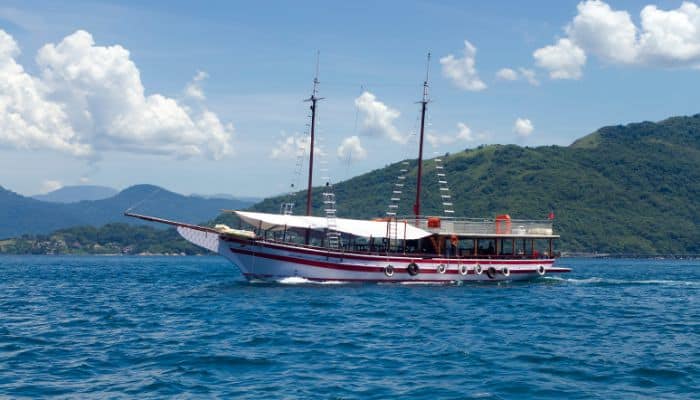
In addition to the generic sloop sail configuration, there is also a fractionally-rigged sloop in which one of the sails lies below the top of the mast.
This design allows the crews of smaller sloops to handle the craft while improving performance. Catboats are sailboats equipped with only a single sail. They are aimed at capacity rather than speed and have the mainsail mounted on a single mast.
For increased speeds, sails can be added to the rigging such that wind force is better optimized by the vessel.
The ketch is a sailboat that has two main masts- the main mast located around the midship, and the mizzen mast at the aft. The mizzen mast is generally smaller than the main mast and serves to add speed to the craft. The word ketch is derived from the word catch, denoting the manner in which the sails “catch” the wind as they move.
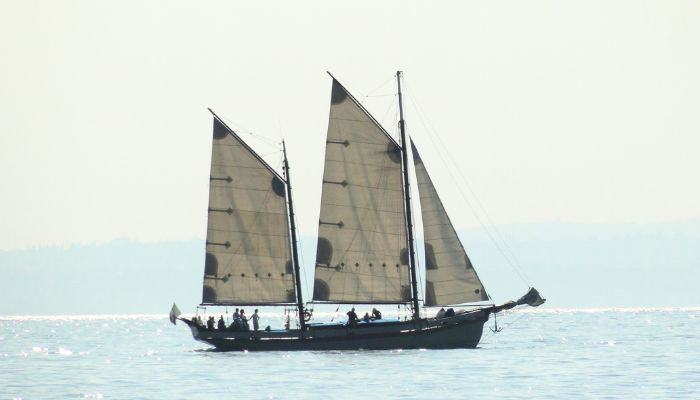
Schooners are a class of sailboats that can have more than two sails supported on masts known as the main mast and foremast. The foremast is located near the fore of the vessel and is slightly shorter than the main mast. In variations where additional masts are added to support more sails, they are positioned such that they remain shorter than the main mast depending on their sizes.
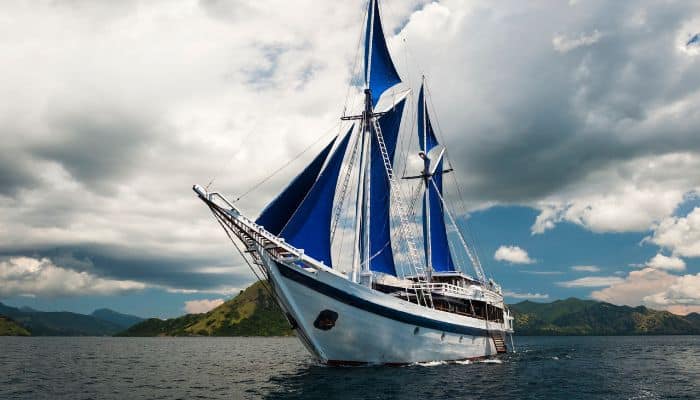
Keel Based Classification
The keel is the base of a vessel that provides a central backbone for the design of the entire structure. The boat keel is structurally relevant since it often has to carry the weight of the vessel.
In the case of sailboats, the keel is often what the entire craft rests on during transport by road or rail. Thus, keels need to have integral strength and be able to withstand a variety of forces.
Similarly, while sailing, the keel is the lowermost point of the vessel at which resistive forces act. As a result, many modifications are often made to the keel so that hydrodynamic features can be incorporated to reduce drag. Sailboats often sit high in the water owing to their design and shape.
However, for competition and performance crafts, it is essential that they try to sit as close to the surface of the water as possible without capsizing. Thus, the keel often plays the role of a central ballast, by integrating heavy iron or steel components so that the vessel draft increases.
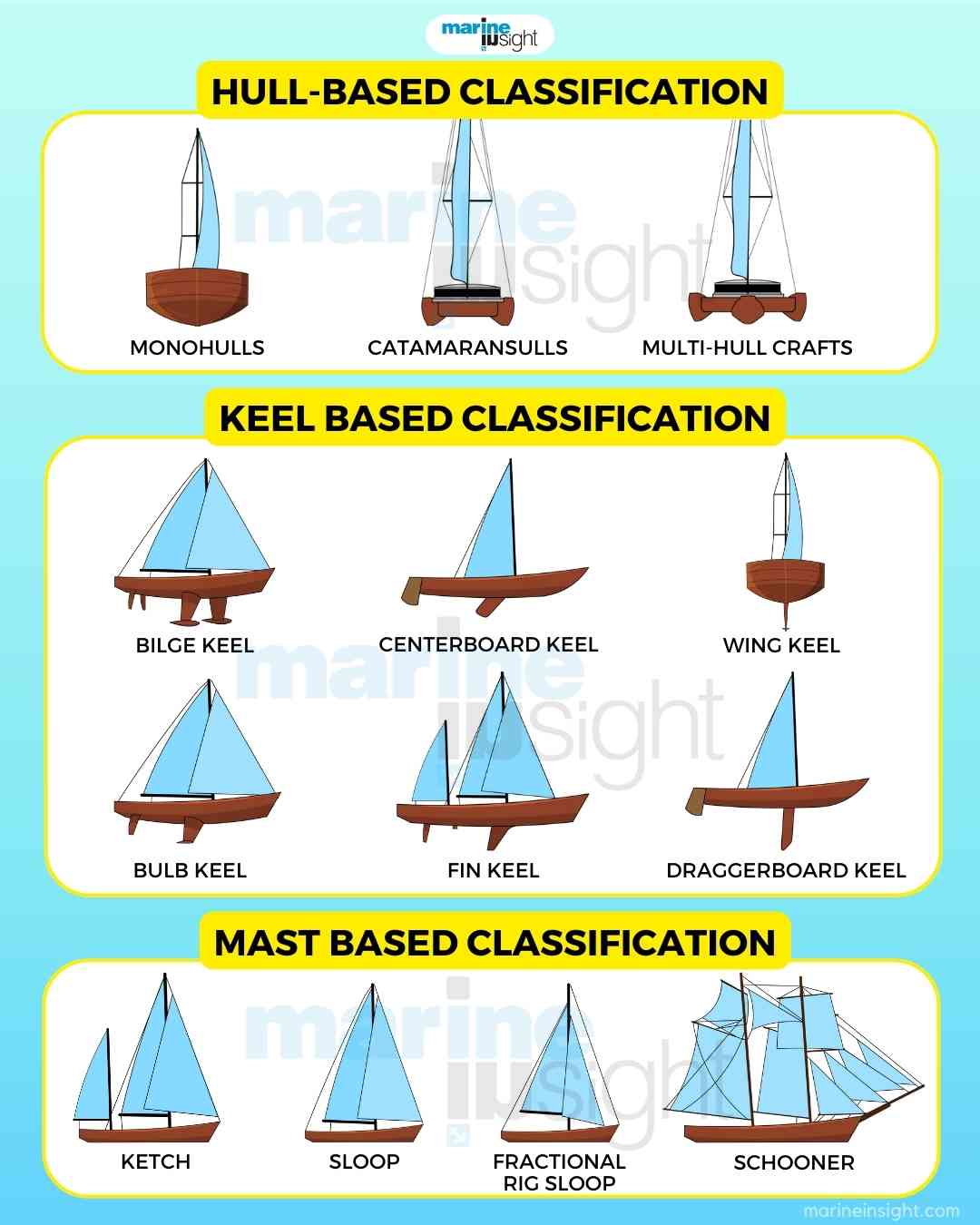
Based on keel type, there are several sailing boat variants found in the market. These generally have modified keels for improving performance and speed by integrating hydrodynamic features such as hydrofoils .
The types of keels commonly associated with sailboats are as follows: full-length keel, fin keel, centreboard keel, bilge keel, bulb keel and wing keel.
As the name suggests, full-length keels have keels that extend in the form of a long fin below the main structure of the ship. The fin runs along the length of the ship and often has an integrated rudder system attached at the stern.
The advantage of this type of keel is that it is easy to manufacture, with little cost in terms of development. Also, the ballast effect is provided by the extra weight of the full-length keel.
Since it can be difficult to enter certain ports or quays owing to the large draft that comes with this type of keel, manufacturers attempt to reduce fin depth and instead increase its length.
Fin keels , on the other hand, run only along certain regions of the sailboat. Located on the underside of the craft, it sticks out similar to the fin of a fish giving rise to this nomenclature. Since this type of keel must perform the same functions as the full-length keel without having a large length, the fin is deeper.
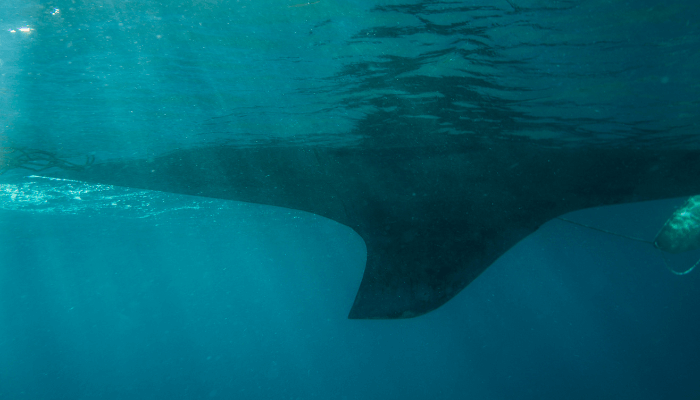
Owing to this large draft, it may be difficult to dock at certain ports due to depth restrictions. A key feature of this type of keel is that the rudder and manoeuvring systems remain independent of the fin keel, and are located at the extreme aft of the vessel. Centreboard keels are a common feature of high-performance crafts that take part in competitions. They are not restricted to monohull structures and are often found in catamarans and trimarans.
The centreboard keel employs a type of fin that is pivoted about a point on the keel of the vessel. By having a pivot, the natural flow of the vessel and surrounding water varies the depth at which the keel sits below the vessel. Similar to the fin keel, it only runs along a certain length of the vessel.
However, it is distinguished by being able to vary the angle of tilt with respect to the baseline of the craft. In some variations, the crew are able to manually change the angle of tilt, to change performance features during certain events and competitions.
Another variation of the centreboard keel is the daggerboard keel , which allows the fin to completely integrate into the underside of the vessel.
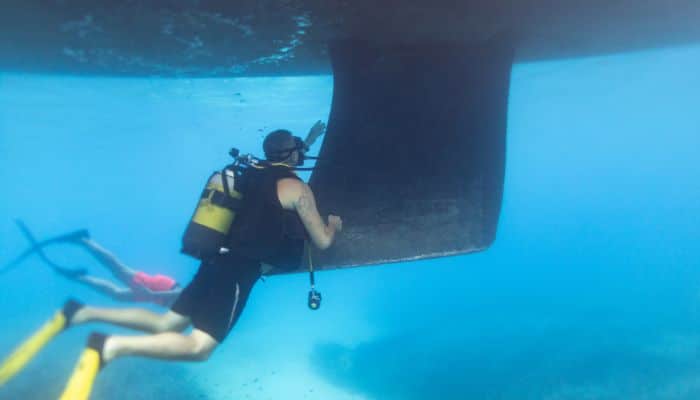
By providing a bay at the underside, the fin can be raised or lowered from the slot. In this type of keel, the raised configuration allows for higher speeds and reduced resistive forces. However, when lowered into the water, the vessel gains added stability and makes up for the loss in speed by improving hydrodynamic features.
Bilge keels refer to protrusions on the sides of the hull of the vessel, commonly called the bilges. These protrusions run along the length of the vessel while tapering into the hull panels at both ends.
The primary purpose of bilge keels is to improve the rolling stability of the craft. The fins stick out perpendicular to the hull and can vary in length depending on the purpose. For instance, sailboats require larger anti-roll stability and hence have long tapering bilge keels.
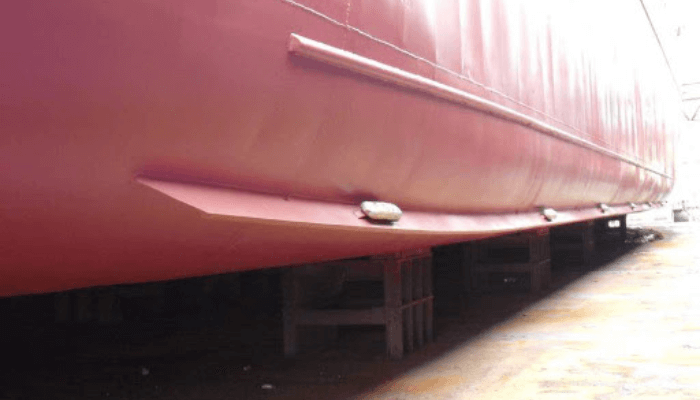
The bilge keels must be symmetrically placed on both the port and starboard sides, so as to ensure even hydrodynamic characters.
A bulb keel is a protrusion sticking vertically below the craft and terminating in an oblong-shaped hydrodynamic device called the bulb. The bulb acts as a 3D hydrofoil that improves the stability and handling of the vessel. Due to the increased wetted surface area, there is a slight drop in the speed, but it can be made up through superior handling capabilities.
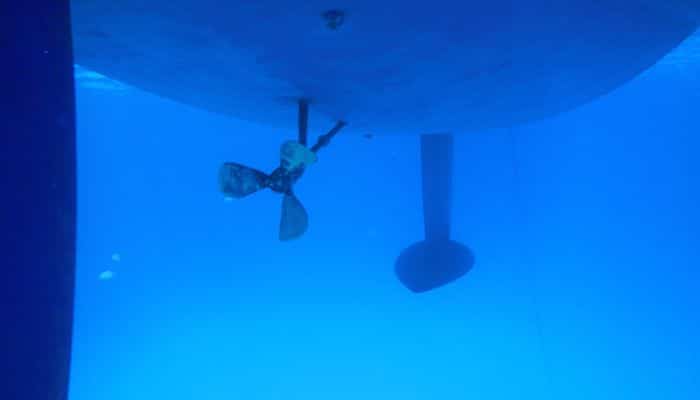
For smaller crafts, longer bulb keels are required, and as this length increases, the chance of accidental grounding of the vessel increases.
The last commonly found type of keel is the wing keel . The wing keel is similar to the bulb keel, except that instead of a bulb terminating a vertical protrusion, there are horizontal hydrofoils extending from the central shaft.
The primary purpose of the wings underneath the ship is to improve handling and stability. In addition, they slightly lift the craft above the surface of the water. As a result, the total wetted surface area remains constant and may even decrease. Thus, speed remains constant and may improve as the craft picks up velocity.
Mast Based Classifications
The mast of the vessel refers to a vertical shaft extending out of the deck which supports the sails and rigging. Older models of sailboats and ancient ships had masts constructed out of wood, while modern speed-oriented versions use galvanized steel or aluminium.
Aluminium has the benefit of being extremely light while still retaining its strength, which is important during harsh weather conditions.
The various mast-based classification includes – sloop, fractional-rig sloop, cutter, ketch, schooner and catboat.
The sloop is the most common mast type, where a single mast supports two sails called the headsail (or foresail) and the mainsail.
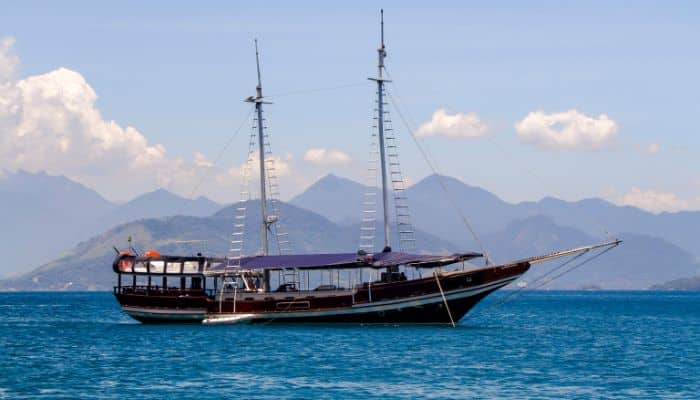
The headsail also goes by different names depending on the purpose and configuration of the sails.
In a fractional rig sloop , the forestay cable that is used to hoist the headsail is actually placed below the top of the mast. This configuration is particularly useful when it comes to performance, as the tip of the mast can be hauled towards the aft using stiff cables, and the sails can be collapsed.
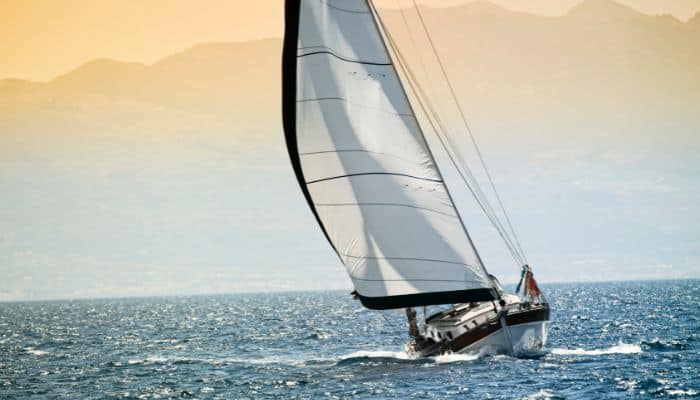
This is useful on days when wind power can be used to propel the sailboat, without the sails having to be fully extended.
Another useful feature of being able to trim or flatten the sails is that during particularly strong squalls of wind, the sails will not be punctured or ruptured due to the high wind pressure. The next type of mast configuration is the cutter. This involves a single mast supporting three sails- one mainsail, and two headsails known as the staysail hauled by the inner stay cable, and the jib hauled by the headstay cable.
The mast is located more towards the aft compared to the sloop, to allow for an easily manoeuvrable configuration. In addition, a wide range of sail arrangements makes it favourable for cruise operators and for competition purposes.
The ketc h has a two-mast configuration, with the aft mast known as the mizzen mast. The mizzen mast is located fore of the rudder post, and aft of the main mast.
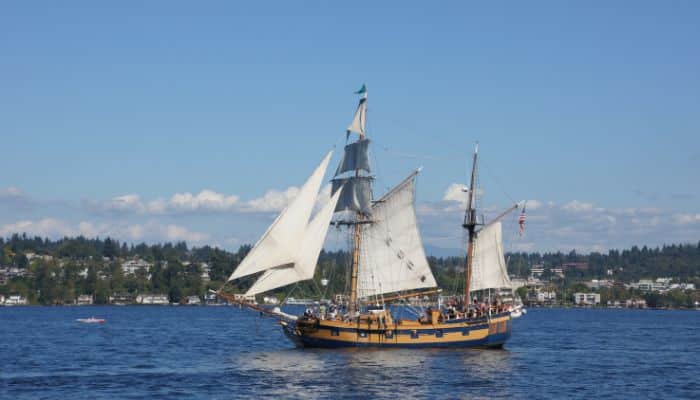
The mizzen sail rests on the mizzen mast. In general, the mizzen mast is slightly shorter than the main mast.
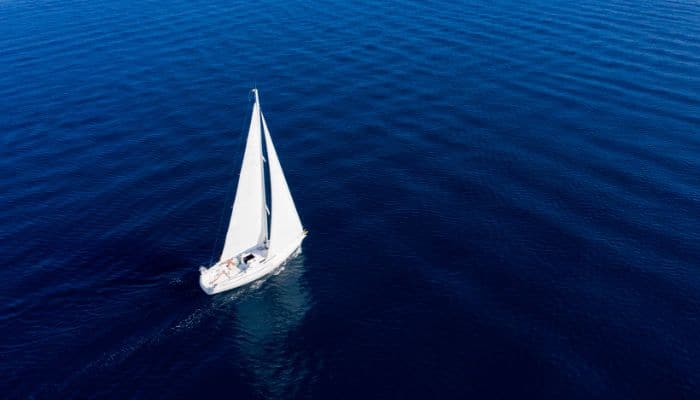
The main mast supports two sails known as the mainsail and the headsail.
The schooner is another configuration similar to the ketch, but where the aft mast is taller than the foremast.

Schooners can have multiple masts and are not restricted to commercial small and medium sailboats. The images of ancient ships that were used for trade and military purposes were often schooners having between four to six masts with an average of over ten sails each.
In addition, the sails of the schooner tend to lie along the length of the vessel, rather than along the beam. This is to prevent sail rupture during violent storms or during heavy winds. The catboat is one of the simplest configurations where only a single sail and mast arrangement are used.
The mast can be located either aft or fore of midships, with varying advantages to each configuration. The ease of design and construction makes it a favourable sailboat for beginners and trainees. However, the disadvantage behind the catboat is that the sail cannot be used to move against the direction of the wind, unlike other sail variations.
Apart from recreation purposes, sailboats are one of the most common types of vessels used in recreational purposes and competitions. They can vary in the hull, keel and sail configurations based on the primary purpose that they are intended to be used for.
For over five thousand years, sailboats have been in use, whether it has been for transportation in Ancient Egypt, or for sailing events in modern times. Technological advancements have turned the sailboat into a sleek, agile and fast vessel capable of reaching extremely high speeds by harnessing the power of the wind.
Whether it be for cruises or for racing events, sailboats and other such crafts continue to be a favourite choice for sailors.
Frequently Asked Questions About Sailboats
1. how many different kinds of sailboats are there.
There are many types based on their hull type- monohulls, catamarans and trimarans; keel type- fin keel, wing keel, daggerboard, centreboard; mast configuration and sails- sloop, fractional rig sloop, schooner, ketch, yawl, cutters and catch.
2. What is the most common type of sailboat?
The sloop is the most common sailboat. It has a mast, two sails, commonly a Bermuda rigged main and a headsail. They include a gaff rig, a mix of gaff and square rig or a Bermuda rig.
3. What is a four-masted sailboat called?
It is called a schooner. Traditional schooners have a gaff-rig, which means that they have a square topsail on the front of the mast. They were mainly constructed for carrying cargo, passengers and for fishing.
4. How many masts does a ketch have?
Ketch has two masts whose main mast is taller than the mizzen mast. It is similar to a yawl and has a triangular mizzen sail and a triangular or square headsail. Due to their smaller sails, they are easily manageable and preferred by sailors.
5. What is the most beautiful sailboat?
Some of the most beautiful sailboats in the world include Pelagic Australis, Thomas W Lawson, Royal Clipper, Barque Sedov and Amerigo Vespucci.
6. What are some popular sailboat brands?
Beneteau, Sparkman and Stephens, Oyster Yachts, Amel Yachts and Nautor’s Swan are some popular sailboat brands that sell the most number of sailboats yearly.
You Might also like to read
- Real Life Accident: Officer Of The Watch Ignores Lookout’s Warning, Ship Collides with Sailboat
- Introduction To Different Types Of Yachts
- 12 Sailing Books For Beginners
- The Ultimate Guide to Different Types of Boats – Top 20
- Main Types of Catamarans Used in the Shipping World
- What are Tug Boats – Types And Uses
Disclaimer: The author’s views expressed in this article do not necessarily reflect the views of Marine Insight. Data and charts, if used, in the article have been sourced from available information and have not been authenticated by any statutory authority. The author and Marine Insight do not claim it to be accurate nor accept any responsibility for the same. The views constitute only the opinions and do not constitute any guidelines or, recommendations on any course of action to be followed by the reader.
The article or images cannot be reproduced, copied, shared or used in any form without the permission of the author and Marine Insight.
Do you have info to share with us ? Suggest a correction

Latest Naval Arch Articles You Would Like :
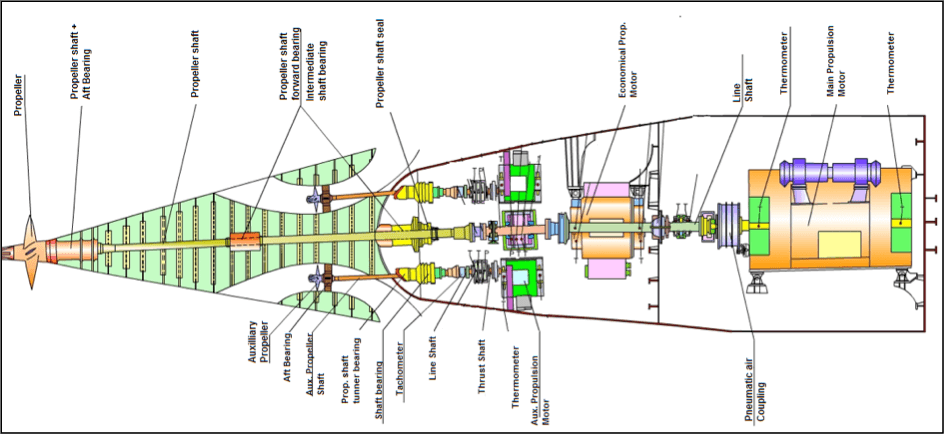
Different Systems on a Naval Submarine
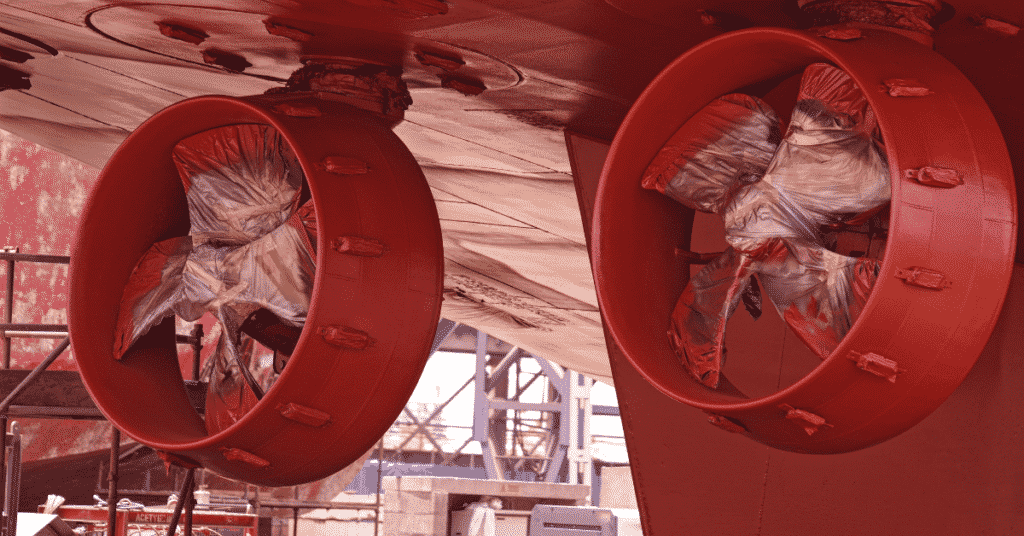
Marine Propeller Shaft – Design And Construction
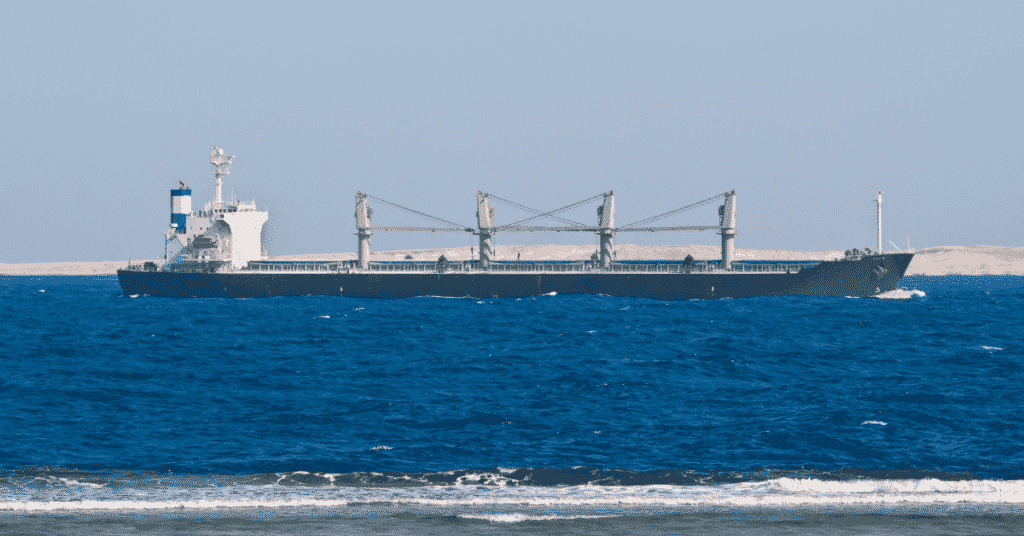
Understanding Design Of Bulk Carriers
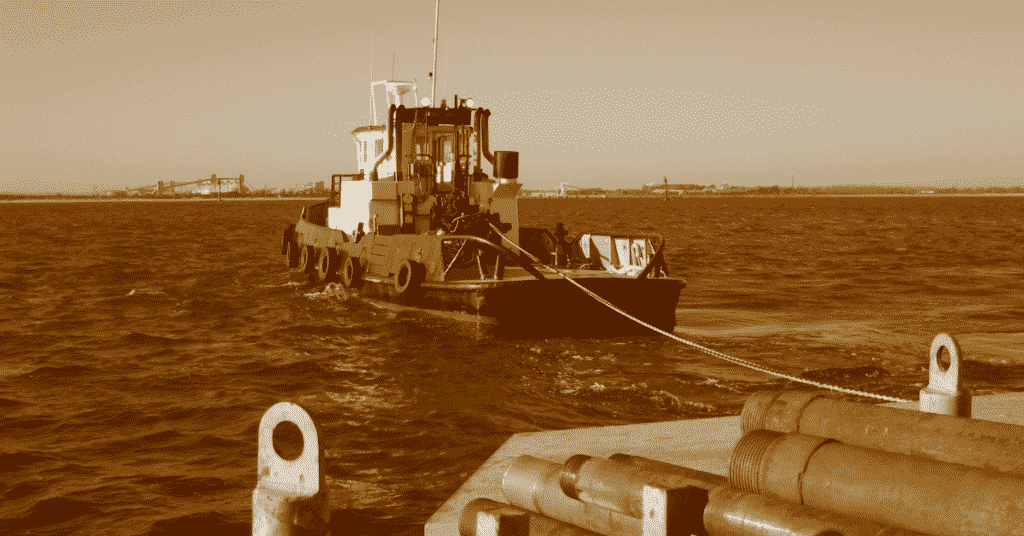
What is Bollard Pull – Everything You Wanted To Know
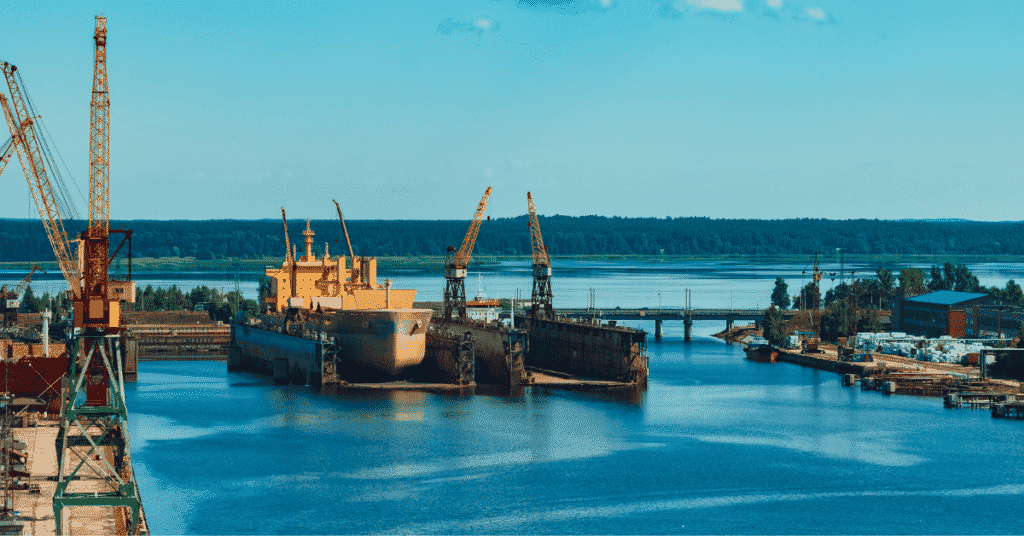
Understanding Ship Stability During Dry Dock
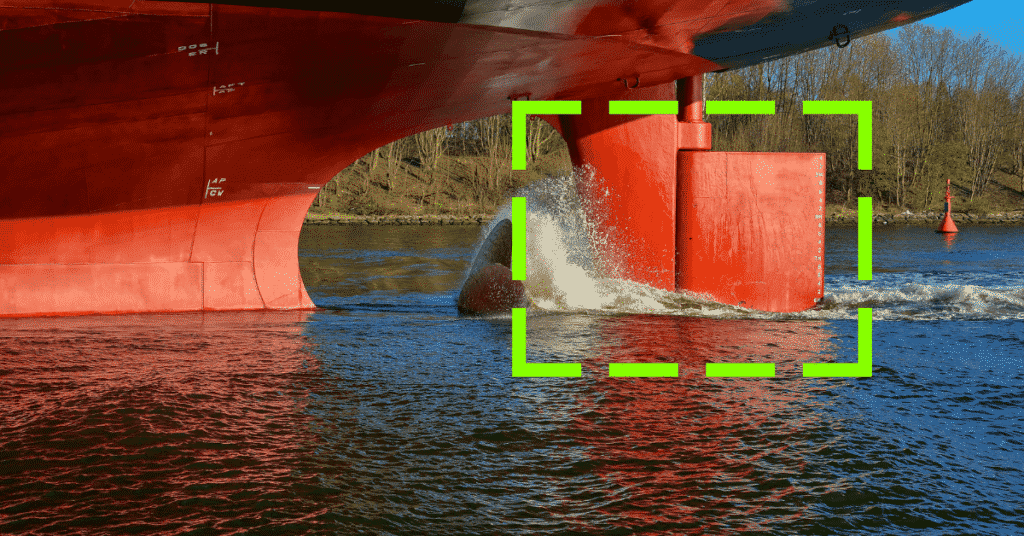
How Does A Rudder Help In Turning A Ship?
Web Stories
Subscribe To Our Newsletters
By subscribing, you agree to our Privacy Policy and may receive occasional deal communications; you can unsubscribe anytime.

About Author
Ajay Menon is a graduate of the Indian Institute of Technology, Kharagpur, with an integrated major in Ocean Engineering and Naval Architecture. Besides writing, he balances chess and works out tunes on his keyboard during his free time.
Leave a Reply
Your email address will not be published. Required fields are marked *
Subscribe to Marine Insight Daily Newsletter
" * " indicates required fields
Marine Engineering
Marine Engine Air Compressor Marine Boiler Oily Water Separator Marine Electrical Ship Generator Ship Stabilizer
Nautical Science
Mooring Bridge Watchkeeping Ship Manoeuvring Nautical Charts Anchoring Nautical Equipment Shipboard Guidelines
Explore
Free Maritime eBooks Premium Maritime eBooks Marine Safety Financial Planning Marine Careers Maritime Law Ship Dry Dock
Shipping News Maritime Reports Videos Maritime Piracy Offshore Safety Of Life At Sea (SOLAS) MARPOL

- Sailing Resources

Download this cheat sheet to sail faster, cheaper and smarter.
Types of Sailboats: A Guide to Sailing Craft
There are many different types of sailboats. Each type has its own characteristics and uses, so it pays to be familiar with them before deciding which one is right for you.
Here’s a quick rundown of the most common types of sailboats:
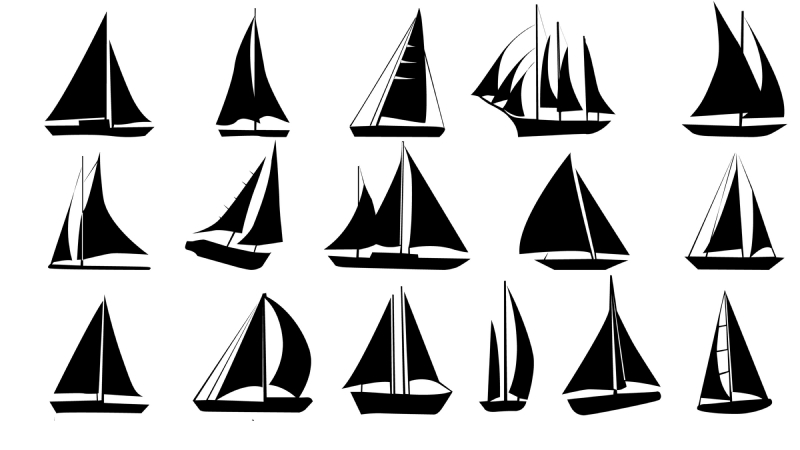
Types of sailboats by hull
- Monohull – A single-hull boat that has a flat bottom and straight sides, such as a sailboat or powerboat.
- Catamaran – An open boat with two parallel hulls and a deck connecting them.
- Trimaran – Similar to a catamaran but with three hulls instead of two.
Monohulls are probably the type of sailboat you’re most familiar with, and they’re also the most common. A monohull has one hull (duh), which means it’s shaped like a triangle or a rectangle.
These boats have been around since the very beginning of sailing, but they’ve undergone some pretty significant changes over time.
Today, modern monohulls come in all shapes and sizes—from small dinghies to massive yachts. Monohulls typically handle better than multihulls at high speeds because there is less surface area for air to flow across when wind pushes against them.
This makes them faster overall as well as easier to maneuver during races or other competitions where speed matters more than comfort
A catamaran is a vessel consisting of two hulls of equal size, connected by a frame or trampoline. The advantage of a catamaran over a monohull is that it has more stability, thereby reducing the need for ballast weight.
Catamarans are often faster than comparable monohulls because they can utilize the larger water surface area to make use of the wind.
Photo credit: Emma Dau
A trimaran is a multihull boat with three hulls in a triangular formation. The three hulls are connected by two parallel beams, called the trampolines or outriggers.
The center hull is the largest, and it houses most of the living space on board. The outer two hulls are smaller, and they serve as steering and propulsion.
Types of sailboats by their keels
Keels are the most common type of sailboat propulsion. They come in a few different varieties:
- Full-length keel – This is the most common and traditional form of keel, where the full length of the boat is submerged to provide stability.
- Fin keel – This type of keel has a fin at its tip that extends down below the waterline for greater stability at slower speeds.
- Bilge keel – A bilge-shaped or rounded bottom section forms this type of sailing vessel’s hull shape, providing extra stability in rough waters because it sits lower to the water than a full-length or fin keel does.
- Centerboard or dagger board boat – A centerboard or dagger board helps keep these boats upright by allowing them to slide up out of harm’s way when necessary; it also makes them more maneuverable than other types of sailing vessels due to their ability to pivot on an axis around its mast (or “mast”).
Full-length keel
A full-length keel is a common feature for sailboat hulls, and it’s one that you’ll see on many cruising sailboats.
This type of keel runs from the bow to the stern, completely encasing the hull in lead. It provides stability and resistance to leeway when sailing or motoring at low speeds.
It’s often used on boats that are designed for long distance cruising or racing (though not exclusively). A full length keel also allows you to take advantage of all available wind angles, giving your boat maximum speed potential as well as response time in rough conditions.
The main drawback of this type of keel is that it makes tacking more difficult, especially when there isn’t much wind or current pushing against your boat’s side.
If you’re trying to tack with a full-length keel on an empty lake during high winds and waves, don’t expect an easy transition back into forward motion once you’ve completed your 180° turn!
Fin keel sailboat
Fin keel boats are those with a fixed keel that runs along the centerline of the bottom of the hull.
his type of sailboat is generally considered to be easier to handle than other types of boats and they’re good for beginners.
he disadvantage is that they can over-steer when sailing close to the wind, especially in light winds. There are two major variations on this type:
- Fin keels have a bulbous end that acts as a stabilizing surface when going upwind or downwind, but it can cause problems if you try to sail directly into the wind (you’ll see what I mean if you look at pictures of fin-keeled boats).
- Finless spade rudder versions place their weight over the centerline instead, so they’re less affected by changes in wind angle than their finned counterparts—but they lack maneuverability in tight quarters or when sailing under outboard motor power alone.
Bilge keel sailboat
A bilge keel sailboat is one that has a keel that is set below the bottom of its hull.
This type of keel offers stability and control, which makes it ideal for smaller boats used for day sailing and non-competitive racing.
Bilge keels are used on many types of boats, including catamarans and trimarans; however, they are most often seen on small sailboats.
Centerboard or Dagger board sailboat
A centerboard is a retractable keel that is lowered down into the bottom of the boat.
The centerboard is lowered when sailing upwind, so that it can reduce drag on the hull. In this way, centerboards are similar to dagger boards and other retractable keels.
Centerboards are used on smaller boats because they make these boats lighter and more maneuverable than boats with fixed keels.
Because they’re lighter, you’ll also find that some centerboard boats are faster than fixed-keel boats—they have less drag from their hulls when moving through water at high speeds.
Many people use these small racing yachts for day trips or short coastal voyages due to their ease of handling in windy conditions near shorelines.
However, they’re not always suitable for longer journeys because their lack of stability makes them prone to capsizing or rolling over if there’s too much weight distributed towards one side of the vessel (i.e., if you put too much fuel in one side).
Types of sailboats by mast configuration
The configuration of the mast(s) is also important. There are three main types of masts: the mainmast, foremast and mizzenmast.
The mainmast is usually the tallest mast on a sailboat and carries most of its weight; it’s typically used as an additional support in heavy winds.
The foremast is just behind the mainmast in terms of height and generally has less sail area than either of them.
The mizzenmast sits further back than both these masts, but isn’t as tall as one or two feet high; this type generally supports light canvas-like sails that assist with steering when underway on open water without wind conditions favorable enough for full operation from other parts of your vessel’s structure (such as during calms).
A sloop is a sailboat with a single mast. The mainmast typically has a fore-and-aft rig, where there is one sail attached to it and it runs from front to back along its length.
The mast is directly behind the center of gravity of the boat (just where the keel runs).
t’s stepped at its forward end just ahead of amidships, which means that it’s slightly tilted down toward the bow; this helps keep any water that comes over it from running back down onto your deck.
Sloops can have either a fractional or full keel—or no keel at all! A fractional keel extends below but not far beyond amidships; such boats are often referred to as centerboard yachts rather than sloops when they lack mainsails (since they don’t look like traditional gaff rigs).
A full keel curves downward in front of amidships, then rises up again into an underwater hull extension called deadrise aft (which also increases speed by reducing drag), where you will find most modern sailing vessels located today because they offer greater stability without sacrificing performance or maneuverability as much as longer fin keels do.*
A cutter is a sailboat with two masts, which can be either a sloop or a ketch. The mainmast is taller than the shorter mizzen mast, and they are both located forward of the rudderpost.
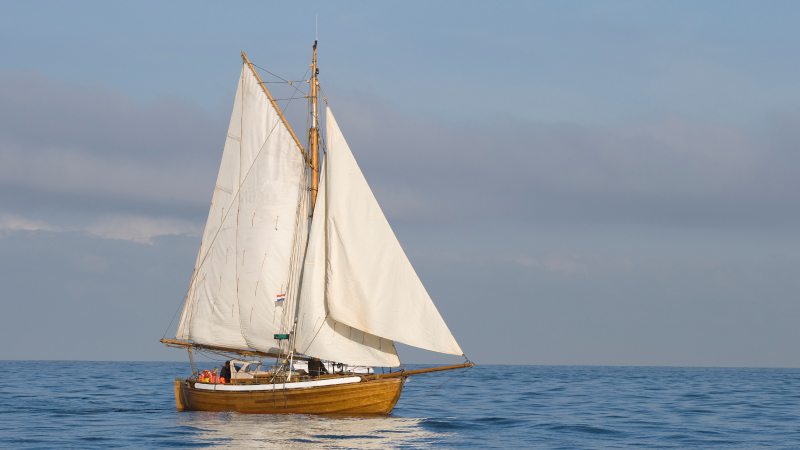
Cutters are among the most common types of sailboats. The design helps balance out heavy winds in all directions with its two sails and symmetrical rig (mainsail on one side, jib on the other).
You may also see this type of sailing vessel referred to as brigantine or barquentine depending on its rigging arrangement.
A ketch is a sailboat with two masts. The mainmast is larger than the foremast and has the same length as the hull.
This type of sailboat usually has a jib on the main, and a staysail or mizzen on its smaller topmast.
Ketch-rigged boats can be identified by their triangular shaped sails and their “V” shape when viewed from above.
A spinnaker is another type of sail that can be used on a ketch rig boat, but it is only used when sailing downwind at high speeds
A schooner is a sailboat with two (or more) masts. The foremast is usually shorter than the mainmast.
Schooners were first developed in the Netherlands and northern Germany in the 17th century.
The design was meant to improve on the square-rigged ships that were common at the time by increasing speed, maneuverability and cargo capacity.
Schooners became popular in North America in the 18th century due to their ability to navigate shallow waters and for their speed.
A yawl is a two-masted sailing vessel. The mainmast is stepped further aft than on a sloop, and the mainsail is hoisted from a boom. The jib will be hoisted from a bowsprit.
The catboat is a type of sailboat, with a single mast, usually a Bermuda rig, and a single headsail. It has a flat-bottomed hull and may be rigged as a sloop, cutter or yawl. The centerboard may be retractable or fixed.
The mainmast is often in the middle of the boat (centerboard amidships) but can also be near the bow (centerboard forward). Catboats are usually gaff rigged; if they have more than one jib on each side they are called cat schooners.
Photo Credit: Leonhard Peters
Other “types” of sailboats
A dinghy is a small boat used for racing, or for towing behind a larger vessel. The term is also used to refer to any small craft or boat. A dinghy may be propelled by oars, sails, or motors.
Sailing Dinghies were usually small undecked boats carried aboard larger ships as part of the ship’s complement and launched or lowered on deck when required.
While most people today reserve the term “dinghy” for small human-powered vessels such as inflatables that are suspended from another boat’s deck by ropes or cables (rather than being carried), this usage has not always been so clearly defined.
Photo credit: Ludomil Sawicki
A dory is a small, flat-bottomed boat with a single mast and a lug sail. It was used mainly as a fishing boat in the 19th century but has also been used as lifeboats on the Titanic and Essex. A dory was also used to rescue survivors of the sinking of the Essex in 1820.
A drift boat is a boat that’s designed to be sailed or rowed with no sail. It can be any size, but usually refers to small boats, often used for fishing.
A drift boat could also be a rowing boat with a centerboard, which is lowered during sailing to provide greater stability.
Alternatively, it may refer to a traditional sailing dinghy (a small boat) that has been rigged so that all sails are furled while under way and only used as oars when stopped or nearly stopped—with the exception of jibing maneuvers where they’re deployed briefly while tacking or gybing in order to keep heading straight into the wind until they can once again use their oars without fear of capsizing due to excessive speed during maneuvers.
Cruising sailboat
Cruising sailboats are designed for long distance travel. They are typically larger than day sailing boats but smaller than ocean racers. They can range from 20 feet to over 100 feet in length.
A daysailer is a small, simple sailboat. Daysailers are usually used for short trips on inland waterways and are often single-masted boats with a jib and mainsail. They’re also less than 18 feet long, making them easy to carry and launch at the dock.
Daysailers come in all shapes and sizes, but they tend to be either catboats or ketches that have been designed with easy handling in mind. A catboat has two flat sides, while a ketch has three flat sides—two parallel hulls connected by stays (or “booms”) that form an X shape across the boat’s cockpit (the area where you sit when sailing).
Both types of sailboats can be rigged to be sailed by one person or two persons together; however, yachtsmen typically prefer two people so that one person can steer while another person adjusts lines as needed during maneuvers such as tacking (turning into wind) or jibing (changing direction of travel by turning 90 degrees).
Racer-Cruiser
Racer-cruisers are fast, responsive and can race or cruise in shallow waters. These boats are highly maneuverable because they have a high center of gravity and lack ballast.
They’re good for racing but not so much for cruising: racer-cruisers don’t have much room below deck, which isn’t ideal for taking long trips with lots of gear onboard.
They’re also not recommended if you want to sail in light winds—the lighter the air pressure, the more difficult it becomes to keep your boat moving forward on course when it’s lightweight (due to its lack of ballast).
A skiff is a type of sailboat. It is usually small and light with a single mast located forward of the center of buoyancy (the place where the boat’s weight is centered). Skiffs are often used for racing or fishing, but they can also be used in shallow waters.
They may look like dinghies, but they don’t have as much freeboard (distance between the waterline and deck).
There are many different kinds of sailboats
As you can see, there are many different types of sailboats. It’s important to know the types of boats that are available so that when you’re shopping for one, you’ll have a better idea of what kind will be right for your needs and desires.
Mike Sellers
Types of Sailboats: Essential Guide for Every Sailor
Sailboats have been an essential part of human history, contributing to exploration, trade, and leisure. With a myriad of designs and sizes, these versatile vessels cater to various purposes and preferences. The defining characteristics of sailboats come from their rigging, sails, and hull design.
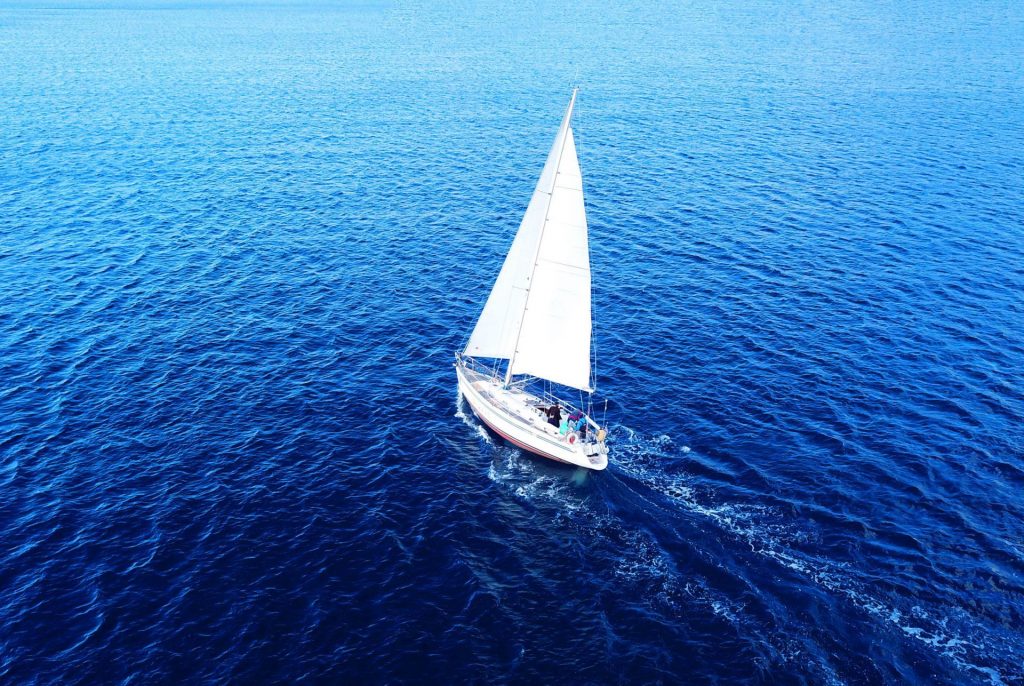
The basics of sailboat design play a significant role in the classification and function of these vessels. Hull shapes, keel types, and construction materials contribute to the speed, stability, and maneuverability of sailboats. Additionally, rigging and sails come in various shapes and sizes, which influence sailing performance and handling.
Key Takeaways
- Sailboats are classified by hull design, rigging, and sails that serve specific purposes.
- Designs and materials have a direct impact on the performance and handling of sailboats.
- A wide range of sailboat types exists, which cater to different needs and preferences.
Basics of Sailboat Design
Sailboats come in various shapes and sizes, designed for different purposes and sailing conditions. One can classify sailboats based on hull types, keel types, and mast configurations. This section will briefly discuss these basic components of sailboat design.
There are mainly two types of hulls: monohull and multihull.
- Monohull : This is the traditional and most common type of sailboat hull. It consists of a single hull, providing stability through the use of a keel or centerboard. Monohulls come in various shapes and sizes, suitable for various sailing conditions.
- Catamaran : Catamarans have two parallel hulls of equal size, offering increased stability and speed compared to monohulls. They are commonly used for cruising and racing.
- Trimaran : Trimarans have three hulls, with a larger central hull and two smaller outrigger hulls. This design offers even more stability and speed than catamarans.
The keel is an essential component in sailboat design, helping with stability and performance. There are various keel types, including:
- Full keel : This traditional design features a long and wide keel that extends along the boat's bottom. It offers good tracking and stability but sacrifices speed and maneuverability.
- Fin keel : Fin keels are shorter and deeper than full keels, providing a better combination of stability and maneuverability. These are common in modern monohull sailboats.
- Bulb keel : A bulb keel features a fin keel with a heavy bulb at the bottom, which concentrates the boat's weight, increasing stability and performance in rough conditions.
- Swing keel or centerboard : Swing keels and centerboards can be raised or lowered, allowing the boat to adapt to different water depths and sailing conditions. They are common in smaller boats and racing sailboats.
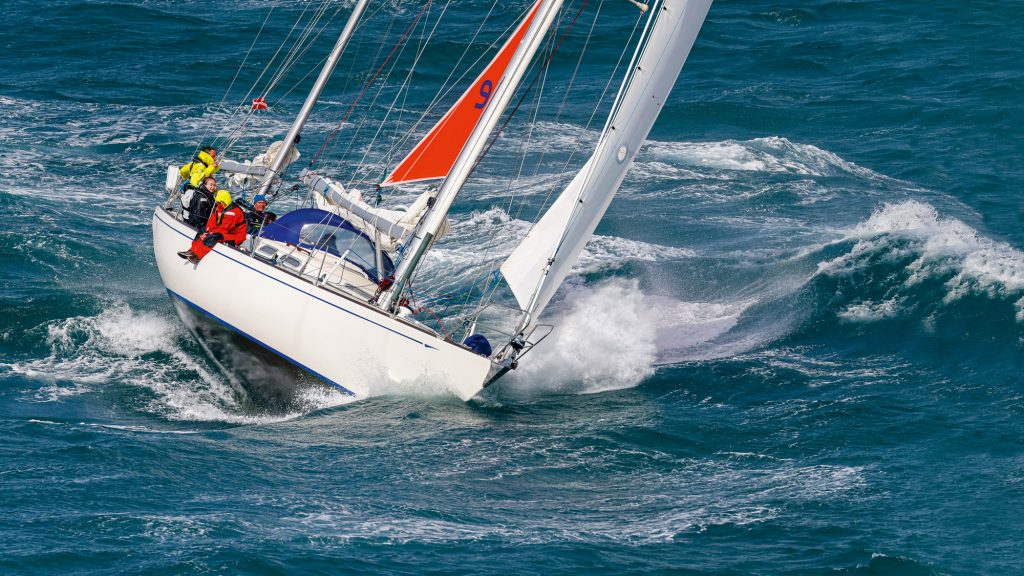
Mast Configuration
The mast configuration affects the sail plan and overall performance of a sailboat. Some common mast configurations include:
- Sloop : This is the most popular mast configuration and features a single mast with a mainsail and a headsail. The simple design makes it easy to handle and suitable for various sailing conditions.
- Cutter : Similar to the sloop, the cutter also has a single mast but carries two headsails, providing more sail area and better performance in heavy weather.
- Ketch : A ketch configuration has two masts: a taller main mast and a shorter mizzen mast. This design offers more flexibility in sail combinations and better balance in different sailing conditions.
- Yawl : Similar to a ketch, a yawl also features two masts but the mizzen is located further aft and is smaller. This design provides better balance and control, particularly in downwind sailing scenarios.
In conclusion, the basics of sailboat design involve selecting the appropriate hull type, keel type, and mast configuration for the desired sailing performance and conditions. Understanding these concepts can help sailors make informed decisions when choosing a sailboat or planning their sailing adventures.
Rigging and Sails
When it comes to sailboats, the rigging and sails play a crucial role in the boat's overall performance and capabilities. This section will briefly cover popular rig types and sail types seen on different sailboats.
There are several types of rigs commonly found on sailboats:
- Sloop : Sloops are the most common type of rig found on modern sailboats. They have a single mast with a mainsail and a single headsail, typically a genoa or jib.
- Ketch : Ketches have two masts, with the main mast taller than the mizzen mast situated aft. They carry a mainsail on the main mast and a mizzen sail on the mizzen mast. Ketches benefit from easier handling and reduced sail area under strong winds.
- Yawl : Similar to ketches, yawls have two masts, but the mizzen mast is smaller and sits further aft, behind the rudder post. Yawls are often chosen for their graceful appearance and improved balance.
- Schooner : Schooners have two or more masts, with the aft mast(s) typically taller than the forward mast(s). Schooners can handle more sails, offering increased sail area for better performance, especially downwind.
- Catboat : Catboats are single-masted sailboats with a single, large mainsail and no headsails. They have a wide beam, which provides stability and ample space for passengers.
- Cutter : Cutters are similar to sloops but carry two headsails, usually a jib and staysail. Cutters may have multiple headsails for increased versatility in various wind conditions.
In addition to the types of rigs, there are also several types of sails used on sailboats, including:
- Mainsail : The primary sail attached to the back of the main mast. It is typically raised on a track or luff groove and managed by a combination of halyard, sheet, and boom vang.
- Genoa : A large triangular sail that overlaps the mainsail, typically used in light winds to provide additional surface area for better performance.
- Jib : A smaller, non-overlapping triangular sail attached to the forestay. Jibs are easier to manage than genoas and are used in a variety of wind conditions.
- Spinnaker : A large, lightweight sail used primarily for downwind sailing . Spinnakers are often brightly colored and shaped like a parachute to catch wind efficiently.
- Staysail : A smaller sail typically used in cutter rigs, positioned between the main mast and the forestay. Staysails provide additional sail area and versatility in varied wind conditions.
Understanding the relationship between sail and rigging can help sailors optimize the performance of their sailboats. With various options for rig types and sail types, each sailboat can be configured to meet the unique needs of its skipper and crew.
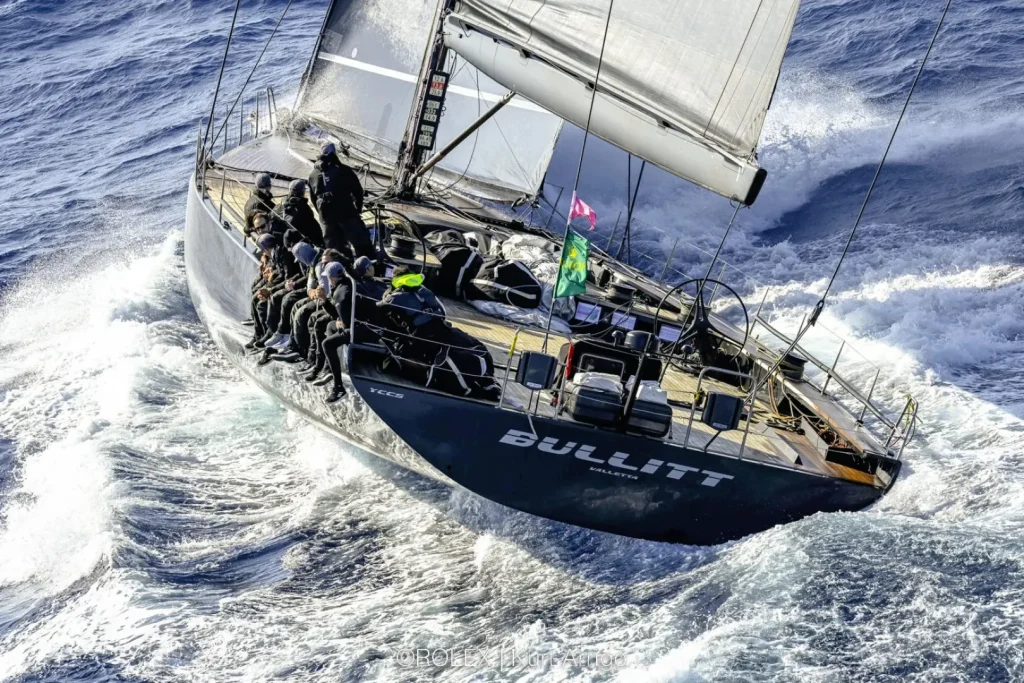
Classes and Types of Sailboats
Monohulls are the most common type of sailboats, consisting of a single hull that provides stability and balance. They come in various sizes and designs, depending on their intended use. Some popular monohull sailboats include the Optimist , Finn, and Sunfish, which are frequently used for racing and recreational sailing. Monohulls tend to have a deeper draft, requiring more water depth than their multi-hull counterparts.
Multihulls, also known as multi-hull sailboats, are a more modern innovation in sailing. They feature two or more hulls connected by a frame or bridgedeck. This design offers increased stability and speed over monohulls. Some common types of multihulls are catamarans (with two hulls) and trimarans (with three hulls). Due to their wider beam and shallower draft, multihulls are particularly suitable for cruising in shallow waters and provide more living space on board.
One-Design Sailboats
One-Design sailboats are a specific class of racing sailboats in which all boats are built to the same design specifications, ensuring that the competition focuses on the skill of the sailor rather than the design of the boat. These boats must adhere to strict rules and standards, with minimal variations allowed in terms of hull shape, sail area, and rigging. Some popular one-design sailboats include the Enterprise and the aforementioned Optimist and Finn sailboats.
Dinghies and Skiffs
Dinghies and skiffs are small, lightweight sailboats that are often used for sailing classes, short-distance racing, or as tenders to larger boats. Dinghies usually have a single mast with a mainsail and sometimes a small jib. Some popular types of sailing dinghies include the Optimist, which is specifically designed for children, and the versatile Sunfish sailboat. Skiffs, on the other hand, are high-performance sailboats primarily used for racing. They have a larger sail area relative to their size and typically include features such as trapezes and planing hulls, which allow for faster speeds and greater maneuverability.
In conclusion, there are various classes and types of sailboats, each with its own unique features and characteristics. From the simplicity of monohulls to the stability and speed of multihulls, and from the fair competition of one-design sailboats to the excitement of dinghies and skiffs, there is a sailboat to satisfy every sailor's preferences.
Sailboat Size and Use
When exploring the world of sailboats, it's important to understand their different sizes and purposes. Sailboats can be categorized into three main types, each with unique characteristics and uses: Day Sailers , Racing Sailboats, and Cruising Sailboats .
Day Sailers
Day Sailers are small sailboats typically ranging from 10 to 24 feet in length. These boats are perfect for short sailing trips and are easy to maneuver for beginners. They have limited accommodations on board, providing just enough seats for a small group of people. Some popular day sailer models include the Laser, Sunfish, and Flying Scot. Lightweight and agile, Day Sailers are often used for:
- Recreation: casual sailing or exploring nearby waters with family and friends
- Training: beginner sailing lessons or practicing sailing techniques
- Competition: local club races or interclub regattas
Racing Sailboats
Racing Sailboats are designed to provide maximum speed, maneuverability, and efficiency on the water. Sizes may vary greatly, from small dinghies to large yachts. Key features of racing sailboats include a sleek hull shape, high-performance sails, and minimalistic interiors to reduce weight.
Career racers and sailing enthusiasts alike participate in various types of racing events , such as:
- One-design racing: all boats have identical specifications, emphasizing crew skill
- Handicap racing: boats of different sizes and designs compete with time adjustments
- Offshore racing: long-distance racing from one point to another, often around islands or across oceans
Cruising Sailboats
Cruising Sailboats are designed for longer journeys and extended stays on the water. They typically range from 25 to 70 feet in length and provide comfortable accommodations such as sleeping cabins, a galley, and storage spaces for supplies and equipment. Sailing cruisers prioritize stability, comfort, and durability for their voyage.
Here are some common types of cruising sailboats:
- Cruiser-racers: These boats combine the speed of a racing sailboat with the comfort and amenities of a cruising sailboat. They are ideal for families or sailors who enjoy participating in racing events while still having the option for leisurely cruises.
- Bluewater cruisers: Designed for handling the world's most demanding ocean conditions, bluewater cruisers are built with a focus on sturdy, self-reliant sailboats that can withstand long-distance voyages and challenging weather conditions.
- Multihulls: Catamarans and trimarans are gaining popularity in the cruising world for their typically more spacious interiors and level sailing characteristics. With two or three hulls, multihulls offer high levels of stability and speed for a comfortable cruising experience.
Understanding the differences between various sailboat types will help potential sailors select the perfect vessel for their sailing goals, skills, and preferences. Day Sailers, Racing Sailboats, and Cruising Sailboats each have their unique features, catering to distinct uses and sailing experiences.
Advanced Sailboat Features
Sailboats have evolved over time, and many advanced features have been developed to enhance performance and safety. In this section, we will discuss some of the key advanced features in modern sailboats, focusing on performance enhancements and safety/navigation.
Performance Enhancements
One critical component that impacts a sailboat's performance is the type of keel it has, which affects stability, resistance, and maneuverability . There are several kinds of keels such as fin keel , wing keel , and bulb keel . Fin keels offer low drag and high efficiency, making them suitable for racing sailboats. On the other hand, wing keels provide better stability at low speeds, while bulb keels provide a lower center of gravity to enhance overall stability and comfort during long voyages.
Another feature that contributes to a sailboat's performance is its sails and rigging. The jib is a triangular sail at the front of the boat, which helps improve its upwind performance. More advanced sailboats use a combination of shrouds , which are the supporting cables running along the sides of the boat, and stays , the cables that help hold the mast in place, to create a stable and efficient rigging system.
A sailboat's performance can also be influenced by the presence of a centerboard or daggerboard , which can be adjusted to optimize stability, maneuverability, and speed. When racing or navigating in shallow waters, retractable centerboards and daggerboards are particularly useful as they provide better performance and versatility.
Safety and Navigation
Safety and navigation onboard a sailboat relies on a combination of advanced gear and equipment. A modern sailboat is usually equipped with:
- GPS and chartplotters to assist with navigation and planning routes
- VHF radios for communication with other vessels and authorities
- Radar to detect obstacles, weather systems, and other vessels
- AIS (Automatic Identification System) which helps monitor nearby vessel traffic
The design of a sailboat's hull, rigging, sails, and hardware also contribute to its safety. The boom , the horizontal pole that extends the sail, should be properly secured and designed to avoid accidents while sailing. The keel , whether it's a fin, wing, or bulb keel, plays a vital role in the overall stability and safety of the sailboat. The choice of keel should be based on the intended use of the sailboat and the prevailing sailing conditions.
In summary, advanced sailboat features significantly improve the performance, safety, and navigation capabilities of modern sailboats. Innovations in keel design, rigging systems, and onboard navigational equipment have undoubtedly contributed to the overall enjoyment and safety of sailing.
Sailboat Ownership
Buying Considerations
When considering buying a sailboat , it is important to understand the different types of sailboats available and the purpose each serves. Sailboats can be broadly categorized into three types:
- Racing sailboats: Designed for speed and performance, with minimalistic interiors and advanced sail systems.
- Cruising sailboats: Built for comfort and longer trips, featuring more spacious interiors and amenities.
- Daysailers: Smaller, easy-to-handle boats that are often used for short trips and recreational sailing.
Prospective boat owners should consider factors such as boat size, type, budget, and intended use (solo vs. family sailing, charter operations, etc.). It's also essential to evaluate the availability of necessary gear and the level of experience required to handle the chosen sailboat.
Maintenance and Upkeep
Sailboat ownership involves maintenance and upkeep to ensure the boat remains functional, safe, and holds its value. Some common maintenance tasks include:
- Hull cleaning and inspection: Regularly inspect the hull for damages and clean off any growth to maintain performance and fuel efficiency.
- Antifouling paint: Apply antifouling paint to prevent marine organisms from attaching to the hull, which can negatively impact the boat's performance.
- Engine maintenance: Check and replace engine oil, inspect cooling and fuel systems, and clean or replace air filters.
In addition to regular maintenance, sailboat owners should also be prepared to replace or repair critical systems and components, such as:
- Sails: Monitor the condition of your sails and replace them as needed to maintain performance and safety.
- Rigging: Regularly inspect and maintain the standing and running rigging, and replace worn or compromised parts.
- Electronics and instruments: Ensure navigation systems, radios, and other electronic equipment are functioning properly.
Taking proper care of a sailboat can be time-consuming, and some owners may choose to charter their boats when not in use as a way to offset ownership costs. Others may opt for hiring professionals to manage routine maintenance, particularly when sailing solo or with limited sailing experience.
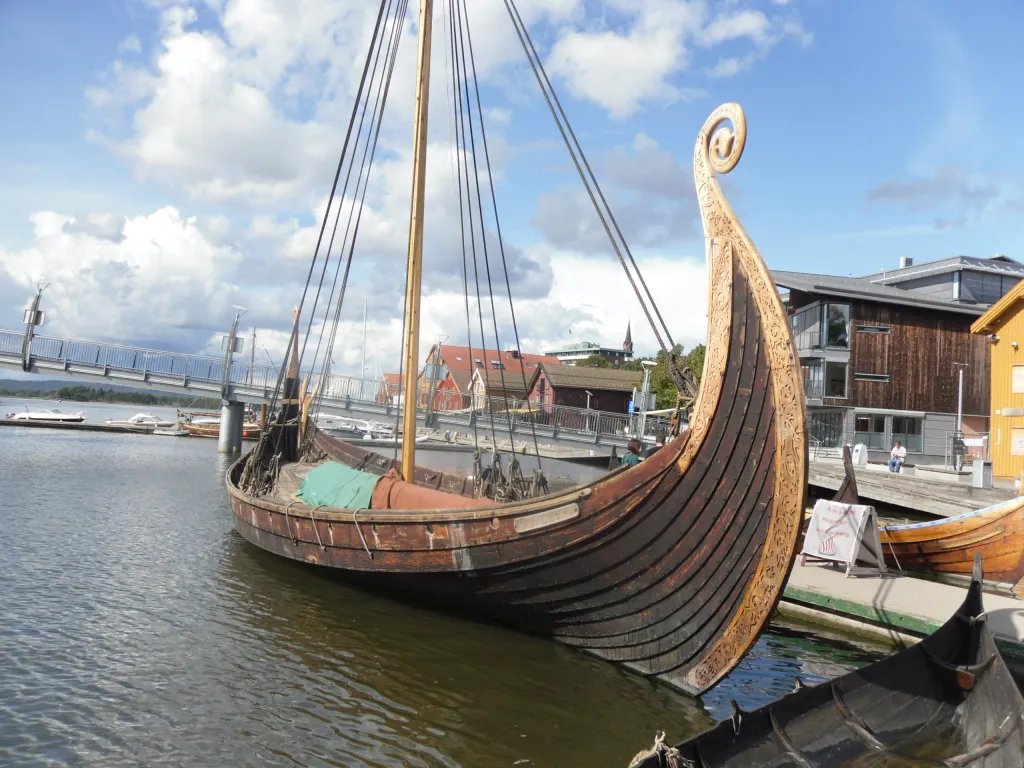
Historical and Special Sailboats
Tall ships and gaffers.
Tall Ships are large, traditionally rigged sailing vessels with multiple masts, typically square-rigged on at least one of their masts. Some examples of these ships include the clipper, brig, and square-rigged vessels. The clipper is a fast sailing ship known for its sleek hull and large sail area, while the brig features two square-rigged masts. Square-rigged ships were known for their impressive sail area and could cover large distances quickly.
Gaffers are a subset of historical sailing vessels with a gaff mainsail as their primary sail type. This gaff-rig is characterized by a spar (pole) that extends the top edge of the mainsail, giving it a quadrilateral shape to optimize wind coverage. Gaff mainsails were commonly used in England and influenced the development of other sailing vessels.
Classic and Antique Sailboats
Classic and antique sailboats refer to older, traditionally designed sailing vessels that have been preserved or restored. They often feature wooden construction and showcase a variety of rigging types, including gaff rigs and square rigs. These historical sailboats have unique designs, materials, and techniques that have since evolved or become rare.
Here are some examples of antique and classic sailboats:
- Sloop : A single-masted sailboat with a Bermuda rig and foresail
- Cutter : A single-masted vessel with a similar rig to the sloop, but with additional headsails for increased maneuverability
- Ketch : A two-masted sailboat with a smaller mizzen mast aft of the main mast
In summary, historical and special sailboats encompass a wide range of vessel types, from large, multi-masted tall ships to smaller, single-masted gaffers and classic sailboats. These vessels reflect the rich maritime history and the evolution of sailing techniques and designs over time.
Sailboat Culture and Lifestyle
Sailboat culture and lifestyle encompass a variety of aspects including racing events, leisurely cruising, and exploring new destinations. The main types of sailboats include racing yachts, cruising sailboats, and motorsailers, each offering a unique experience for sailors.
Regattas and Racing Circuits
A popular aspect of sailboat culture involves participating in regattas and racing circuits . These events create a competitive atmosphere and develop camaraderie among sailors. Racing sailboats are specifically designed for speed and agility , and sailors often team up to compete in prestigious races such as the Rolex Sydney Hobart Yacht Race or the America's Cup. Yacht clubs play an essential role in cultivating this competitive sailing environment.
Sailboat Charter and Tourism
Another facet of sailing culture is the sailboat charter and tourism industry, which allows people to experience the cruising lifestyle without owning a sailboat. Charters are offered for various types of sailboats, from family-sized cruising vessels to luxurious superyachts . Yacht sailing provides tourists with a unique travel experience, as they can explore diverse destinations, immerse themselves in local cultures, or simply relax on the open water.
Cruising sailboats are designed to provide comfortable living spaces and amenities, making them perfect for longer journeys or exploring remote destinations. Motorsailers, on the other hand, are equipped with both sails and engines, offering versatility and convenience for sailors.
Some popular sailing destinations include the Caribbean, Mediterranean Sea, and the South Pacific. These regions offer beautiful scenery, rich cultural experiences, and ideal sailing conditions.
The sailboat culture and lifestyle attract individuals who enjoy adventure, exploration, and camaraderie. From competitive racing events to leisurely cruising vacations, sailing offers diverse experiences that cater to a wide range of interests.
Frequently Asked Questions
What are the distinguishing features of different sailboat classes?
There are various sailboat classes, each with its own distinguishing features. Monohulls, for example, are the most common type of sailboat and have a single hull. Multihulls, such as catamarans and trimarans, have two or three hulls, respectively. These differences in hull design often affect the boat's stability, speed, and maneuverability.
Which sailboat types are best for novice sailors?
Novice sailors often benefit from starting with smaller, more manageable boats. Sailing dinghies and daysailers are popular choices due to their simple rigging and ease of handling. These boats typically have a single mast and a limited number of sails, making them ideal for beginners to learn sailing basics.
What are common types of small sailboats ideal for day sailing?
For day sailing, small sailboats such as sailing dinghies, day sailers, and pocket cruisers are ideal options. These boats usually range between 12 and 25 feet in length and offer simplicity, ease of handling, and portability. Examples of common day sailing boats include the Sunfish, Laser, and O'Day Mariner.
How do the purposes of various sailboat types vary?
Sailboats serve different purposes based on their design, size, and features. Daysailers and dinghies are ideal for short trips, sailing lessons, and casual outings. Racing sailboats, with their lighter weight and streamlined design, are built for speed and competition. Cruising sailboats, on the other hand, are designed for longer voyages and often include living quarters and additional amenities for comfortable onboard living.
What is considered the most popular class of sailboat for recreational use?
The most popular class of sailboat for recreational use often varies depending on individual preferences and local conditions. However, monohulls are commonly preferred due to their widespread availability, versatility, and affordability. Within the monohull class, boats like the Sunfish, Laser, and Catalina 22 are popular choices for their ease of use and adaptability to various sailing conditions.
Could you describe a sailing dinghy designed for two people?
A two-person sailing dinghy typically has a simple rig with a single mast and one or more sails, making it easy to handle for both experienced and novice sailors. The RS Venture , for example, is a popular choice for two-person sailing. It features a spacious cockpit, durable construction, and simplicity in its rigging and control systems. These characteristics make it an excellent option for recreational sailing, training, and even racing.
Related Articles

Palm Beach Boat Show 2024: A Must-Visit Nautical Extravaganza
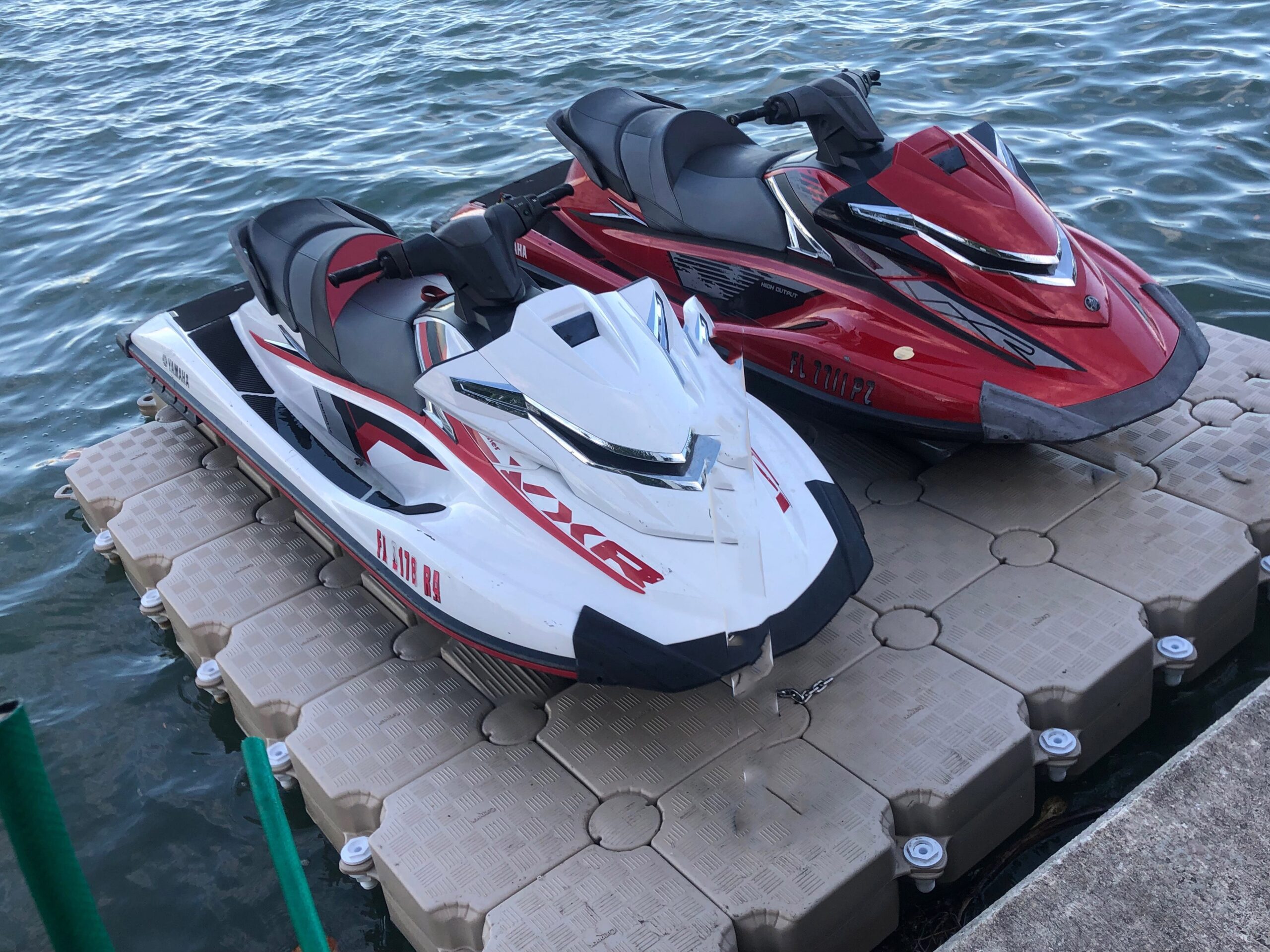
Jet Ski Floating Dock: Essential Guide for Easy Storage and Launch

Boat Transom: Essential Guide for Maintenance and Repair

Setting Hook Broughtons
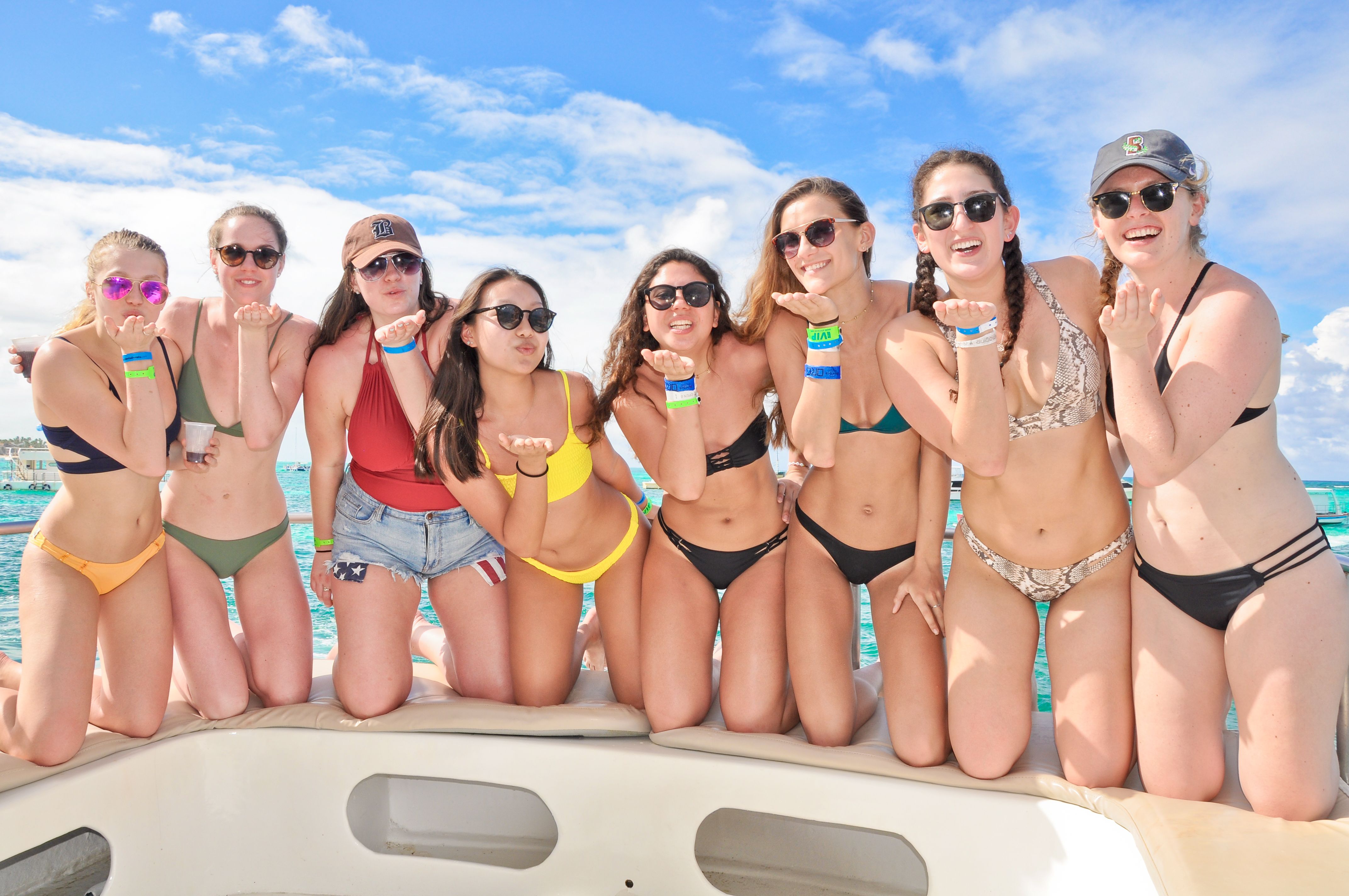
Is Nude Boating Really A Thing?

How Do You Know When You Are Operating Your Vessel at a Safe Speed? Essential Tips and Guidelines

The Bay Sarasota Unraveling the History and Charm of Sarasota's Premier Waterfront Destination-The Bay Sarasota
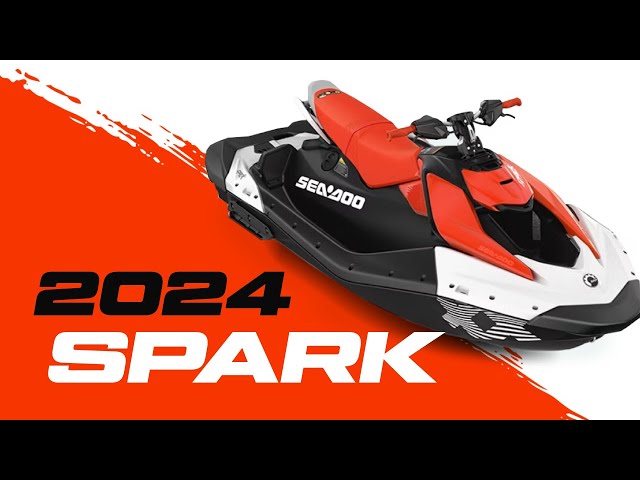
Sea-Doo Spark- Comprehensive Guide for Watercraft Enthusiasts
- Pontoon Boats
- Personal Watercraft
- nauticalknowhow
- Nautical Knots
- Tools and Calculators
Types of Sailboats: Classification Guide
Sailboats can be divided into three basic types based on their hulls (catamaran, monohull or multihull) , their keel and their rigging, and then further subdivided from there. The result is that there are actually well over a dozen different kinds of sailboats out there.
Sailboat Hull Types
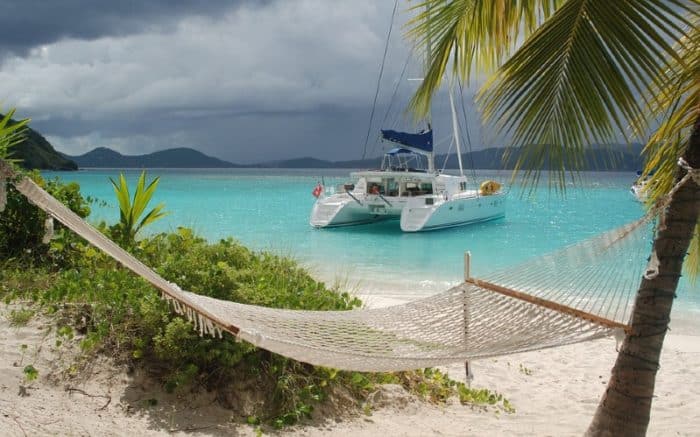
There are three main hull types that you’ll find in sailboats.
- Monohull: This is what most people think of when they think of a sail boat or any boat at all, really. A monohull sailboat has a single hulled structure that gives a boat that traditional boat shape we all instantly recognize. These are far and away the most common hull type for sailboats because they’re some of the oldest, they’re cheaper to produce, and they are fairly easy to maintain compared to the other options. You can do a lot more with the rigger in monohull sailboats and any sailing vessel with multiple masts is invariably going to be a monohull one. The downside of the monohull compared to the others is that they lack the stability.
- Catamaran: The second hull type you’ll find in sailboats is the catamaran . While technically a multihull vessel, they feature two hulls that are located on either side of the boat connected by a deck. Because it’s just the two, they get called catamarans rather than multihull which generally refers to three. Catamarans had been used by ancient peoples for years but never really caught on with “modern” boating for quite a long time. Now that we have fiberglass hulls and other advances, catamarans are much more commonplace than they were a hundred years ago. Catamarans offer great speed and stability but don’t have as much cabin space as a monohull.
- Trimaran/Multihull : This hull style features three hulls in a similar style to the catamaran with the addition of that third center hull. From the side you wouldn’t be able to tell a catamarans from trimaran sailboats. These boats are even faster and more stable than a catamaran and, by extension, a monohull. They have a very low center of gravity and a large beam. Space is still a drawback but the third hull increases room overall. There are also vessels with even more hulls, but they are exceedingly rare and also pretty expensive.
Sailboat Keel Types
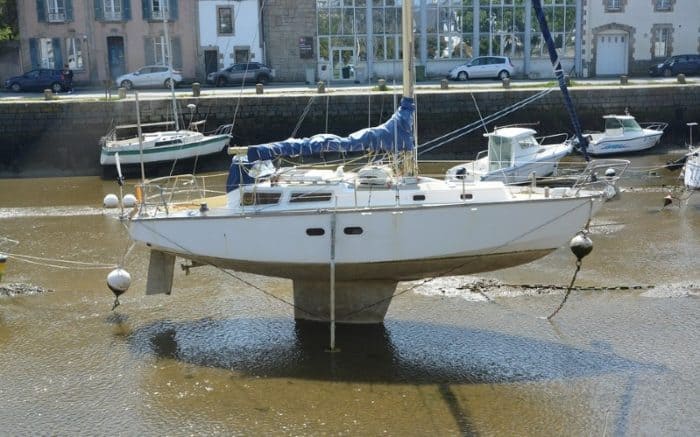
Heading below the hull now and we’ll find the keel, which is what gives your sailboat added stability in the water. While multihull boats find stability in the additional hulls, a monohull boat will get stability from its keel. Though it’s nearly impossible to flip or capsize a trimaran, if it does happen it’s staying flipped or capsized. However, the keel on a monohull boat makes it even harder to flip because of the physics of resistance in the water. That isn’t to say a monohulled boat with a keel is unsinkable, quite the opposite, but you’re just not going to flip one upside down without a real fight. There are six main keel types you’ll find in sailboats.
- Bilge Keel: These are dual keels that can be like fin keels or even full keels extending the length of the vessel. They extend from the sides and can prevent the boat from rolling. They need to be symmetrical on both sides of the boat to work.
- Bulb Kee l: These are a kind of fin keel but they carry ballast in them. That allows them to have a little more stability. They operate like a hydrofoil
- Centerboard Keel: This type of keel actually pivots and can be changed depending on the depth of the water.
- Daggerboard Keel : Another kind of centerboard keel but the daggerboard can actually be pulled up into the hull. This allows you to alter its position for an increase or decrease in speed or stability as needed.
- Fin Kee l: If you’re into racing you’ll probably have a fin keel. They are thin but extend deep below the sailboat. This makes them great for speed but not really ideal for a comfortable ride. You wouldn’t want to be day sailing for fun and relaxation with a fin keel.
- Full Keel: This is the most common type of keel and it spans the entire length of the vessel. There will likely be a rudder built into the keel as well.
- Wing Keel : This is a variant on the fin keel. Wing keels have a small wing at the tip to allow better directional stability by reducing cross flow.
Sailboat Mast Configuration
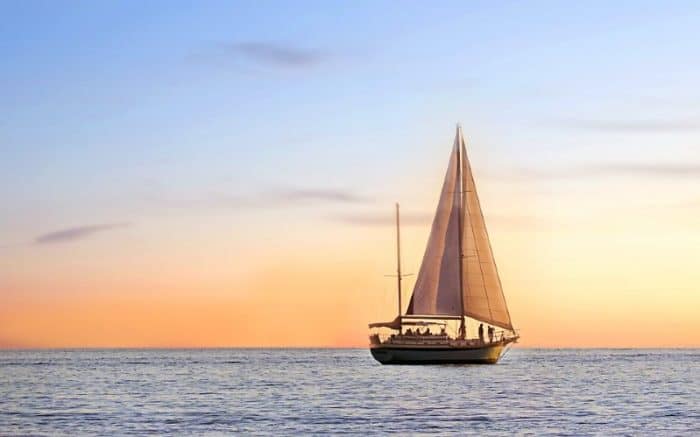
The mast of the sailboat is obviously that large pole onto which sails are rigged. Depending on your boat type you may have one mast, two masts, or more masts. How these masts are configured is where you can start distinguishing sailboat types you may recognize by name. These include:
Sloop: This is arguably the most popular type of sailboat mast type. A sloop has a single mast and two sails – the headsail and the mainsail. Being a single masted sailboat makes them easy to identify. These are probably the easiest to learn how to rig and how to sail. It’s versatile enough for cruising and for racing. Commonly these a gaff rig or a Bermuda rig. Another kind of sloop rig is the fractional rig sloop in which you can find one of the sails below the top of the mast.
Schooner: These can have multiple masts, not just two. The largest sailing vessels you’re likely to see, either in the present or in images from history, were schooners. Giant ships with six masts each bearing over 10 sails were schooners. An important detail is that the first mast on a schooner will always be shorter than the others. They are usually gaff-rigged
Cutter: This type of sailboat is very similar to the sloop and has a centrally located mast supporting three sails. Two headsails, the second called a staysail, is what distinguishes it most easily from the sloop. The rigging makes a cutter a bit harder to manage than a sloop.
Ketch : A ketch is a lot like a schooner but the two masts are arranged differently. On a ketch, the main mast is taller than the aft mast which is called the mizzen mast. The mizzen sail naturally is on the mizzen mast with the mizzen mast positioned aft.
Catboat : Also called a cat, a catboat has a single mast and a large, single gaff sail. The boats are usually short, stout boats that aren’t built for speed or for open seas. Best to be used in coastal waters
Yawl: This vessel is nearly identical to the ketch with one main difference. In a yawl, the helm is forward of the mizzen mast, while that is not the case in a ketch.
Other Types of Sailboats
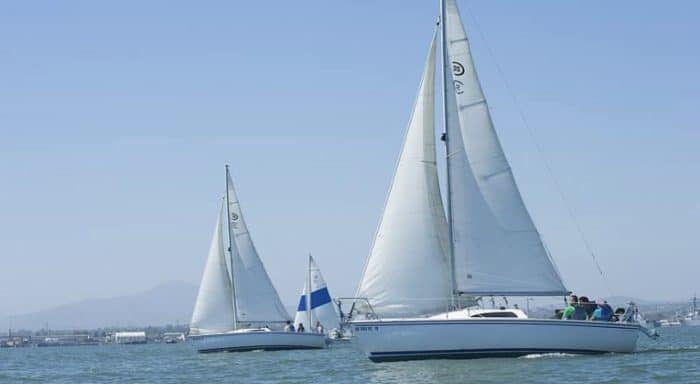
Now that we have the basic configurations out of the way, let’s look at some of the more specific types of sailboats you may find at sea. In some cases you’ll see that these terms are not entirely specific and one term may actually apply to multiple kinds of sail boats in much the same way that something like SUV can describe multiple different vehicles that are similar but not all the same.
Sailing Dinghies
Like any dinghy, a sailing dinghy is going to be a small vessel. Typically made to accommodate just one or two people, they are under 15 feet and the smallest of which are often used by children. Optimist dinghies are raced professionally and must meet certain requirements to be officially registered as true Optimist boats. If you’re totally new to sailing, a sailing dinghy might be a good place to learn the ropes.
Daysailer generally refers to any sailboat that is not intended to either race other boats or keep you out on the water for an overnight stay. As such, it can cover a lot of ground. Typically, a daysailer will probably be between 14 feet and 20 feet. Usually you won’t get more than 4 people on board and there will be room for storing gear but not a sleeping berth. These are great beginner sailboats.
Pocket Cruisers
Like a daysailer, a pocket cruiser is more of a general label for boats rather than a specific kind. In this case, any sailboat under 30 feet could technically be considered a pocket cruiser. Basically it should be trailerable and used for either cruising or racing. They may contain a small cabin or berth. They could be outfitted for long offshore trips.
Trailer Sailer
Very similar to a pocket cruiser, a trailer sailer is a smaller vessel but still larger than a sailing dinghy. There is clear overlap between trailer sailers, daysailers, and pocket cruisers and the same name could technically be used for many different boats. The defining characteristic of a trailer sailer is that it can easily be transported by trailer behind your tow vehicle. Unlike a sailing dinghy, a trailer sailer would likely have a retractable keep like a centerboard or daggerboard.
Racing Sailboats
These boats can be very large, anywhere from 20 feet to over 70 feet, and they are designed to be light and fast on the water. Larger racing sailboats required a skilled crew to operate. These have keels intended to increase speed and even laminate sales to improve performance. Smaller racing boats can be manned by just one or two people. They don’t offer a lot of creature comforts and aren’t meant for relaxing trips at sea.
Beach Catamarans
Beach cats get their name from the fact they’re designed to be beached and can be launched again from the beach if you so desire. They are usually under 25 feet and not meant for extending sailing offshore, rather they are designed for daysailing. They are very agile and fast and take a good foundation of knowledge to control properly.
Cruising Catamarans
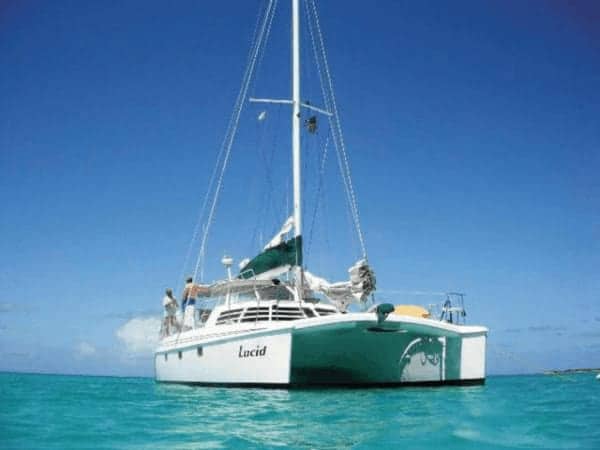
This is the larger style of catamaran designed for more serious boating. Like any catamaran they have a shallow draft but these can be between 25 feet and up to more than 50 feet. They’re designed for extended cruising offshore.
Cruising Sailboats
Boats like schooners quality as a cruising boat and they are typically at least 16 feet in length but may get well over 50 feet as well. Cruising sailboats include cabins for extended stays offshore and, if the boat is large enough, will likely have a fairly large living space below deck which includes a galley and a head in addition to sleeping berths. These are often called liveaboard sailboats .
Cruisers are often monohull but can just as easily be multihull. When properly outfitted they can be used for long, extended stays at sea that last weeks or more. Depending on rigging a cruising sailboat could easily be a sloop, a schooner, a cutter, a ketch or even a superyacht.
Racing Cruisers
This is essentially a hybrid of the cruising sailboat and the racing sailboat. It’s built for more speed than a cruiser but it will have better accommodations than a racing sailboat to allow for stays at sea. The end result is a lighter cruiser ideal for a few days at sea that can get some good speed.
Bluewater Cruising Boats
These are basically the next step up from a cruising sailboat. A bluewater cruiser is meant to sail across oceans, which is where the bluewater part of the name comes from. These are large sailboats and are best only sailed by skilled sailors. They can be outfitted for very long stays at sea and are able to handle rough weather better than smaller vessels.
Motorsailers
You don’t hear this term much anymore but it refers to a sailboat that also has an inboard motor so that they can travel under engine power or wind power. Typically these are larger vessels with accommodations below deck and designed for extended stays off shore. That said, because they mix both styles of boat, they fall somewhere short of either in terms of performance. The engine takes up space and adds weight, limiting your sailing abilities. Obviously traditional sailboats won’t include a motor.
The Bottom Line
There are a number of different kinds of sailboats and the easiest way to distinguish them is by comparing hull types, sail and mast configuration, and keels. Many terms you hear to describe sailboats can describe more than one kind, while others are very specific and the boat must meet certain requirements to merit the name. The only thing that truly unites every type of sailboat is the fact it must be powered by the wind, and even then there are hybrid versions that use motor power sometimes.
Learning the rigging of the different types of sailboats, including things like gaff rigs, standard rigging, and other rig types can be hard work and time consuming as some of these sailing boat rig types are far more complex than others.
My grandfather first took me fishing when I was too young to actually hold up a rod on my own. As an avid camper, hiker, and nature enthusiast I'm always looking for a new adventure.
Categories : Boats
Leave a Reply Cancel reply
Your email address will not be published. Required fields are marked *
Save my name, email, and website in this browser for the next time I comment.
More in Boats

What Is A Gunwale?

131 of the Best Hawaiian Boat Names

167 Patriotic Boat Names

The 138 Best Boat Names for Dog Lovers

The People’s Poncho Review and Ratings

Oru Lake Kayak Review

About Boatsafe
Established in 1998, BoatSafe is your independent guide into the world of boating, fishing, and watersports. We provide expert insights and detailed guides to help you find products tailored to your needs and budget.
Contact Boatsafe
- Address: 4021 West Walnut Street. Rogers, AR 72756
- Phone: (479)339-4795
- Email: [email protected]

Site Navigation
- How We Test
- Corrections Policy
- Privacy Policy
- Terms & Conditions
- Editorial Policy
- Affiliate Disclosure
Our Reviews

All content is © Copyright 2024. All rights reserved.
- Types of Sailboats
- Parts of a Sailboat
- Cruising Boats
- Small Sailboats
- Design Basics
- Sailboats under 30'
- Sailboats 30'-35
- Sailboats 35'-40'
- Sailboats 40'-45'
- Sailboats 45'-50'
- Sailboats 50'-55'
- Sailboats over 55'
- Masts & Spars
- Knots, Bends & Hitches
- The 12v Energy Equation
- Electronics & Instrumentation
- Build Your Own Boat
- Buying a Used Boat
- Choosing Accessories
- Living on a Boat
- Cruising Offshore
- Sailing in the Caribbean
- Anchoring Skills
- Sailing Authors & Their Writings
- Mary's Journal
- Nautical Terms
- Cruising Sailboats for Sale
- List your Boat for Sale Here!
- Used Sailing Equipment for Sale
- Sell Your Unwanted Gear
- Sailing eBooks: Download them here!
- Your Sailboats
- Your Sailing Stories
- Your Fishing Stories
- Advertising
- What's New?
- Chartering a Sailboat
The Different Types of Sailboats
If you’re a sailboat fanatic like me, all types of sailboats will attract your attention. Some more so than others admittedly, but all will have something about them that catches your eye.
If you’re not a fanatic (not yet, that is) but just an interested observer, then the first thing you’ll notice about a sailboat will be how many masts it has and the configuration of its sails - in other words, its 'rig'.
This observation alone will enable you to identify the five main types of sailboats — sloops, cutters, ketches, yawls and schooners - all of which are described here.
But apart from the various rig types, you can describe types of sailboats from a different viewpoint - sailing dinghies, dayboats, motorsailors, monohulls, catamarans and trimarans.
Let's make a start with the various rig types...
A single-masted sailboat with just two sails — a foresail (aka headsail or jib) and a mainsail — is a sloop, the purest type of sailboat.
The sloop rig can also be described as a Bermuda rig, Bermudian rig or Marconi rig.
Read more about sloops...
Examples of Sloops
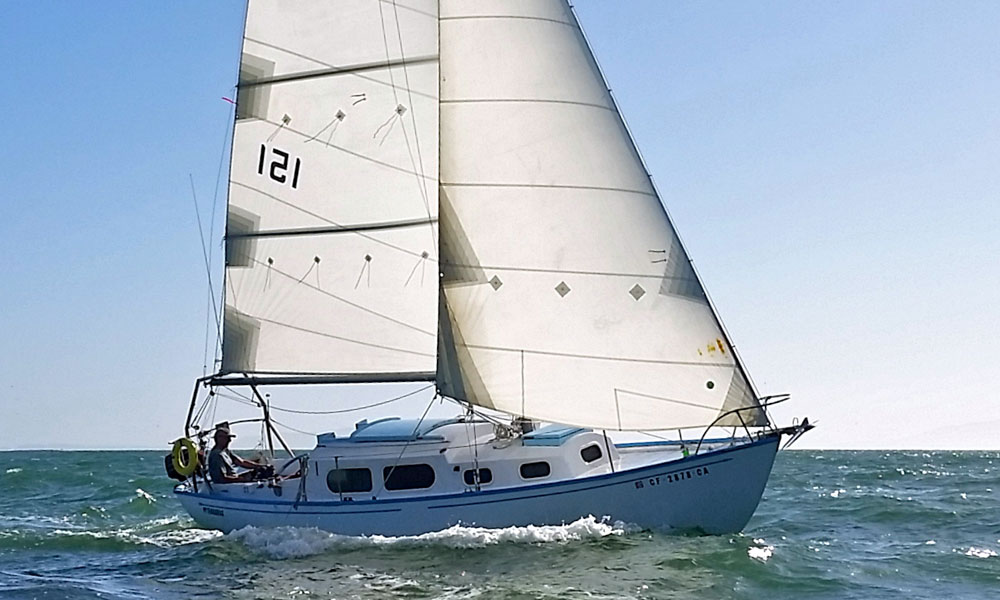
If a sloop has an additional sail between the headsail and the mainsail, then it's no longer a sloop - it's a cutter.
Some cutters - like the one shown here - have the foresail set forward on a bowsprit, with the inner forestay permanently rigged to the stemhead where the foresail otherwise would be, or to a central chainplate further aft on the foredeck.
Read more about cutters...
Examples of Cutters
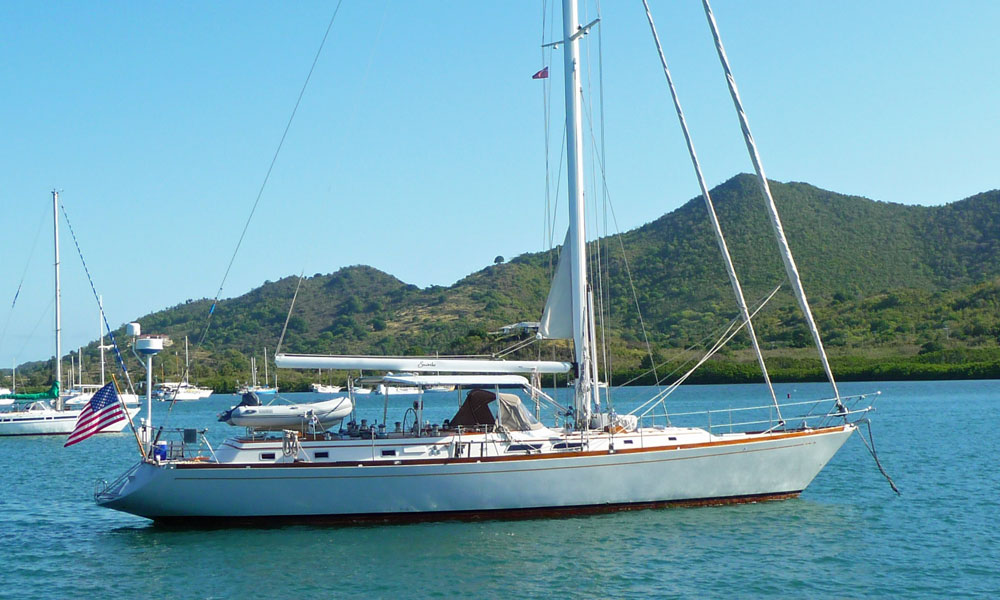
The following boats may look like cutters with their double headsails, but they're not cutters at all...
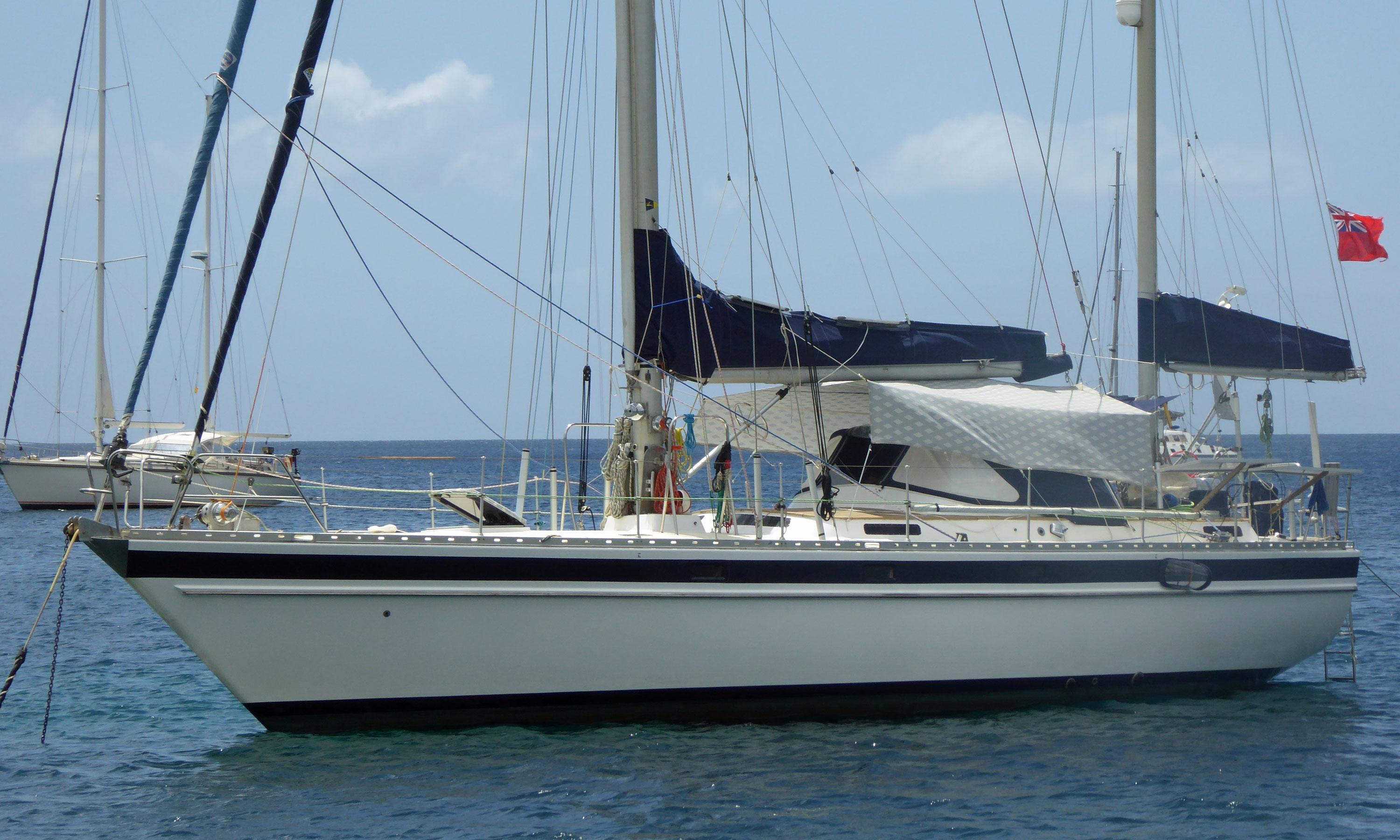
To find out why, click here...
A ketch is a two-masted sailboat, a main mast forward and a shorter mizzen mast aft.
But not all two-masted sailboats are ketches — they might be yawls (see below).
A ketch may also sport a staysail, with or without a bowsprit, in which case it would be known as a cutter-rigged or staysail ketch.
Read more about ketches...
Examples of Ketches
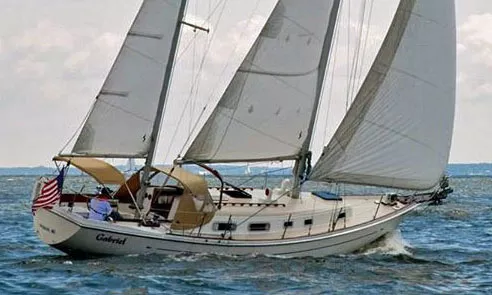
Note that the Ocean 71 and the Irwin 52 are cutter-rigged, and are traditionally referred to as Staysail Ketches .
Cat Ketches
Cat-ketches are recognised by the lack of any standing rigging to support their pair of unstayed masts.
And yes, if the after mast is taller than the foremast then it's called a cat- schooner sailboat.
Read more about cat-ketches...
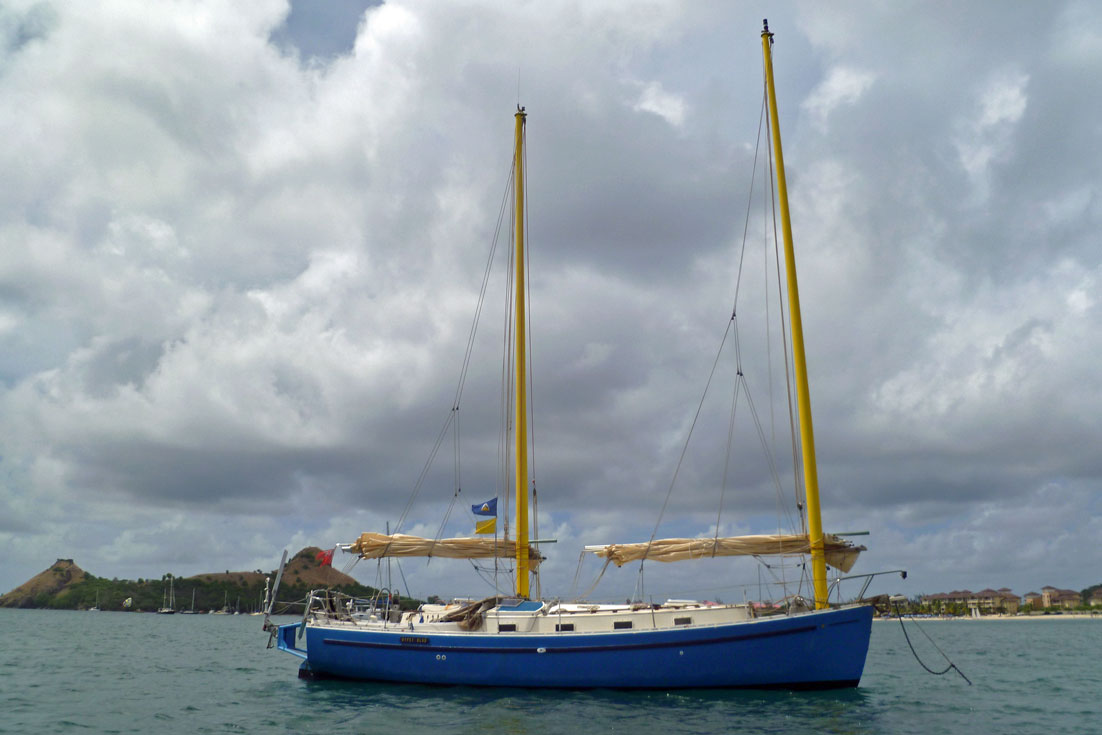
Yawls have their origins as old-time sail fishing boats, where the small mizzen sail was trimmed to keep the vessel steady when hauling the nets.
Much like a ketch, the difference being that the yawl has the mizzen mast positioned aft of the rudder post whereas the ketch has its mizzen mast ahead of the rudder post.
You’ll not be surprised to learn that a yawl with a staysail is known as cutter-rigged yawl.
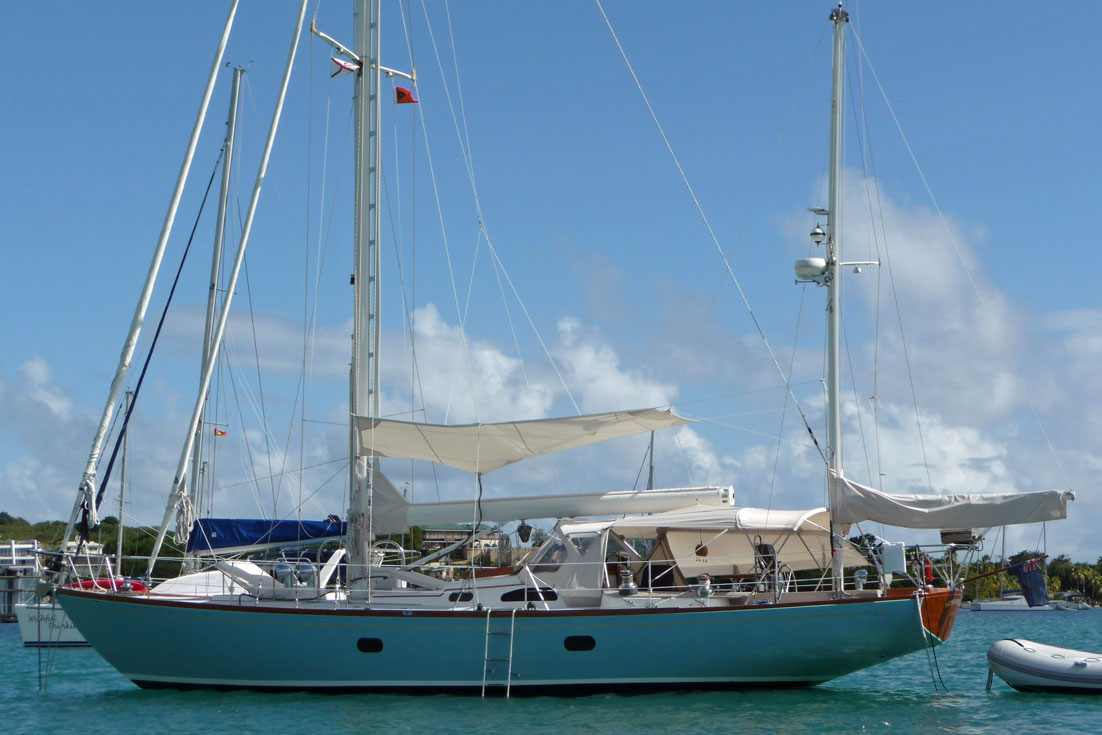
A schooner is a two-or-more masted sailboat, in which the aft-most mast - the mainmast - is the same height or taller than the foremast.
The one shown here is gaff cutter rigged, with a topsail set on the mainmast.
Many sailors agree that of all the different types of sailboats, a schooner under full sail is one of the most beautiful sights afloat.
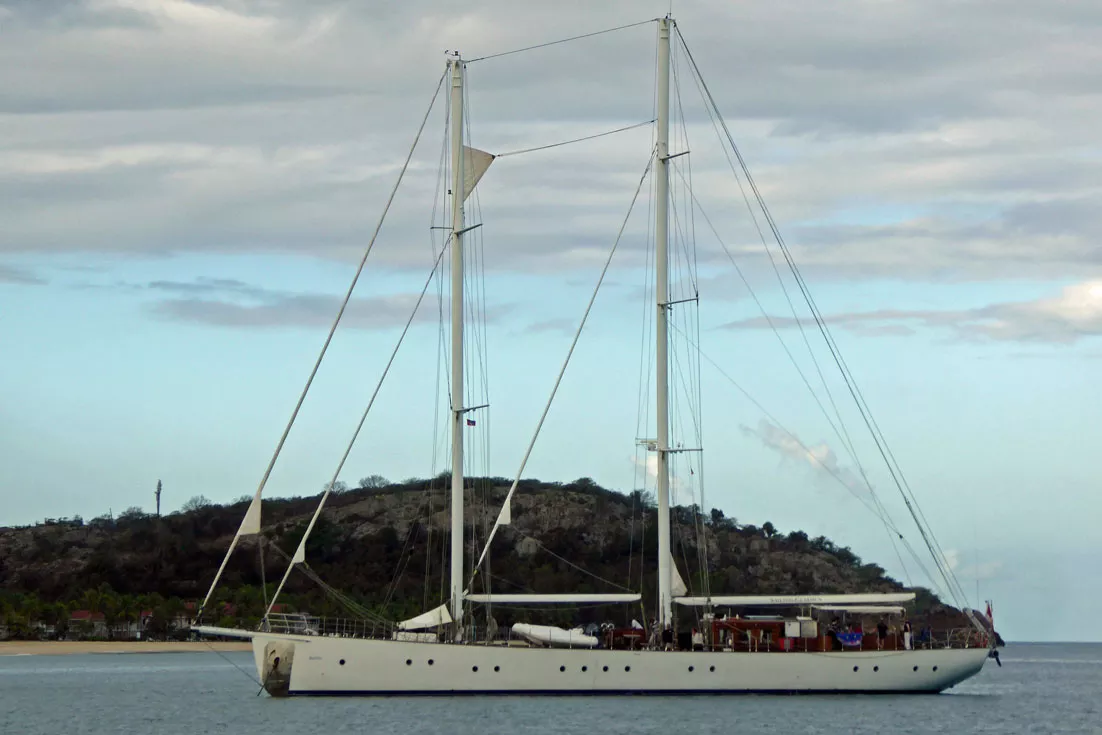
Gaffed-rigged sailboats, or 'gaffers', have their mainsail supported by a spar - the 'gaff' - which is hauled up mast by a separate halyard.
Often these types of sailboats are rigged with a topsail, as shown here and in the gaff schooner above, which really adds some grunt in light airs.
All this comes at a price of course, both in terms of material cost and weight aloft, which is why very few modern yachts are fitted with gaff rigs these days.
All artwork on this page is by Andrew Simpson
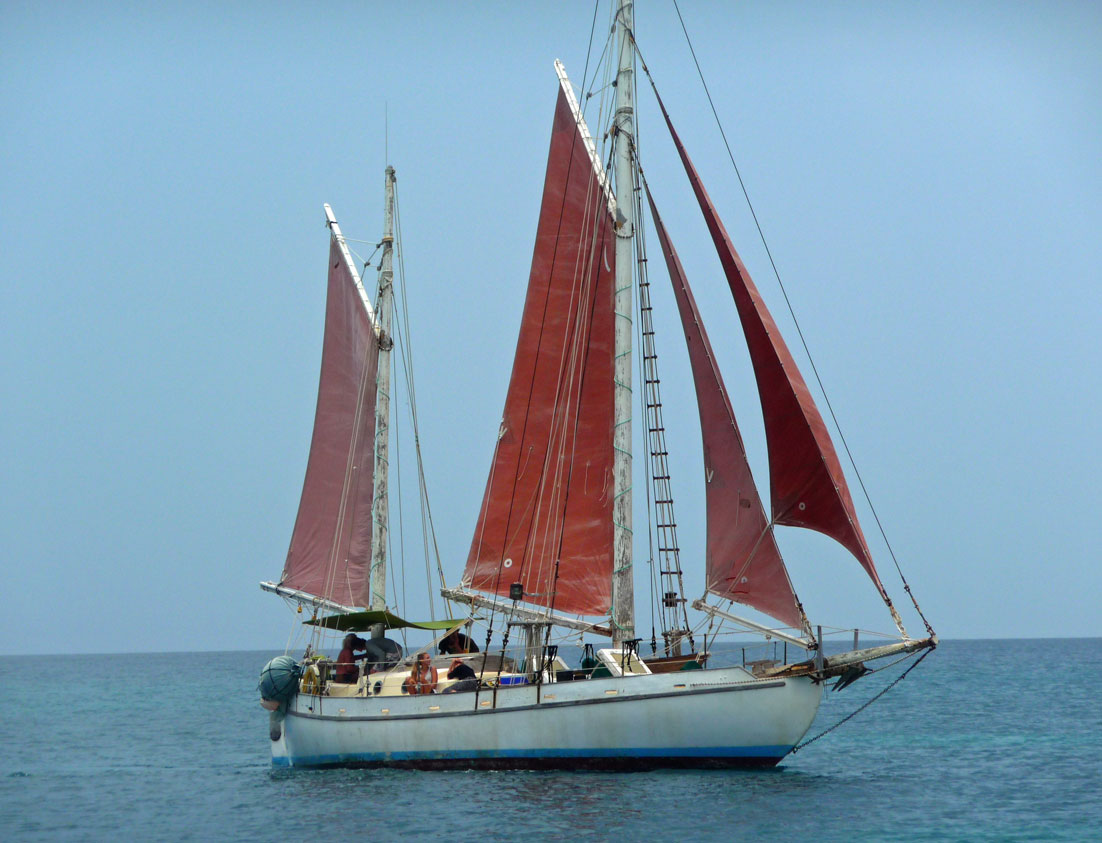
Examples of the Various Types of Sailboats...
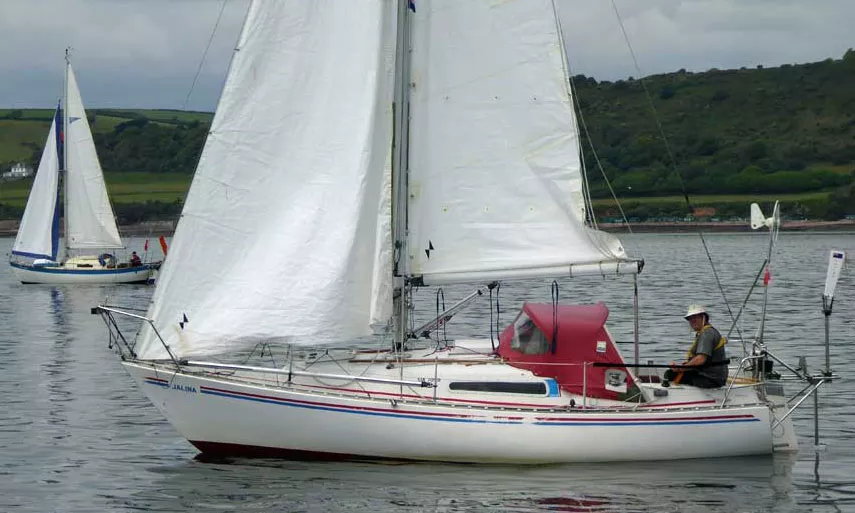
Other Types of Sailboats
The seven sailboat rig variations shown here are the most popular types of modern cruising boat rigs, but there are other rig versions which were once found on commercial, fishing, and naval sailing vessels.
They include:
- Full square-rigged sailing vessels
- Barkentines
- Brigantines
And you can see examples of them here ...
In this article I've said that ketches, yawls and schooners with two headsails can be called cutter rigged. This is a commonly used description but strictly speaking, there's only one rig that can accurately be called a cutter - and that's a single-masted sailboat with two headsails. My thanks to 'Old Salt' for drawing my attention to this!
Recent Articles
'Natalya', a Jeanneau Sun Odyssey 54DS for Sale
Mar 17, 24 04:07 PM
'Wahoo', a Hunter Passage 42 for Sale
Mar 17, 24 08:13 AM
Used Sailing Equipment For Sale
Feb 28, 24 05:58 AM
Here's where to:
- Find Used Sailboats for Sale...
- Find Used Sailing Gear for Sale...
- List your Sailboat for Sale...
- List your Used Sailing Gear...
- Sign-up for our newsletter, 'The Sailboat Cruiser' ...
- Identify this month's Mystery Boat...
Our eBooks...

A few of our Most Popular Pages...

Copyright © 2024 Dick McClary Sailboat-Cruising.com
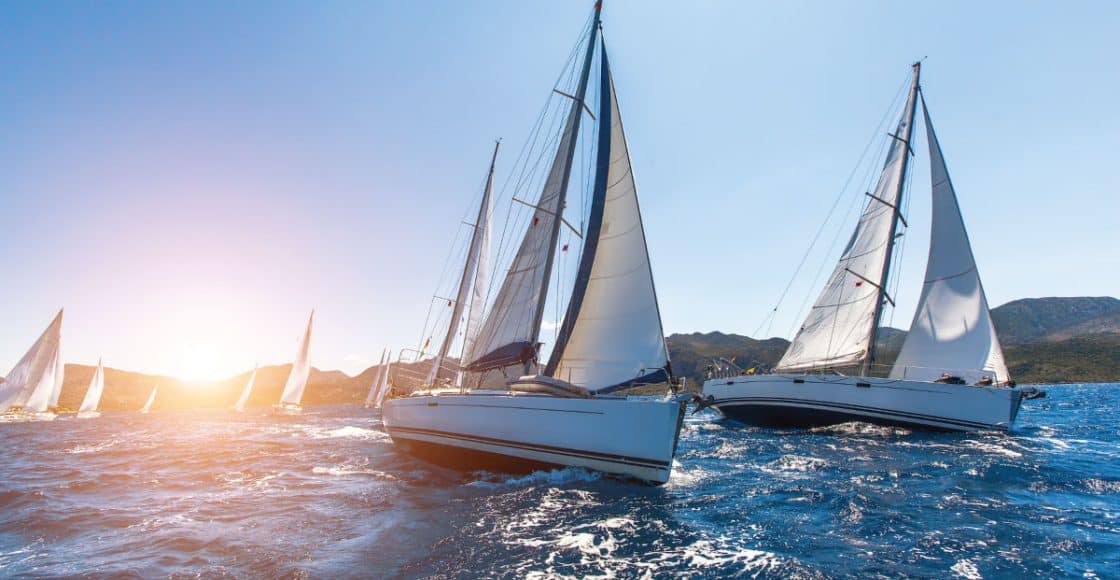
Types of Sailboats

Table of Contents
Sailboats are one type of boat, but just because they all have sails doesn’t mean they’re all the same. There are subsets of sailboats and they differ by their shape (or number of hulls), the type of sailing rig, and their best primary use. Let’s investigate.
Discover sailboat rentals near you— only at Boatsetter
Sailboat shapes
Sailboats can be monohulls or multihulls, which can be catamarans with two hulls or trimarans with three.
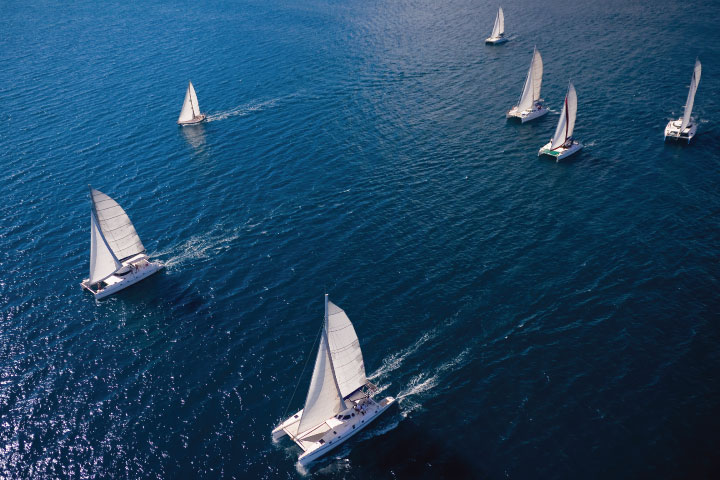
Monohulls are the classic sailing boat with one hull . Large, traditional, and older versions have deeper and heavier keels integrated into the hull for greater stability. At the same time, newer designs have fin keels that are attached rather than integrated appendages. Monohull boats can be used for racing or cruising.
Catamarans have two hulls that are connected by a bridge deck . Cats are prized for their large deck and accommodations space, stability, and shallow draft, so many mid-sized cats can be found in charter fleets worldwide.
Production cats are typically built for comfort rather than speed, but there are high-performance carbon fiber racing cats like those in the America’s Cup.
Trimarans are boats with three hulls. They can be large cruisers with fixed hull supports or small racers where the structural arms that hold the amas (outer hulls) fold to make the whole boat narrower. This is handy when fitting into a small slip or onto a trailer. Even more than catamarans, trimarans are known to be fast sailors.
More sailboats of all shapes (but especially catamarans) are experimenting with foils where the hull(s) ride out of the water to minimize wetted surfaces and maximize speed.
READ MORE: 10 Best Beginner Sailboats
Sailboat rigging
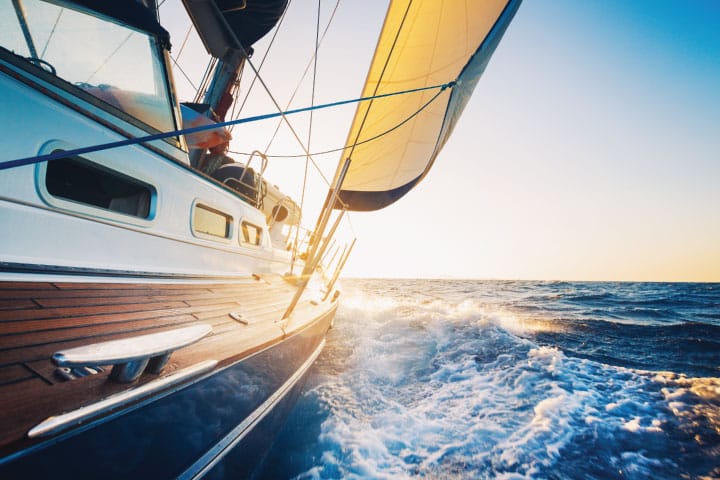
The rig of a sailboat includes the spar (mast) that holds the sails up, the boom that holds the bottom of the mainsail, and the shrouds or stays that support the mast. One sailboat can have multiple masts.
The number and placement of the masts decide what kind of boat it is. A sloop has one mast but may have multiple headsails (the sails that are in front of the mast), and therefore it may be called a cutter sloop.
A ketch or a yawl has a second smaller (mizzen) mast aft of the main mast. Schooners have multiple masts, but the secondary mast is ahead of the main mast rather than behind it. Many classic tall ships are outfitted as schooners, not generally found in modern recreational sailing.
Different uses of sailboats
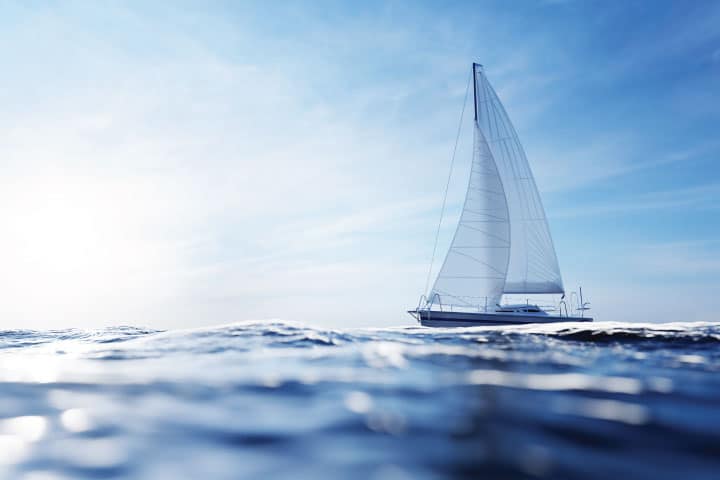
As mentioned above, sailboats can be distance cruisers, racers, or something in between . Much of how they’re used will depend on their size and shape.
- Daysailers: The primary use of a daysailer is for an afternoon sailing in a bay or harbor. You can daysail on the ocean, and any boat can be sailed for just a day. Still, typical daysailers are usually smaller (under 30 feet), have no or minimal accommodations below, and are used for short outings.
- Cruisers: Sailboats can cruise for a weekend or a lifetime. Cruisers are often outfitted with amenities to accommodate overnight stays, so they have a galley , a cabin , and a head (bathroom). They vary in size, can be mono- or multihulls, and can carry any rig type.
- Racers: Although any sailboat can be raced, some models are specifically designed to do so. They’re usually built lighter and carry more sail area.
- Racer-cruisers: Racer-cruisers are performance boats (usually sloops) that can cruise. Some sailors will argue that there’s no such thing and that it’s all marketing rather than reality as companies try to make customers believe their boats are fast. Lightly built cruisers are often classified as racer-cruisers.
- Bluewater cruisers: Sailboats designed to cruise across oceans are often called bluewater cruisers. They’re well equipped, have large water and fuel tanks, and are often loaded with technical and cruising gear to be able to stay at sea for a long time. Again, these sailboats can have any number of hulls or masts to qualify for this moniker.
- Motorsailers: Heavy sailboats with big engines may be called motorsailers but it’s not a name that appeals to their owners because it implies the boat is heavy and slow under sail.
- Sailing dinghies: Small sailboats that are often used to teach sailing are sailing dinghies. They’re designed for one or two people and can be basic like a Lido or Sabot or competition level such as a Finn, Nacra, or Laser.
Learn more about sailboats with Boatsetter
An expert sailor knows a sailboat isn’t just a boat with sails — there are nuances and knowing the differences will make you not only better informed, it will also enable you to decide which kind of sailboat is right for you.
Of course, the best way to get to know a sailboat is by hands-on practice . Rent a sailboat — with a captain or to sail solo — and get on-the-water practice. In no time, you’ll be a pro.
Boatsetter is a unique boat-sharing platform that gives everyone— whether you own a boat or you’re just renting — the chance to experience life on the water. You can list a boat , book a boat , or make money as a captain .
List. Rent. Earn— Only at Boatsetter

Zuzana Prochazka is an award-winning freelance journalist and photographer with regular contributions to more than a dozen sailing and powerboating magazines and online publications including Southern Boating, SEA, Latitudes & Attitudes and SAIL. She is SAIL magazines Charter Editor and the Executive Director of Boating Writers International. Zuzana serves as judge for SAIL’s Best Boats awards and for Europe’s Best of Boats in Berlin.
A USCG 100 Ton Master, Zuzana founded and manages a flotilla charter organization called Zescapes that takes guests adventure sailing at destinations worldwide.
Zuzana has lived in Europe, Africa and the United States and has traveled extensively in South America, the islands of the South Pacific and Mexico.
Browse by experience

Explore articles
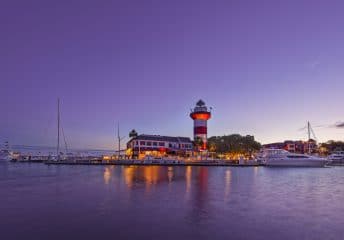
The Best Marinas on Hilton Head Island in South Carolina
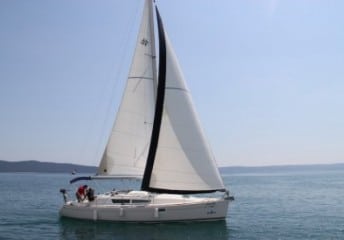
Best Small Boats to Rent or Buy in 2016

Top 5 Panama City Beach Restaurants on the Water to Visit by Boat

Denver Fly Fishing Show: An Exhibitor’s Recap

All You Need to Know: Explaining the Different Types of Sailboats
Sailboats are a type of watercraft that are powered by the wind. They come in a variety of shapes and sizes, each with its unique characteristics and features. Understanding the different types of sailboats and their uses can be helpful for those who are interested in sailing or looking to purchase a sailboat.
Several factors determine the types of sailboats, including the hull type , keel type , mast configuration, and sails and rigging . The hull is the boat’s body and can be either a monohull, catamaran , or trimaran .
The keel is the underwater part of the hull that provides stability and can be either a fin keel, wing keel, bilge keel, daggerboard, or centerboard. The mast configuration and sails determine how the boat is powered, and can be a sloop, fractional rig sloop, ketch, schooner, yawl, cutter, or cat.
Types of Sailboats
Sailboats come in many different shapes and sizes, each designed for a specific purpose. Here are the most common types of sailboats:
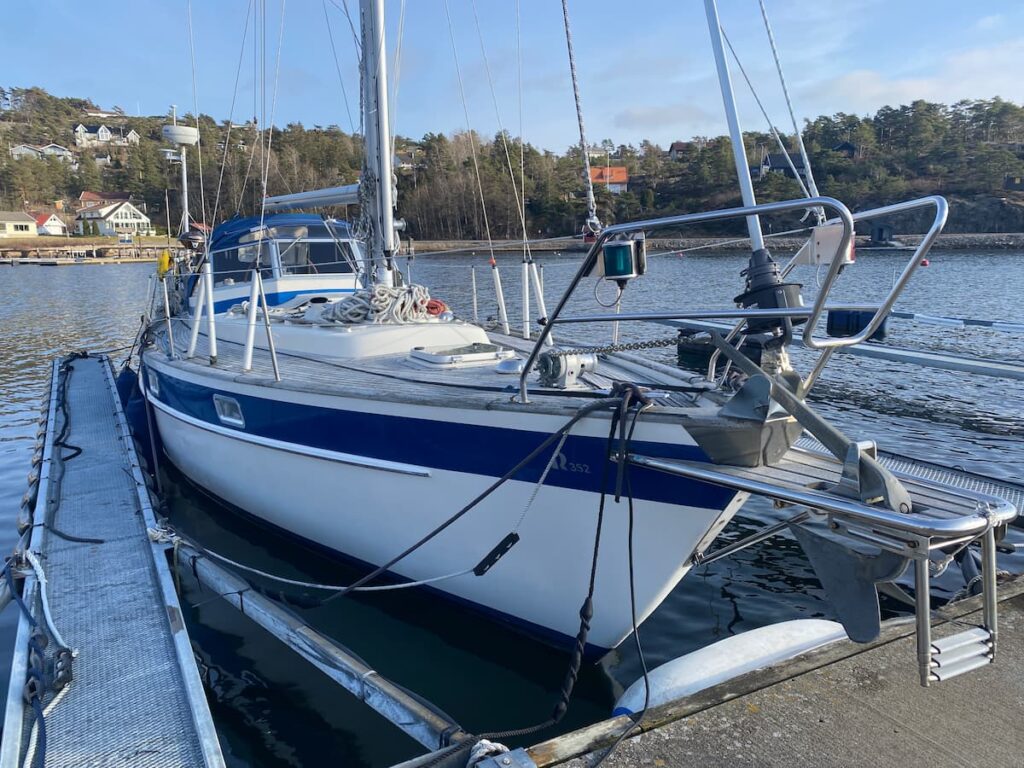
Cruising Sailboats
Cruising sailboats are designed for long-distance sailing and living aboard. They typically have a spacious interior with a galley, head, and sleeping quarters. They also have a large fuel and water capacity to allow for extended time at sea. Cruising sailboats come in many different sizes, from small pocket cruisers to large bluewater yachts.
Racing Sailboats
Racing sailboats are designed for speed and agility. They typically have a lightweight hull and a tall mast with a large sail area. Racing sailboats come in many classes , from dinghies to large offshore racing yachts. They are designed to be sailed by a skilled crew and require a high level of skill and experience to handle.
Daysailers are designed for short trips and day sailing. They typically have a simple interior with minimal accommodations. Daysailers come in many different sizes, from small dinghies to larger keelboats. They are easy to handle and are a great choice for beginners or for those who want to enjoy a day on the water without the hassle of a larger boat.
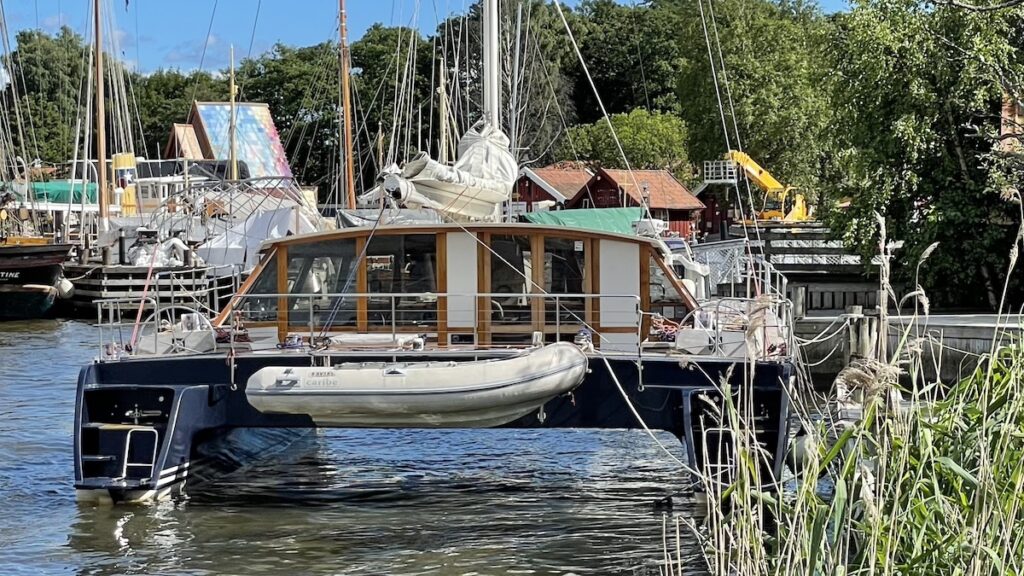
Catamarans are sailboats with two hulls. They are designed for stability and speed and are often used for cruising or racing. Catamarans have a spacious interior and a large deck area, making them a popular choice for those who want to live aboard or entertain guests. They are also popular for chartering and can be found in many popular sailing destinations around the world.
Trimarans are sailboats with three hulls. They are designed for speed and stability and are often used for racing or long-distance cruising. Trimarans have a narrow hull and a large sail area, making them incredibly fast and agile on the water. They are also popular for their spacious interior and large deck area, making them a great choice for those who want to live aboard or entertain guests.
Sailboat Hull Types
When it comes to sailboats, there are two main categories of hull types: monohull and multihull. Each has its unique characteristics and advantages.
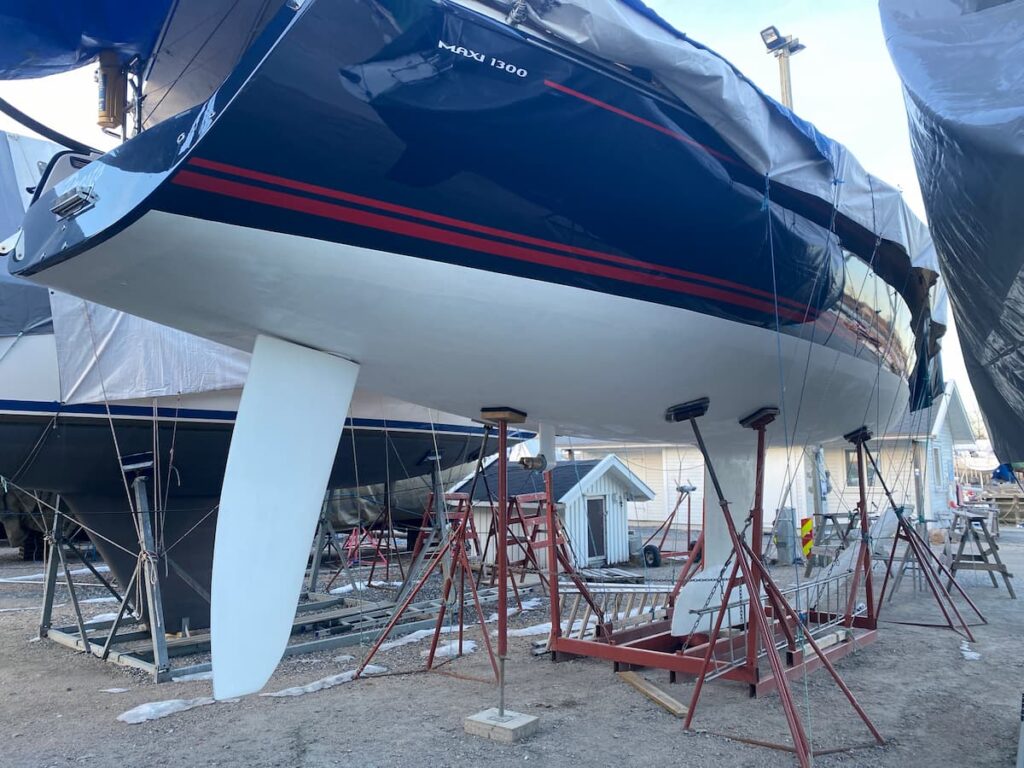
Monohull Sailboats
Monohull sailboats are the most common type of sailboat. They have a single hull, and the hull is typically long and narrow, which makes them more efficient when sailing upwind. Monohulls come in a variety of styles, including:
- Flat-bottom vessels
- Fin-keel racers
- Bulb and bilge keel cruisers
- Heavy semi-displacement sailboats
- Dense full-keel displacement cruisers
Each of these styles has its advantages and disadvantages. For example, flat-bottom vessels are the most stable, but they don’t work well in deep waters. Fin-keel racers are designed for speed and performance but may not be as comfortable for long-term cruising.
Multihull Sailboats
Multihull sailboats have two or more hulls. The most common types of multihulls are catamarans and trimarans. Multihulls have several advantages over monohulls, including:
- More stability
- Better performance in light winds
Catamarans have two hulls, which are connected by a deck. They are known for their stability and spaciousness. Trimarans have three hulls, which make them even more stable and faster than catamarans. However, they are not as spacious as catamarans.
Sailboat Rigging Types
When it comes to sailboat rigging types, there are several options to choose from. Each type of rig has its advantages and disadvantages, and choosing the right one will depend on a variety of factors, including the type of sailing you plan to do and the size of your boat . Some of the most common sailboat rigging types include:
The sloop rig is one of the most popular sailboat rigging types and is commonly used on boats ranging in size from small dinghies to large cruisers. It consists of a single mast with a mainsail and a jib or genoa. The mainsail is typically a triangular shape, while the jib or genoa is a smaller sail that is used to control the boat’s direction.
The cutter rig is similar to the sloop rig but with an additional headsail. This makes it a popular choice for sailors who want more control over their boat’s speed and direction. The mainsail is still triangular, but the headsail is typically smaller than the jib or genoa used in a sloop rig.
The ketch rig is a two-masted sailboat rigging type that is commonly used on larger boats. It consists of a main mast and a smaller mizzen mast located aft of the cockpit. The mainsail is typically triangular, while the mizzen sail is smaller and located behind the cockpit. The ketch rig is known for its versatility and is often used for long-distance cruising.
The yawl rig is similar to the ketch rig but with a smaller mizzen mast located further aft. This makes it a popular choice for sailors who want more control over their boat’s direction, especially in heavy winds. The yawl rig is also known for its ability to sail close to the wind, making it a popular choice for racing sailors.
Sailboat Sails
Several types of sails are commonly used on sailboats . Each sail has a specific purpose and is designed to work in different wind conditions. The main types of sails include mainsails, jibs, genoas, and spinnakers.
The mainsail is the largest sail on a sailboat and is typically located behind the mast. It is attached to the mast and boom and is used to capture the wind and propel the boat forward. The mainsail is the most important sail on the boat and is used in a wide range of wind conditions.
The mainsail can be adjusted in several ways to optimize its performance. The sail can be reefed, or reduced in size, to reduce the amount of sail exposed to the wind in high winds. The sail can also be twisted to adjust the shape of the sail and improve its performance in different wind conditions.
The jib is a smaller sail that is located in front of the mast. It is attached to the mast and forestay and is used to help balance the boat and improve its performance in light wind conditions. The jib is typically used in conjunction with the mainsail and can be adjusted to optimize its performance.
There are several types of jibs, including the working jib, the genoa jib, and the storm jib. The working jib is the most common type of jib and is used in moderate wind conditions. The genoa jib is a larger jib that is used in light wind conditions, while the storm jib is a smaller jib that is used in high wind conditions.
The genoa is a large jib that is used in light wind conditions. It is similar to the jib but is larger and overlaps the mainsail. The Genoa is attached to the mast and forestay and is used to capture as much wind as possible to propel the boat forward.
The Genoa is typically used in conjunction with the mainsail and can be adjusted to optimize its performance. It can be furled, or rolled up when not in use to reduce wind resistance and improve the boat’s performance.
The spinnaker is a large, balloon-shaped sail that is used for downwind sailing. It is typically used in light wind conditions and is attached to a spinnaker pole to keep it away from the boat’s mast and sails.
The spinnaker is used to capture as much wind as possible and propel the boat forward. It is typically used in conjunction with the mainsail and jib and can be adjusted to optimize its performance.

What factors determine the types of sailboats?
The factors that determine the types of sailboats include hull type, keel type, mast configuration, and sails and rigging.
What are the two main categories of sailboat hull types?
The two main categories of sailboat hull types are monohull and multihull.
What are some common sailboat rigging types?
Common sailboat rigging types include sloop rig, cutter rig, ketch rig, and yawl rig.
What are the main types of sails used on sailboats?
The main types of sails used on sailboats include mainsails, jibs, genoas, and spinnakers.
What are the differences between a catamaran and a trimaran?
A catamaran has two hulls connected by a deck, while a trimaran has three hulls. Trimarans are generally more stable and faster than catamarans, but they are not as spacious.
About the author
I worked as an officer in the deck department on various types of vessels, including oil and chemical tankers, LPG carriers, and even reefer and TSHD in the early years. Currently employed as Marine Surveyor carrying cargo, draft, bunker, and warranty survey.
Leave a Reply Cancel reply
Your email address will not be published. Required fields are marked *
Save my name, email, and website in this browser for the next time I comment.
Latest posts

What Does a Longshoreman Do?
Longshoremen play a critical role in the global supply chain, bringing billions worth of cargo into the country. So what does a longshoreman do exactly?
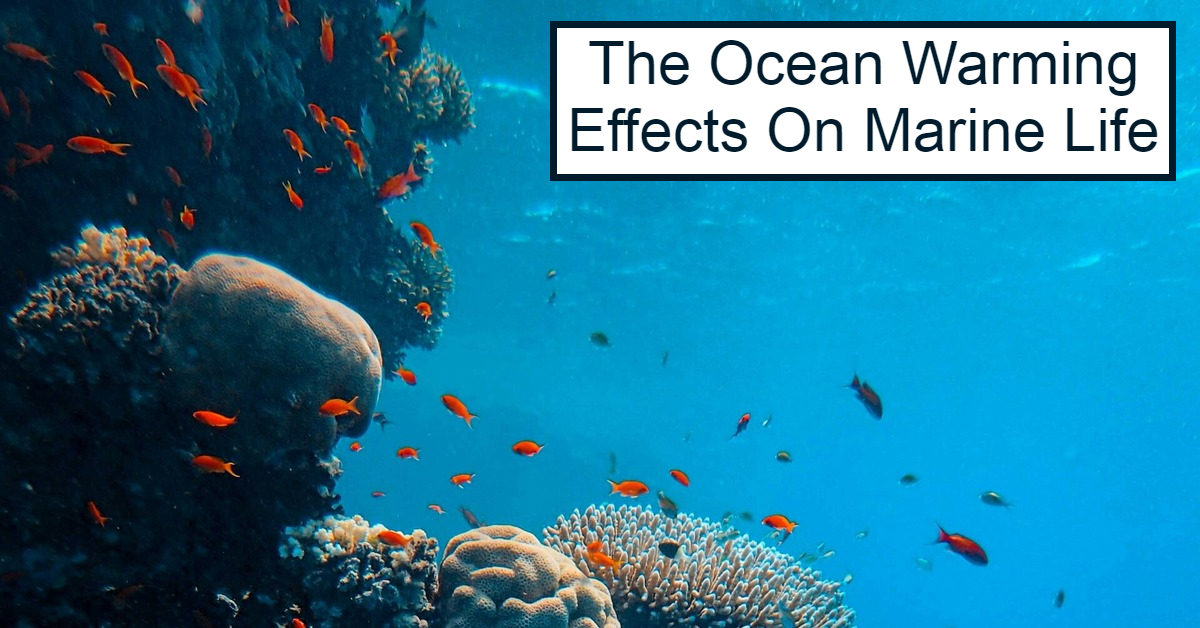
The Ocean Warming Effects on Marine Life
The last few decades have seen ocean temperatures rise as climate change begins to affect maritime industries worldwide. Here are the ocean warming effects on marine life seen so far.
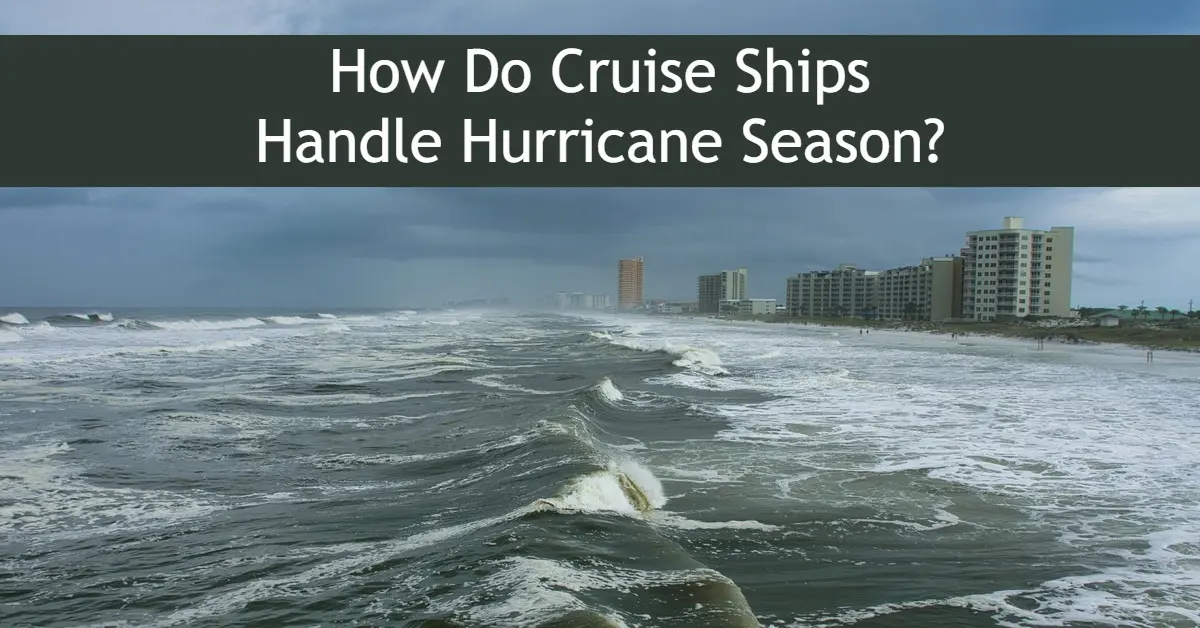
How Do Cruise Ships Handle Hurricane Season Cruises?
Thankfully, modern cruise ships can handle a hurricane season cruise. Due to past experiences and new advancements, crews prove these boats operate well no matter the weather.

Types of Sailboats by Type of Rig
16 December 2015
To have a better idea of which types of sailboats would best suit your needs, your Allied Yachting broker can advise you on the various options available on the market for new or second-hand vessels as well as new construction. In the meantime, here is a summarized guide to the different categories of sailing yachts by type of rig , whether they are monohull (single hull) or multihull , as they’re called in the Mediterranean.
Sailboats by rig type: hulls, masts

Single masted sailboat with monohull
The most common monohull modern sailing yacht is the sloop, which features one mast and two sails, thus sloops are single-masted sailboats. If they have just two sails — a foresail and a headsail — then they’re a Bermudan sloop, the purest type of sailboat. This simple configuration is very efficient for sailing into the wind.
Sailing sloops with moderate rigs are probably the most popular of all cruising sailboats. Just a single-masted sailboat with two sails (a foresail or headsail, and a mainsail) and the minimum of rigging and sail control lines they are relatively simple to operate and less expensive than rigs with multiple masts.
Sloops are adapted for cruising as well as racing, depending on the height and size of their rig.
The cutter sailing yacht is also a monohull similar to a sloop with a single mast and mainsail but generally carries the mast further aft to allow for a jib and staysail to be attached to the head stay and inner forestay, respectively. Once a common racing configuration, today it gives versatility to cruising boats, especially in allowing a small staysail to be flown from the inner stay in high winds.
Thus, a cutter-rig sailboat has an additional sail (the staysail) set on its own stay between the foresail and the headsail.
Cutters are mostly adapted for cruising, but capable of good performance while racing as well.
A ketch is a two-masted sailboat, the main-mast forward and a shorter mizzen mast aft.
But not all two-masted sailboats are ketches — they might be yawls.
A ketch may also carry a staysail, with or without a bowsprit, in which case it would be known as a cutter-rigged ketch.
Ketches are also monohulls, but there is a second shorter mast astern of the mainmast, but forward of the rudder post. The second sailboat mast is called the mizzen mast and its sail is called the mizzen sail.
Yawls have their origins as old-time sail fishing boats, where the small mizzen sail was trimmed to keep the vessel steady when hauling the nets.
Similar to a ketch, the difference being that the yawl has the mizzen mast positioned aft of the rudder post whereas the ketch has its mizzen mast ahead of the rudder post.
Thus, a yawl is also a monohull, similar to a ketch, with a shorter mizzen mast carried astern the rudderpost more for balancing the helm than propulsion.
Schooners are generally the largest monohull sailing yachts.
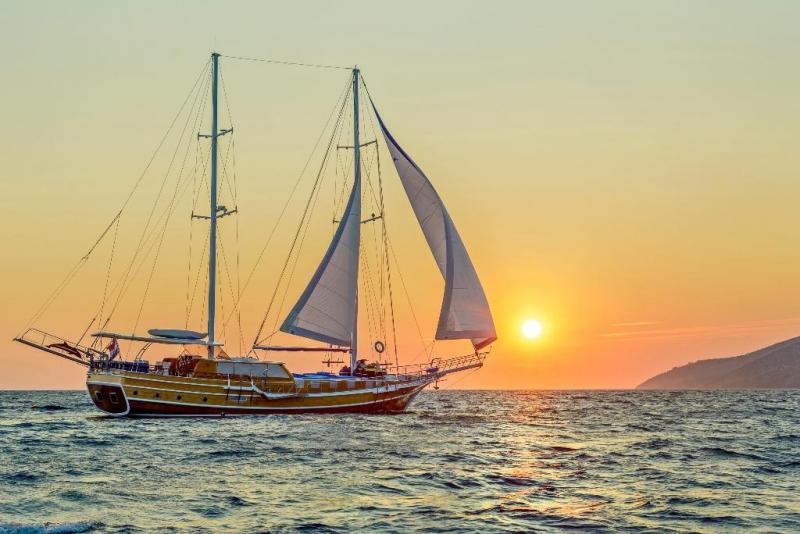
Monohull two masts sailing boat
A schooner has a mainmast taller than its foremast, distinguishing it from a ketch or a yawl. A schooner can have more than two masts, with the foremast always lower than the foremost main. Traditional topsail schooners have topmasts allowing triangular topsails sails to be flown above their gaff sails; many modern schooners are Bermuda rigged.
A schooner is a two-(or more) masted sailboat, in which the aft-most mast – the mainmast – is the same height or taller than the foremast. Many sailors agree that of all the different types of sailboats, a schooner under full sail is one of the most beautiful sights afloat.
Gaffed-rigged sailboats, or “gaffers”, have their mainsail supported by a spar – the “gaff” – which is hauled up the mast by a separate halyard. Often these types of sailboats are rigged with a topsail. The gaff rig is no longer seen on modern production yachts.
A catamaran (‘cat’ for short) is a multihull yacht consisting of two parallel hulls of equal size.
A catamaran is geometry-stabilized, that is, it derives its stability from its wide beam, rather than having a ballasted keel like a monohull. Being ballast-free and lighter than a monohull, a catamaran can have a very shallow draught. The two hulls will be much finer than a monohull’s, allowing reduced drag and faster speeds in some conditions, although the high wetted surface area is detrimental in lower wind speeds, but allows much more accommodations, living and entertaining space in stability and comfort.
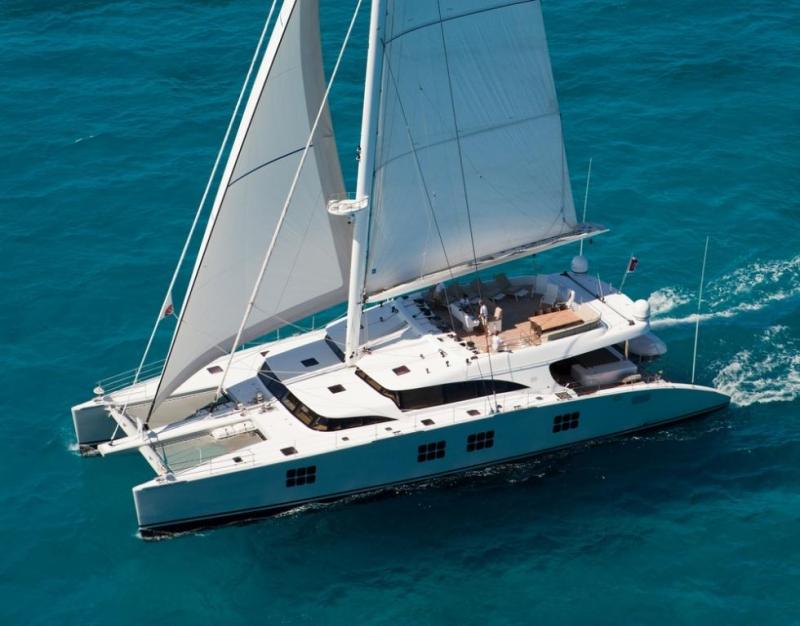
Two parallel hulls sailing catamaran
The speed and stability of these catamarans have made them a popular pleasure craft in Europe, most high-quality catamarans are built in France, but careful since their wide beams aren’t easy (or cheap) to berth in the French Riviera.
Racing catamarans technology has made them today’s leading racing sailboats of the world, like in the latest editions of America’s cup or other renowned transoceanic races.
Please surf through our website listings of sailing catamarans .
OTHER MULTIHULLS
Even harder to berth in the Mediterranean, and most commonly designed for around-the-globe racing rather than cruising, the trimarans have also been gaining some popularity in the western hemisphere, especially by naval designers with futuristic projects.
A trimaran is a multihull boat that comprises a main hull and two smaller outrigger hulls (or ‘floats’) which are attached to the main hull with lateral beams.
MOTORSAILER
A motorsailer or “motorsailor”, is a type of sailing vessel, typically a pleasure yacht, that derives propulsion from its sails and engine(s) in equal measure.
While the sailing yacht appeals primarily to the purist sailing enthusiast, the motorsailer is more suited for long-distance cruising, as a home for ‘live-aboard’ yachtsmen. The special features of the motorsailer (large engine, smaller sails, etc.) mean that, while it may not be the fastest boat under sail, the vessel is easily handled by a small crew. As such, it can be ideal for retired people who might not be entirely physically able to handle large sail areas. In heavy weather, the motorsailer’s large engine allows it to punch into a headwind when necessary to make landfall, without endless tacking to windward.
The Turkish word gulet is a loanword from the French goélette, meaning ‘schooner’.
A gulet is a traditional design of a two-masted (more common) or even three-masted wooden sailing vessel from the southwestern coast of Turkey, particularly built in the coastal towns of Bodrum and Marmaris; although similar vessels can be found all around the eastern Mediterranean. For considerations of crew economy, Diesel power is commonly used on these vessels, similar to a motorsailer. Today, this type of vessel, varying in size from 14 to 45 meters, is very popular and affordable for tourist charters in Turkey, the Aegean, Greece and up to Croatia in the Adriatic.
Please surf through our website listings of cruising sailing yachts by type of rig.
OUR YACHT LISTINGS:
- New Yachts for Sale
- Pre-owned Yachts for Sale
- Yachts for Charter
You might also like
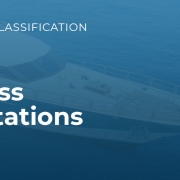
Yachting Consultants
Sale-Charter-Brokerage-Management
Headquarters:
34 Rue Caffarelli 06000 Nice, France
Front Office:
Boulevard de La Croisette – Port Canto 06400 Cannes, France
T.: +33 493 43 82 83 Email: [email protected] Website: www.alliedyachting.com


My Cruiser Life Magazine
Sailboat Types: Full-Guide
For generations, sailing has been a mode of essential transportation, a rewarding hobby, an active and competitive sport, and a lifestyle. Sailing appeals to all, and there are dozens and dozens of types of sailboats.
Small sailboats are perfect for kids to sail on, and massive sailboats are used to cross oceans in style. In between, there are daysailers, racers, and cruisers.
Table of Contents
- What Does a Sailboat Look Like?
Small Sailboats
Cruising boats, cruising catamarans, cruising trimarans, full keel boats, fin keel boats, centerboard keel.
- Hydrofoil Sailboats
A Purpose for Every Type of Sailboat
Faqs (frequently asked questions).
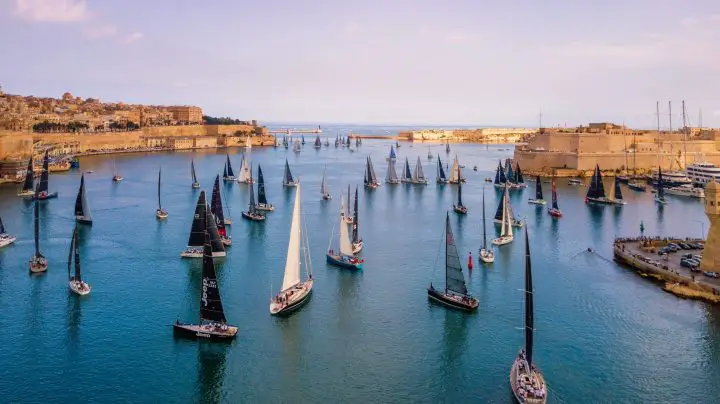
What Are Sailboat Types?
Sailboats are boats that are propelled by the wind. Sailboats use wind power instead of a motor or oars to move the boat. It should be noted, though, that nearly all modern sailboats have a motor as well. It comes in handy when docking in tight marinas and if the wind dies!
A sailboat has one, two, or three hulls. It has at least one mast, or tall vertical spar, that holds up one or more sails. The sails harness the power of the wind to move the boat forward.
To get started, here are some sailing boat types and terms to give you an idea of the sorts of boats that are out there.
- Dinghies — a small open boat, usually for only one or two people
- Daysailors — boats designed to go out for a day trip
- Cruising Sailboats — boats designed to travel long distances that have accommodations for their crew to live aboard a long term
- Sloop — the most common type of sailboat, with one mast and two sails (a jib and a mainsail)
- Ketch, yawl, or schooner — types of sailboats with two or more masts
- Monohull — a boat with only one hull
- Catamaran — a boat with two equal-sized hulls in the water that are connected together by a bridge deck
- Trimaran — a boat with three hulls in the water, the center of which is much larger than the outer two
What Does a Sailboat Look Like?
There are many different types of sailboats, so they look a little different from each other. The basics, however, are the same.
Each sailboat has at least one hull that sits in the water. Part of the hull is visible above the waterline. Part of the sailboat hull sits below the waterline.
The part beneath the waterline might be relatively small, or it can be quite large. The rudder, the mechanism used to steer the boat, is also underwater.
The cockpit is where the helmsperson sits and steers the boat. On small boats, the cockpit takes up the entire boat. Cruising boats have interior accommodations as well as a safe cockpit.
Sailboats have at least one mast and at least one mainsail. As you get to know the different types of sailboats, you’ll see many different hull and sail configurations.
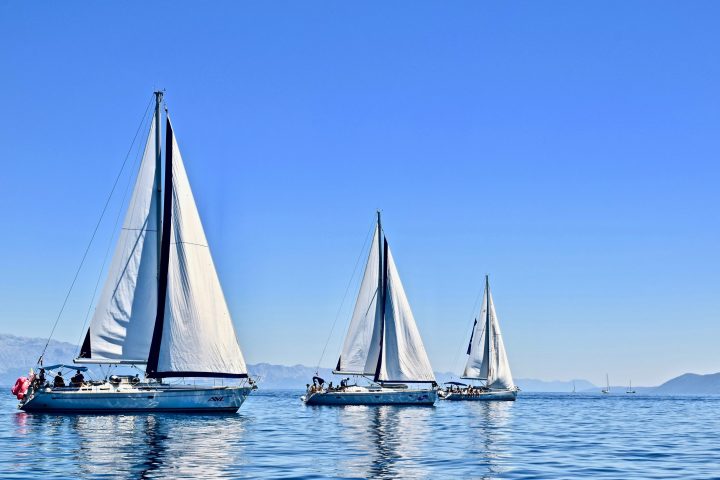
Different Types of Sail Boats
Sailboats come in all types of sailboat shapes and sailboat sizes . Sailboats can be classified by their hull shape, size, or sail plan. The sail plan is how many sails they carry on how many masts.
Hull shapes include monohulls, catamarans, trimarans, and sailing hydrofoils. A monohull has just one hull, a catamaran has two hulls, a trimaran has three hulls, and a hydrofoil lifts out of the water.
Sizes range from eight-foot sailboats to megayachts that are hundreds of feet long. Some sailboats are so small they are only suitable for one child who wants to go skimming across the lake. The largest pure sailing yacht in the world is the Black Pearl at 350 feet long (106.7 meters) long. Visit our Yacht vs Sailboat guide for a more definitive difference between the two and their sizes.
Sailboats also have different sail configurations or sail plans. For example, a sailboat with just one big sail on a forward-mounted mast is called a catboat. A boat with dozens of different sails on three masts is called a three-mast schooner.
Small sailboats are extremely popular and offer a lot of fun to the young and old. Most of the time, these boats are just used for daytime use in pleasant weather conditions. Kids often learn to sail in small monohull sailboats. Families might go for a picnic in a Hobie catamaran.
Yacht club members might race their 16-foot daysailors, while adventurous souls might take their 19-ft weekender and anchor in a calm cove for the weekend.
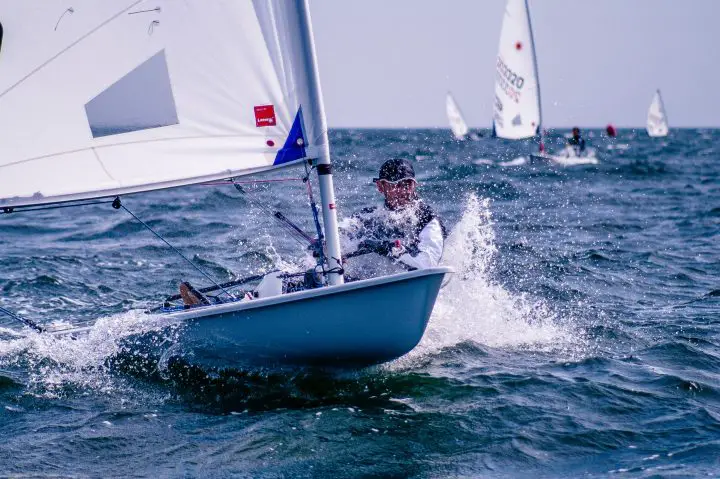
What is a Small Sailboat Called?
Small sailboats have different names, depending on the type of sailboat and the number of sail boat hulls. For example, the boat might be a monohull dinghy, small catboat, small catamaran, or daysailor.
Additionally, like every car on the road, every boat on the water is identified by its make and model. In small boats that are commonly raced, a certain make and model may set up a class of racing boats. Class racing means that all of the boats are identical, so the race is based solely on the skills of the skippers.
Sailing Dinghies
Kids and adults often learn to sail on sailing dinghies. Sailing dinghies can be as small as eight feet long. This small size makes it easy for kids to handle.
Some common sailing dinghies are Optis, Lasers, and Sunfish.
This size sailboat is also functional. They can be used to ferry sailors from their larger anchored boats to shore. The small size also helps sailors easily store their dinghy on larger boats. The word dinghy is often used to refer to any small boat used as a tender for a larger vessel, even if the tender is a motorboat.
Cat Rig Boats
A cat rig boat, or cat boat, is a type of sailboat that usually just has one large mainsail and a forward-mounted mast. Many smaller dinghies and training boats are catboats. A catboat has a free-standing mast with no standing rigging.
Small Catamarans
A catamaran is a boat with two hulls. The Hobie brand is synonymous with small catamarans, which are popular with families looking for a fun hobby. Hobie Cats are seen on the sand at beach resorts all over the world—they’re safe, fun, and fast.
Catamarans are faster than monohulls, and these boats are fun to race. Small catamarans are often used by families that live on the waterfront. Their lightweight makes them easy to drag to the waterfront and launch.
Small catamarans are also popular on beaches. Many beach resorts offer Hobie cats for rent. Small catamarans are between 12-20 feet in length. The hulls are joined only with spars and netting, so these fast and light open boats are not set up to carry a lot of people or supplies.
Daysailors are the ultimate fun boat. As the name implies, this type of sailing boat is used for day sailing. These boats are usually between 12 to 20 feet long. Some use these smaller boats for racing or overnight camping, but most sailors use daysailors for a leisurely sail.
Small Sailboats with Cabins
While most small sailboats just have a large open cockpit, several small yacht types have cabins. These cabins offer a chance for sailors to use a porta-potty or get out of the sun. Some small sailboats even have sleeping accommodations for overnight stays.
An excellent example of this is the Cape Dory Typhoon Weekender. This small sailboat is known as “America’s Littlest Yacht.” Down below, there are two small bunks for sleeping and enough space to have a small stove and a porta-potty. Most owners don’t stay aboard long-term, but the cabin is a useful place to stow items while sailing or to hide during a rainstorm.
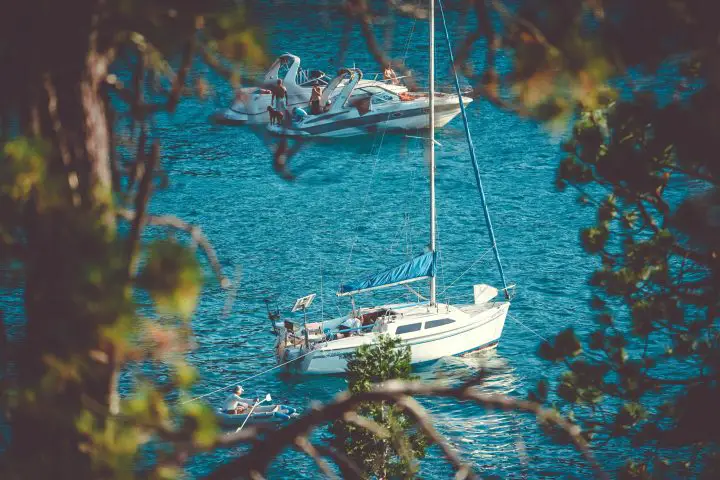
Cruising boats are boats that are capable of traveling long distances. Cruising boats have sleeping accommodations, cooking facilities, and bathroom facilities. These boats are like RVs for the waterway.
Cruising boats offer sailors the chance to live on their boats while sailing. Like RVs, cruising sailboats travel to different ports of call. Cruising sailboats are one of the more popular types of sailing boat. They offer adventurous sailors the chance to enjoy sailing as a sport while seeing new things.
Cruising boats are usually 30 to 50 feet long. Most cruising couples prefer a boat that is around 40 feet long since this provides enough space to live comfortably and enough storage space for all of their gear.
Monohulls are very popular cruising boats. These boats offer good storage, are safe, and are easy for a couple to handle together. Monohulls have different types of sail configurations.
Cruising Bermuda Rigged Sloops
Most monohulls are Bermuda rig sloops. This sail plan features one mast with a mainsail and a headsail. Bermuda rig sloops are easy to single-hand and very versatile. How many sails does a sloop have? A Bermuda sloop flies two sails at a time, which are the mainsail and a headsail.
However, the boat might have other sails onboard. For example, the captain might take down the jib in light winds and use a bigger genoa to capture more wind power. During a downwind sail with light winds, the captain might rig a large spinnaker, which looks like a huge kite, to keep sailing even in little wind.
Even within the sloop category, there are many variations in the design. A masthead sloop is one whose forestay (headsail) goes all the way to the top of the mast. In contrast, a fractional sloop’s forestay connects at some point lower. So a 3/4 fractional rig has a headsail that only goes up three-quarters of the way to the top.
Riggers and boat designers have a lot of tools in their toolbox from which they can make a boat faster or more user-friendly. The type of rigging and sail plan a boat is equipped with offers it performance improvements as well as functionality.
Cruising Cutter
A cutter is a sailboat with one mast, one mainsail, and two sails forward of the mast. The sail at the front of the boat is the jib, genoa, or yankee depending on its size and cut. The next sail in, the inner headsail, is called the staysail. Island Packets are popular boats with this sail plan.
Cutters are popular choices as cruising and bluewater cruiser boats because the staysail provides the skipper with many different sail options. They could fly all three sails fully, or they could fly a small partial mainsail and just the staysail for heavy winds.
Cruising Ketch With Mizzen Sail
Some cruising monohulls are ketches. A ketch can be easily identified by its two masts. The forward mast is the main mast with a mainsail. The aft mizzen mast is shorter and has a mizzen sail. This sail plan can make it easier to carry a big sail area and configure the sails for various sailing conditions.
A boat with more than one mast is called a split rig because the rig is split between two shorter masts instead of all mounted on one tall one. The advantage of a split rig is that there are more sails, each of which is smaller. That makes them easier to handle, and important consideration when you are sailing alone or with only one other person.
Cruising Yawl
A yawl is similar to a ketch and has two masts. However, the mizzen mast on a yawl is aft of the rudder post, whereas it is forward of the rudder post on a ketch. This mizzen mast location is even further back than a ketch’s. Yawls are one of the less popular types of sailboats. However, like the ketch, they offer diverse sail options and can keep sailing in many different types of weather.
On both ketches and yawls, the mizzen mast is shorter than the main mast. If the two masts are of equal height, or the forward mast is shorter, then you are looking at a schooner.
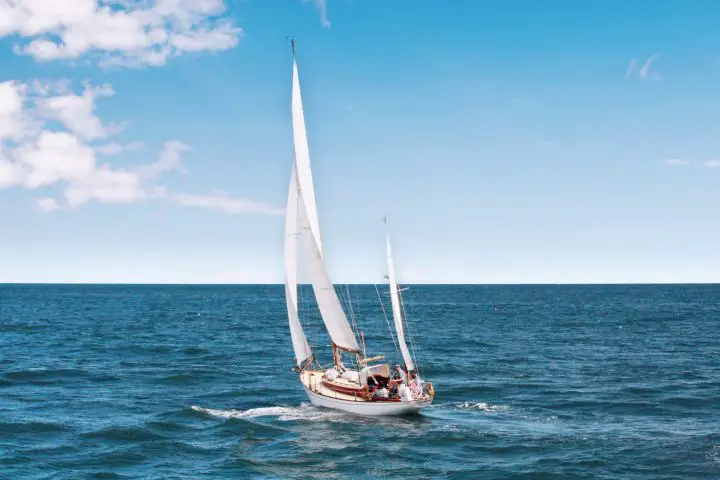
Cruising catamarans are one of the most popular classes of sailboats right now. This type of sailing boat has two hulls and offers sailors speed, space, and comfort. A cruising catamaran is usually between 40 and 60 feet long and 20 to 30 feet wide. The additional width offers cruise sailors huge amounts of space.
Cruising catamarans have excellent storage space and ample living accommodations if you intend to living on a boat . These boats are popular with couples and families and are often used to sail around the world on circumnavigations.
Cruising catamarans are usually fractional sloop rigs. They have one mast, a large mainsail, and a jib or genoa. In general, these boats are designed to be easy to sail and minimize complications.
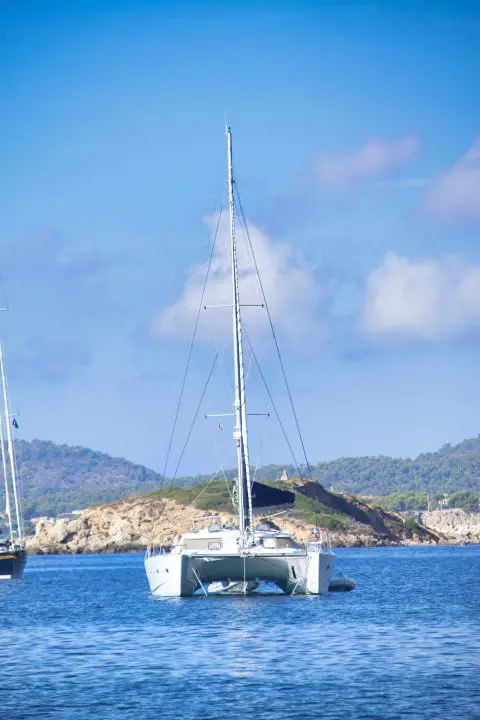
Trimarans are a type of sailboat with three hulls. Trimarans are known to be fast and are popular with racing sailors. However, they are also gaining popularity as cruising boats. These boats usually have fewer accommodations than cruising monohulls and catamarans. However, more modern trimarans like the Neel Trimaran have luxurious living spaces.
Types of Keel
Another way to classify the different types of sailing boats is by looking at the boat’s keel type. You can easily get an idea of different keel designs by walking around a boatyard. When a sailboat is in the water, it is hard to tell the shape of its keel.
The keel is the bottom part of the hull and is underwater. The keel is structurally essential. The keel’s weight helps the boat sail evenly and uprightly. The force created by the water moving over the keel counteracts the effects of the wind on the sails.
So a keel does two jobs for a sailboat. First, it provides a force that allows a sailboat to sail into the wind. Second, it provides stability. If storm-force weather conditions cause a monohull boat to roll, the weight in the keel will help the boat right itself.
Many older cruising boats had full keels. The keel shape runs the entire length of the boat. A full-keel boat is strong and easy to manufacture. Full-keel boats often have deeper drafts. The boat’s draft refers to the amount of water it needs to float. Full-keel boats can’t go into the shallow anchorages that catamarans or swing-keel boats can access.
Captains often report that full-keel boats are harder to maneuver in tight places such as marinas. Full-keel boats lack quick maneuverability. They have a reputation for being slower than more modern designs, but they make up for this by providing a very comfortable and safe ride in rough weather.
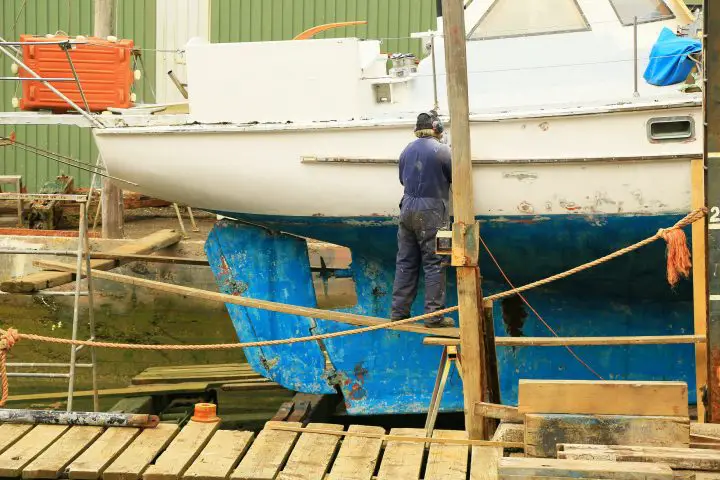
A boat with a fin keel has a smaller underwater profile than a boat with a full keel. This smaller keel resembles a fish fin. Captains find fin keel boats easier to maneuver. Fin keels use their shape to create very effective forces underwater. That makes them very good at countering the forces on the sails, meaning that fin keels sail upwind very well.
A boat with a bulb keel has a torpedo-shaped bulb on the bottom of a fin keel. Bulb keels offer improved stability. Bulb keels have shallower keels than a fin keel boat. The bulb also lowers the center of gravity in the boat, making it more stable overall.
A wing keel features a keel with a small wing on either side of the keel. Viewed from above, the keel looks like it has a set of small airplane wings.
Similar to a bulb keel, wing keel boats often have a shallower draft than fin-keel boats. However, the additional shape causes drag and can reduce sailing performance in some circumstances.
A centerboard is common on small daysailors that are launched and retrieved from trailers. Deep keels make getting those boats in and out of the water difficult. By chopping off the keel, you can make a sailboat as easy to launch as a powerboat.
Related: Best Trailerable Sailboats
But of course, a sailboat needs to have a keel. A centerboard is a simple swinging fin keel that can be raised or lowered. This provides some excellent benefits if the sailor on board likes to explore areas with shallow water.
Many bigger boats have centerboards, too. A boat with a centerboard can be seen as the best of both worlds. A centerboard boat has a fixed shallow draft keel. However, the captain can deploy the centerboard when sailing in deeper waters. The centerboard adds depth to the keel and offers increased stability and performance.
A modification of the centerboard is the swing keel — a ballasted keel that can be retracted like a centerboard . These are rare. They’re used on large cruising boats where the crews want the option of accessing shallow waters. In England, this type of boat is used and can be dried out when the tide goes out.
Racing Sailboats
Yacht racing is a popular sailing sport. It’s a great way to get out on the water while competing. In fact, racing is a great way for sailors to hone their sailing skills. Sailors have to pay close attention to weather conditions and manage their sails effectively to maximize their speed.
Sailors can race any boat with sails. Kids race sailing dinghies against each other. Club racers sail daysailors or catboats. Catamarans and trimarans are also popular race boats. Several classes of boat races in the Summer Olympics.
Hydrofoil Sailboats
A hydrofoil is a unique and modern type of racing sailboat. A hydrofoil can be a monohull, catamaran, or trimaran. A hydrofoil has wing-like foils on the hull’s underside.
As the sailboat speeds up, the hydrofoils lift the hull out of the water, and the hydrofoil sailboat almost appears to be flying above the water.
Because the hull is now out of the water, drag, and resistance are minimal, and the sailboat can sail even faster. For example, a dinghy that usually goes four knots can accelerate to 12 knots when fitted with a hydrofoil.
Most hydrofoil sailboats are catamarans and trimarans. The added width of these multihull sailboats gives the hydrofoil sailboat more stability.
Traditional Sailboats
Traditional sailboats are the type of sailboats used to transport people and goods before modern transportation options were available. Before the railway, cars, and airplanes, a tall ship sailboat was used to ship cargo and people across oceans and from port to port.
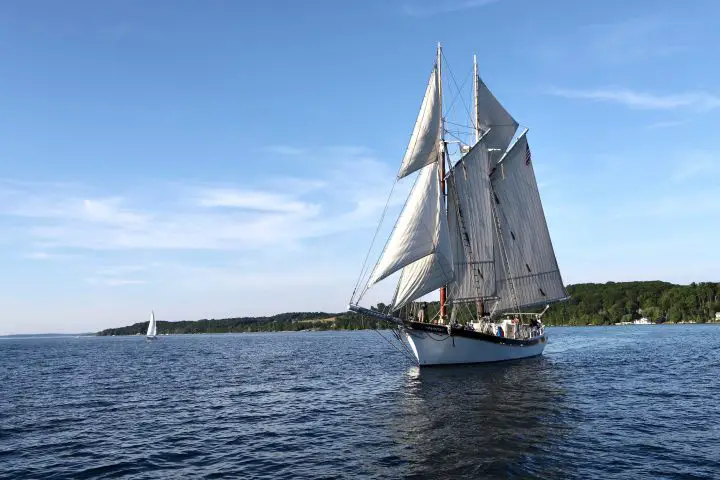
A gaff rig refers to the gaff, which is the upper spar on a square-shaped sail. Gaff rigs can be used with any mast configuration, but this feature is usually seen on traditional boats like a catboat, tall ship, or schooner.
A schooner has at least two masts. They are different from other mast configuration designs with two spars in that both masts are equal in height, or the forward mast is shorter. Schooners are faster than most traditional boats and were often used to transport perishable goods such as fruit.
Schooners were also popular race boats in the early 20th century. For example, first America’s Cup races were won by schooners.
Today, schooners are usually used as charters for vacations or youth sail training programs. But there are a few cruising boats out there that feature schooner rigs.
Any way you divvy it up, there are tons of different types of sailboats out there. With a little research and a little looking, you’re sure to find one that suits your style and boating plans.
What are the classes of sailboats?
Sailboat styles can be classified by hull type, use, or sail plan. The types of sailboat hulls include monohulls, catamarans, and trimarans. You can also categorize the kinds of sailboats by their use. For example, sailors use their boats for daysailing, cruising, and racing. Finally, different kinds of sailboats have different sail plans. A sailboat might be a sloop, ketch, yawl, catboat, or schooner. The term “classes” has a particular meaning in sailing, however. Class racing is the competitive racing between boats of the same make and model—boats of the same “class” or of “one design.” There are hundreds of different classes of sailboats out there. Some of the most popular classes include the Laser and Sunfish classes.
What is a small 2 person sailboat called?
A small two-person sailboat is a dinghy. These small boats are fun to sail on protected waters. Many kids learn to sail in a sailing dinghy. There are dozens of makes and models of sailing dinghies available, some are used in Olympic sailing racing while others are just rowboats with sail rigs attached.
Matt has been boating around Florida for over 25 years in everything from small powerboats to large cruising catamarans. He currently lives aboard a 38-foot Cabo Rico sailboat with his wife Lucy and adventure dog Chelsea. Together, they cruise between winters in The Bahamas and summers in the Chesapeake Bay.
Leave a comment
Your email address will not be published. Required fields are marked *
Save my name, email, and website in this browser for the next time I comment.

Types of Yachts: Your Quick Guide to Luxury Sailing

Drew Redding
Yachting is a popular luxury and pastime activity for many people, who enjoy the thrill and relaxation of sailing on open waters. A yacht is defined as a sailing or power vessel used for pleasure, cruising, or racing, with most featuring a cabin designed for overnight use.
There are several types of yachts available, each offering unique features and experiences for their users. Some are crafted for speed and performance, while others prioritize comfort and space to accommodate larger groups of people. From sleek and streamlined vessels to lavish floating homes, the diverse yacht options cater to the varied preferences and needs of sailing enthusiasts.
In this article, we will explore more about these different types of yachts, their designs, and functionalities, as well as the ideal situations for each type. So whether you’re new to yachting or an experienced sailor, you’re sure to discover some fascinating insights about these exceptional watercraft.
Yacht Sizes

Small Yachts
Small yachts typically range from 20 to 40 feet (6 to 12 meters) in length. They are perfect for day trips and weekend getaways with a smaller group of people. The interiors usually have limited amenities but still provide a cozy and enjoyable experience while cruising through the water.
Medium Yachts
At 40 to 70 feet (12 to 21 meters) in length, medium yachts offer more space and additional features compared to small yachts. They often include:
- Multiple sleeping cabins
- Full-service galley
- Outdoor lounging and dining areas
These yachts allow for extended cruises and accommodate larger groups, making them perfect for entertaining friends and family.
Large Yachts
Large yachts range from 70 to 120 feet (21 to 36 meters) in length and provide a luxurious experience. Key features include:
- Spacious saloons
- Multiple decks
- State-of-the-art technology
These yachts are ideal for those who prioritize comfort, offering extended living spaces and stunning interior designs for a truly memorable adventure at sea.
Superyachts
Measuring over 120 feet (36 meters) in length, superyachts are the pinnacle of luxury. Some impressive amenities commonly found in superyachts are:
- Swimming pools
With their incredible size and versatility, superyachts are perfect for lavish events or long, indulgent trips around the world. You can learn more about these remarkable vessels in this list of motor yachts by length .
Yacht Categories
Sailing yachts.

Sailing yachts are powered by the wind, using sails to catch it. They offer a more traditional experience and are popular among enthusiasts. Some of these yachts have on-board motors as well for additional maneuverability, like the ones in this list of sailing boat types .
Motor Yachts

Motor yachts rely on engines for propulsion, offering a faster and more stable experience. They often come with luxurious amenities and are perfect for leisure cruises or entertaining guests. Some motor yachts also have sails to supplement their engines, providing additional flexibility.

Multihull yachts include catamarans and trimarans, characterized by their two or three hulls. They are known for their stability, speed, and spacious interiors. Multihulls are suitable for different purposes, such as racing or cruising, as demonstrated by this catamaran rescue story .
Yacht Material and Construction
Fiberglass is a popular material for yacht construction due to its lightweight and strong properties. It is made by combining glass fibers with resin, creating a low-maintenance and durable material . Many modern yachts are made from fiberglass because it is easy to mold into different shapes and has excellent resistance to water damage.
Aluminum is another common material used in yacht construction. It is lightweight, strong, and resistant to corrosion, making it ideal for building hulls . Despite its higher cost compared to fiberglass, aluminum offers advantages such as a longer lifespan and easier repairs.
Steel is known for its strength and durability, making it an excellent choice for yacht construction, especially for larger vessels. It comes in various grades, with high-tensile and special-treatment types being the most widely used for hull structures. However, steel requires more maintenance than other materials, such as regular painting and rust prevention.
Traditional wooden yachts have a timeless charm and appeal. Wood is a natural and renewable resource, making it an eco-friendly option for yacht building. However, wooden boats require more maintenance compared to their counterparts made from modern materials like fiberglass. This includes regular inspections, varnishing, and repairs to keep the wood in top condition.
Yacht Functions
Racing yachts.
Racing yachts are designed for speed and performance, featuring lightweight construction and advanced sail plans. They often participate in exciting regattas and competitions around the world. These boats are typically maneuvered by skilled crews who work together to optimize their yacht’s speed and agility.
Cruising Yachts
Cruising yachts, the choice of many sailing enthusiasts, prioritize comfort and ease of handling. They are intended for extended voyages, with spacious cabins, well-equipped galleys, and ample storage for provisions. Upgrades like autopilots and integrated navigation systems help make long-distance sailing more accessible to a wider range of sailors.
Charter Yachts
Available for rental, charter yachts offer a luxurious experience for guests seeking a vacation on the water. Ranging from small skippered boats to large crewed vessels, these yachts provide all the amenities needed for a blissful and memorable getaway. Many charters include experienced crews, taking care of navigation, catering, and guest services.
Expedition Yachts
Expedition yachts cater to adventurous souls looking to explore remote destinations. Built with robust materials and designed for long-range cruising, these vessels can withstand harsh conditions and navigate challenging environments. They often feature advanced communication systems, strong engines, and enhanced safety features to support the journeys of their intrepid owners.
Yacht Interior and Layout
When it comes to yacht interiors and layouts, the options can be vast and tailored to the yacht owner’s preferences. This section will dive into the crucial aspects of yacht interior designs like cabin arrangements, deck layouts, and amenities.
Cabin Arrangements
Yacht cabins come in a variety of styles and sizes to accommodate different needs. A typical layout may include a master suite, guest cabins, and crew quarters. In some luxury yachts , you can find VIP guest suites, children’s rooms, and even offices. Customization options are almost limitless, so owners can choose the perfect combination of materials, fabrics, and color schemes for their floating home.
Deck Layout
The deck layout on a yacht is crucial for both aesthetic and functional reasons. The arrangement often includes various entertainment areas like dining spaces, sunbathing spots , and lounges. Some yachts also feature a beach club, where guests can enjoy direct access to the water for swimming or water sports. Navigating the seas demands superior functionality, so ease of movement and safety considerations are essential in designing deck layouts.
When it comes to amenities, the sky is the limit for what can be included on a luxury yacht. Ranging from onboard cinemas and wine cellars to gyms and spas, these floating palaces cater to the most discerning tastes. Cutting-edge technology adds to the yacht’s comfort, allowing seamless integration of entertainment systems, lighting, and climate control. The choice of amenities will depend on the owner’s preferences, ensuring that their yacht is a perfect reflection of their lifestyle.
Yacht Maintenance and Ownership
When owning a yacht, it’s crucial to have marine insurance . This will protect you against damage to your yacht, and potential liabilities with other boats or property. Research options and choose a policy that fits your needs.
Crew Requirements
Depending on your yacht’s size, you might need professional crew members. This could include a captain, crew, and possible staff for cooking, cleaning, and maintenance. Balance your budget with expected service level when hiring.
Moorage and Storage
Yachts require a place to be moored, and the fees for this vary depending on location. Look for marinas that can accommodate your yacht’s size and offer needed amenities. Additionally, consider the possibility of dry storage when not in use for extended periods.

Types of Racing Sailboats

Last Updated by
Jacob Collier
August 30, 2022
Sailboats come in many different shapes and sizes depending on a variety of factors. This means there are a variety of sailboat racing boat types on the market.
When you look specifically at racing sailboats, you will notice several different aspects that separate them from other sailboats. You might be wondering, what are the types of racing sailboats?
There are many types of racing sailboats that range from one-man dinghies all the way to 100-foot yachts. Some racing sailboats are classified as keel boats, multi-hull, and even a tower ship. These boats are built primarily for speed, so comfort is usually an afterthought depending on the brand.
For racing sailboats, each one is going to fit within a specific race category. So depending on the type of race will dictate the types of sailboats you will see.
According to sailboat data, racing boats have slightly different designs that stand out compared to bluewater sailboats. Looking at the Olympics is another example of what other racing sailboats are out there.
Table of contents
Characteristics of Racing Sailboats
There are quite a few sailboats made today that are geared specifically towards racing. They have one purpose, which is to go as fast as possible.
Some racing sailboats are advanced far more than the average ones, which is completely up to the buyer. For example, America’s Cup race showcases “foiling boats” that run on foils under the hulls. These allow the sailboats to go faster than 50 MPH.
If you are searching for boats that have characteristics to fit within a specific race type, you will find that many boats can enter different races depending on the rules. The most popular sailboat races are:
- Offshore/Oceanic
There are key features that separate racing boats from other sailboats and allow them to enter specific races. These can be narrowed down to the hull design, the type of keel, how many masts it has, and what type of sails are used.
Size of Racing Sailboats
As mentioned, these boats range from smaller dinghies to 100-foot yachts. Depending on the type of race will determine the type of boat that is being used.
The size of certain boats might prevent them from entering races where only smaller ones are allowed. There are exceptions in some races, like a handicapped fleet race, that will adjust the rating to allow their final time to be adjusted. The reason some races are handicapped to a certain extent is so a captain and his crew can determine the outcome and not a boat that is at an advantage.
Overall Design
With racing sailboats, they are subject to racing against the wind about half of the time. The angles of the boats are still similar to cruisers but greatly differ in the size of the sails to allow the sheets to have a better shape.
As racing boats are typically trying to sheet the sails hard, they are trying to keep them within the centerline. This allows the sails to be flatter and change them as needed.
Over time, the sails will typically wear out faster than the ones being used on regular sailboats. Since they are aggressively being used to stretch in the wind, they are subject to more use than regular sailboats.
Similar Looking Sailboats
There are races that only accept sailboats called one-design. These sailboats are built to exact specifications and are nearly identical to one another.
The reason that these boats are designed is to help combat any potential advantages from one boat to the next. It does not really set itself apart from other boats, but it is a good start to get into racing.
Lack of Interior Accommodations
Racing sailboats typically lack anything special on the inside to help save weight and go faster. Since a lot of features are not available, this means it would be nearly impossible to liveaboard full time.
In most scenarios, a true racing sailboat strictly has one purpose: to go fast. This does not mean that all racing sailboats cannot have luxury or comfort, since boat racing has been in existence since boats were first invented for water.
You would need to find boats that have a great balance between using them on weekends and racing. There are plenty of options to consider for what you want to accomplish in racing and comfort.
Types of Sails Being Used
Another characteristic that separates racing boats from cruisers is the types of sails that are being used. Both are designed for performance but are measured a bit differently. Racing sails are meant for speed, as regular sails are meant for cruising.
Depending on the goal of sailing, such as racing, you could look into purchasing sails that are specific to racing. Would you rather take off an extra minute or two of your time with a long upwind leg during a race or have the same durable sail for another five years out?
This opens up the door to endless possibilities of sail-making materials to get the job done. Most cruisers use Dacron or laminates that use a high-stretch fiber. With racing boats, light laminate sails have proven to be more durable and last longer than previous racing sails.
Popular Types of Racing Sailboats
Since the goal is to be around 50 MPH and have the best handling, many options have to be considered for the type of boat to possess both. Since comfort is not a deciding factor, it is somewhat easier to narrow down a racing boat over a bluewater or cruiser boat.
The types of racing sailboats that cater to you will all depend on your budget and your main goal of use. Each series of boats has its main purpose, with some having a little bit of comfort with racing.
Yachts and Super-Sized Sailboats
Yachts that specialize in racing tend to have a solid mix between speed and comfort. With a fiberglass hull and roughly 50 feet or so in length, these boats are not easily handled by just one or two people like others or there.
With that being said, they are also the most expensive out of the group. Even with exceptionally older models, you are still easily looking at $100,000.
You can expect to see racing yacht sailboats to reach about 17 MPH. Depending on the size, they can go faster or slower.
High-Performance Cruisers
Some boats can do it all when it comes to all-around performance . If you are looking for a boat that you can race for fun but still want to take it out offshore and live on, then you need to look at high-performance cruisers that can do both.
These boats generally range between 25 to 40 feet and are similar to yachts. However, they do not have as much luxury in comparison but the price tag is not nearly as heavy.
Trailerable Sailboats
Trailerable sailboats fall into similar categories like the dinghy and small racing boats. These boats can range in length up to 27 feet but are limited in their height and weight.
These serve a purpose for just about anything to do with sailing, but the racing ones are strictly for racing. Their design is meant for speed, not the comfort of heavy-duty performance offshore.
Small Racing Sailboats
Smaller racing sailboats are built to be lighter and have practically nothing on board compared to cruisers or dinghies. Due to their smaller size, they often get mistaken for larger dinghies even though they typically range between 20 and 70 feet.
These smaller racing sailboats are related to cruising sailboats but are a bit smaller. They are cousins to sailing dinghy boats that are used for racing. They also have fin keels and utilize laminate sails.
Sailing Dinghies
Dinghies are a category of small boats that have a wide variety of uses. If you are new to boating, it is a great place to start learning due to its size and simplicity.
These typically only need one or two people at most and are no longer than 15 feet in length at max. Many of these boats are competitively raced and will also result in a wet ride no matter what you do. You will see these types of boats used in certain Olympic events.
Racing Cruising Sailboats
Cruisers have a wide range in size and length, as they range between 16 and 50 feet or more. They feature cabins for extended cruising and have standing headroom below deck if over 26 feet.
Popular brands on the market have introduced models that are fit for racing. These are great for fleet races or for boats that are associated with cruising. With that being said, it is a great compromise for boaters that enjoy racing but also want to cruise whenever they want.
The cutter features a single mast and mainsail, which is very similar to common sailboats like a sloop. A cutter sailboat has the mast further aft which allows the attachment of the jib and staysail.
In high winds, a smaller staysail can still be flown from the inner stay. This used to be a traditional racing design back in the day.
Cutters are great for both offshore and coastal cruising. In addition, they can still be utilized as a racing boat depending on the conditions.
Fractional Rig Sloop
Fractional rig sloop sailboats were popular in the 60s and 70s, but have steadily made a comeback in today's market. This sloop’s forestay will not cross at the highest point of the mast, meaning it attaches at a lower position.
On fairly windy days when you do not have to utilize full power, the fractional rig allows the crew to slightly bend the tops of the mast and flatten out sails. This greatly affects performance and is a great option for cruising, one-design races, and even handicap sailing.
Schooner Sailboats
These particular sailboats have multiple sails which are protected by two masts. These are known as the mainmast and foremast, with the foremast being close to the ship’s foredeck and a lot shorter than the mainmast.
Depending on the size of the schooner, additional masts can be added to allow more sails. These are great for offshore cruising and sailing but can be an effective racing boat.
Trimarans and Catamarans
Trimarans have three of their hulls side by side and “cats” only have two. In comparison, they both share very similar characteristics for racing and overall performance.
Trimarans are quicker and easier to build than catamarans, so, therefore, they are more common. They both have similar restrictions on space and can be used for day sailing.
In addition, they are not as stable as compared to other sailboats out there. There are still various ways to use them and they make for great racing boats since they can reach up to 10 MPH.
How Can These Boats Go Faster?
Each person will select a racing boat that fits their needs accordingly. If you enjoy racing, but continue to lose against boats that are the same, you might want to consider either your team, the technique behind it all, or the boat itself. Routine maintenance is going to be the best thing you can do when checking to see if your racing sailboat can go any faster.
The hull has to be in top shape and needs to be able to hold tension. The sails also need to be checked to make sure they are not overly stretched or worn out.
The masts also need to be of the right stiffness, as they are bending with tension from the rigging. This one might have to be professionally calibrated if you do not know how to do it, especially since every boat with its mast is going to measure differently based on size and shape.
Finally, the weight of the boat could be the determining factor in winning or losing. Make sure the weight is appropriate and the maximum amount for the boat is not exceeded.
Related Articles
Types of Sailboats: A Complete Guide
Born into a family of sailing enthusiasts, words like “ballast” and “jibing” were often a part of dinner conversations. These days Jacob sails a Hallberg-Rassy 44, having covered almost 6000 NM. While he’s made several voyages, his favorite one is the trip from California to Hawaii as it was his first fully independent voyage.
by this author
Best Sailboats
Most Recent

Affordable Sailboats You Can Build at Home
Daniel Wade
September 13, 2023

Best Small Sailboats With Standing Headroom
December 28, 2023
Important Legal Info
Lifeofsailing.com is a participant in the Amazon Services LLC Associates Program, an affiliate advertising program designed to provide a means for sites to earn advertising fees by advertising and linking to Amazon. This site also participates in other affiliate programs and is compensated for referring traffic and business to these companies.
Similar Posts

Best Bluewater Sailboats Under $50K

Best Blue Water Sailboats Under 40 Feet

Which Sailboats Have Lead Keels?
June 20, 2023
Popular Posts

Best Liveaboard Catamaran Sailboats

Can a Novice Sail Around the World?
Elizabeth O'Malley
June 15, 2022

4 Best Electric Outboard Motors

How Long Did It Take The Vikings To Sail To England?

10 Best Sailboat Brands (And Why)
December 20, 2023

7 Best Places To Liveaboard A Sailboat
Get the best sailing content.
Top Rated Posts
Lifeofsailing.com is a participant in the Amazon Services LLC Associates Program, an affiliate advertising program designed to provide a means for sites to earn advertising fees by advertising and linking to Amazon. This site also participates in other affiliate programs and is compensated for referring traffic and business to these companies. (866) 342-SAIL
© 2024 Life of Sailing Email: [email protected] Address: 11816 Inwood Rd #3024 Dallas, TX 75244 Disclaimer Privacy Policy
Sail Types: A Comprehensive Guide to 8 Types of Sails
Sailboats come in all shapes and sizes. And that means there are many types of sails on the market! For those who might not know, sails are made of canvas and use wind power to propel sailboats through the water.
Understandably, different sails are required for different types of sailboats . And sailboats are categorized by the number of hulls they have. Monohulls have a single-hull design, catamarans have two hulls, and trimarans have three. Generally, sailors use catamarans for upwind sailing (but they can be used to sail downwind in certain conditions).
The type of sail you'll need for your sailboat depends on the kind of sailboat you have. Additionally, sails are highly dependent on the wind and weather conditions. Therefore, it's always a good idea to have different types of sails on board to navigate the ever-changing weather conditions.
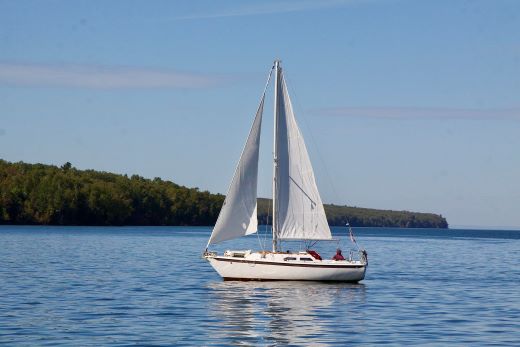
8 Types of Sails for Sailboats
As mentioned, you should carry multiple sails when sailing to prepare for various weather conditions. Here's a brief overview of the types of sails for sailboats:
1. Mainsails
The mainsail is the largest and most important sail. Therefore, it's probably the first sail to come to mind when you think of camping. Typically, it's situated directly behind the mast — connected to the boom — and uses wind energy to move the vessel. The mainsail plays a significant role in tacking and gybing, making it essential for any voyage.
Since the mainsail is a larger sail, it doesn't require wind to propel it forward. And the fact that it can be moved by moving the boom makes it uber-easy to operate.
Learn More About Sailing
2. Headsail
The headsail often accompanies the mainsail, though it is smaller in size. Regardless of your sailboat type, the headsail is positioned at the front of the mast – over the sailboat's bow.
Because headsails are small, they are helpful when navigating through windy conditions. Smaller sails catch less wind, preventing them from propelling your boat as strongly as larger sails. Additionally, headsails help lift, balance, and protect the vessel from inclement weather conditions.
While the term 'headsail' refers to any sail in front of the mast, the jib is the most common type of headsail. (And when a jib is so large that it overlaps the mast, it's called a genoa.)
Learn More About Sailboats
3. Genoa
The genoa is a large sail that attaches to the front of the forestay. (In this instance, it's similar to a headsail.) However, the genoa is larger than the headsail and overlaps the mainsail partially or completely to help the boat go faster.
Genoa sails are useful when sailing through light or medium wind. You can also use it when the wind comes directly from the rear. If you use a Genoa sail during high winds, you'll probably start sailing too quickly and put yourself and your boat at risk.
4. Spinnaker
The spinnaker is a large and whimsical (often colorful) sail. Spinnaker sails are usually symmetrical, allowing them to reach different points of sail. Generally, these are lighter sails and don't cover the mast like the genoa.
Because spinnaker sails are on the larger side, you have to be incredibly careful with them. Don't use them in rough conditions. Instead, save them for sailing in low winds and calm seas.
5. Gennaker
As the name suggests, the Gennaker sail combines a spinnaker and a Genoa sail. They are as large as the spinnaker, although they're not symmetrical.
They come in handy whenever the wind changes from a pure dead run to a reaching point of sail, as sailors can navigate various wind types with the same sail. It's still only meant for lighter and milder winds, but it's more versatile than the spinnaker and genoa.
6. Light Air Sails
Light air sails are useful in calmer conditions when the headsail and mainsail alone aren't cutting it. They include:
- Code Zero : A code zero sail is a gennaker sail ideal for sailing in light to mild winds. It's designed to create lift and boost boat speed whenever regular sails don't generate enough power. For that reason, many racers and cruisers use code zero sails to improve performance and gain control in various situations.
- Windseeker : This small, special sail is reserved for no wind or light wind. Essentially, it helps boats remain maneuverable in extremely calm conditions. And for that reason, it's valuable to long-distance sailors.
7. Storm Jib
Storm jibs can be used as a headsail whenever the weather is particularly rough and windy. Because it functions as a safety seal, it prevents boats from capsizing by reducing the sail area exposed to the wind. Therefore, it's a necessary sail for every sailor.
Read Next: Boating in Inclement Weather
During strong winds and storms, sailors can raise a trysail — a small, triangular sail near the boat's stern — for better control and stability. Generally, sailors do this whenever the mainsail becomes too large and challenging to maneuver.
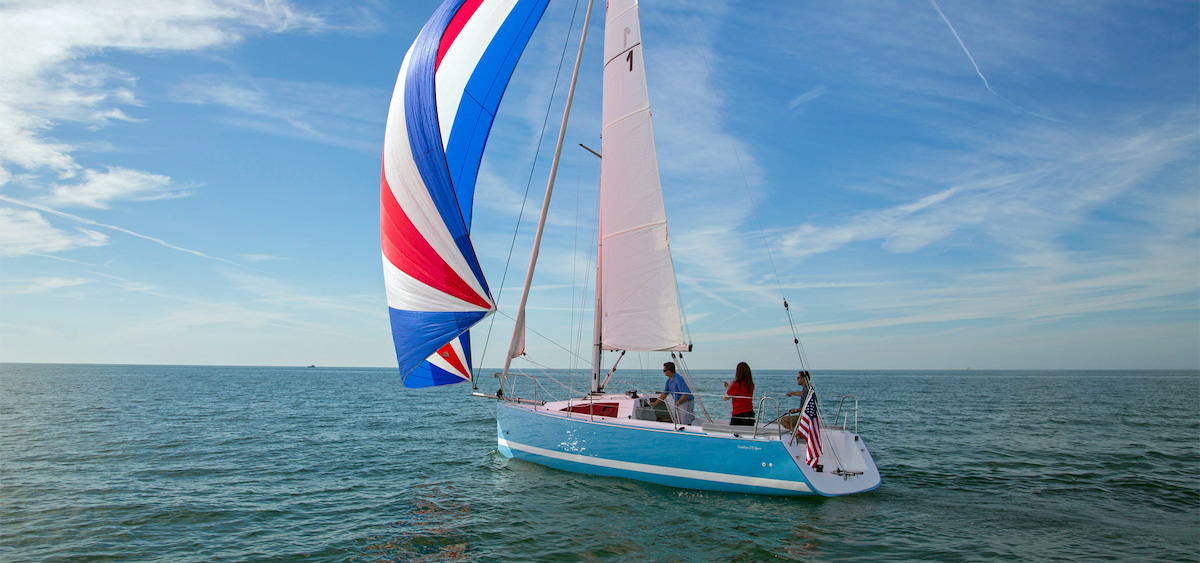
Join Our Newsletter!
Get community news, buying bargains, and how-to guides at your fingertips.

Choosing the perfect fit for your sail: Bareboat vs. Crewed Yacht charters
S etting sail in the open expanse of the sea might sound thrilling but challenging at the same time. Choosing the correct type of yacht for your voyage can be a dilemma, especially when there are so many types. But do they match your needs?
For this, the first step is to do your research. This will bring clarity to your decision on whether you want to set sail alone or need professional assistance. Choosing the correct type of yacht is crucial for a hassle-free sailing experience.
Yacht charters have endless types, but this article only gives you in-depth information about the broader categories of bareboat and crewed charters.
The goal is to help you make an informed decision by considering your group size, requirements, and priorities.
So let’s get started!
Types of yacht charters
Each yacht charter is tailored to meet different tastes and priorities, and choosing one can be overwhelming. Some of the most famous known types include:
Bareboat charters
Crewed charters.
- Skipper charters
- Luxury charters
- Cabin charters
This section will delve into the pros and cons of bareboat and crewed charters to help you plan the vacation you rightly deserve.
Chartering a bareboat gives you a thrilling experience of exploring the open sea. This type of yacht gives you freedom of navigation. This means you’re the captain, and you’re the crew.
However, the sailing period is pre-defined while renting a bareboat from a charter company.
Pros of bareboat charter:
- Flexibility
On a bareboat charter, you are the captain to set your itinerary. There is no need to stick to a fixed schedule, and you can make changes as you desire. This gives you the advantage of discovering more unexplored sites you can’t do on a busy cruise.
- Cost-effective experience
Bareboat charters provide financial leverage because you handle the boat yourself. So, heavy charges of the crew can be avoided easily. This cost-saving feature makes it an attractive choice for a memorable voyage across the sea.
- Customized experience
Chartering a bareboat allows you to be accessible to personalize your sailing experience. You can choose your dream destination and explore in solitude.
This provides an excellent opportunity to create precious, intimate memories with family and friends. So, your sailing experience will reflect your preferences and interests.
- Self-confidence
The independence that the bareboat charter offers comes with a bundle of self-confidence. You get an opportunity to manage life at sea on your own.
Getting out of your comfort zone of traditional traveling boosts your confidence automatically and motivates you to discover the hidden gem of places on your own.
Cons of bareboat charter
- Experience required
The independence that a bareboat charter offers seems attractive. However, it comes with a precondition. You must have prior sailing experience, and the necessary sailing skills are required for a self-sufficient adventure in the sea.
- Self-catering
Preparing meals, planning, and managing supplies can be daunting; on a bareboat charter, you are responsible for self-catering. It can be an enjoyable experience for culinary enthusiasts. However, it required precise planning and organizing to ensure self-sufficiency in the sea.
Even though an independent sail must be thrilling, nothing compares to having an assisted crew while you relax and enjoy the panoramic ocean scenes.
A crewed charter usually comes with a small crew of a skipper, a chef, and a hostess to assist you while you relax.
Pros of crewed charters
- Professional crew service
A skilled captain always makes navigation easier. By renting a crewed charter, you will gain a deeper insight into your destination through the crew’s local knowledge. Moreover, it ensures your safety and expert guidance in the sea.
This will not only make your journey smooth but memorable as well. Whether it comes to navigation or wanting a cocktail, the crew will be there to fulfill every need.
- Stress-free sail
The whole point of a vacation is to remain stress-free. While the crew handles all the operations and technicalities, you are left by yourself to enjoy. This provides an excellent opportunity to make memories with your loved ones or immerse in your surroundings without any worry.
With the crew catering to your every need, it leaves you plenty of time for exploration and relaxation.
- Customization
Crewed charters are famous for their adaptability. If you want to make any changes in your schedule, the crew is there to help you. You can plan intimate family gatherings and celebrations with your friends with the help of a limited but professional crew.
It is an attractive option because your voyage can be personalized to make it memorable. This adds a hint of exclusivity but at a reasonable price.
Cons of a crewed charter
- Costly
The exclusivity that a crewed charter offers comes with a price tag. Even though it ensures a wholesome experience with a professional crew, it can be a limiting factor for people with a budget constraint. So, careful evaluation is necessary when paying this much for an experienced crew to be on board with you.
- Limited privacy
Even though a professional crew ensures safety, their presence can be a compromise to your independence and privacy on the yacht. Your crew may influence your itinerary, and this results in less freedom than a bareboat charter.
However, these confusions can quickly be cleared out very easily. By communicating your needs effectively to your crew, they can maintain a balance between privacy and assistance.
- Itinerary limitations
The crew’s operations may impact your original plan, and these changes may not always be feasible. This can be frustrating sometimes but can be resolved by communicating with your crew.
However, the level of independence is different from a bareboat charter.
Now you can decide…
We have discussed the pros and cons of the primary two yacht categories. We now know that a bareboat charter stands out for independent sailors who seek a self-sufficient adventure. On the other hand, a crewed charter offers more relaxation as the operational and technical aspect of sailing is handled by crew members. At the same time, you relax in a hassle-free vessel.
These distinctions will help you make an informed decision while considering your budget constraints, prior sailing experience, and dream destinations.
Once you research, you can also contact yacht chartering companies for more information. Chartering companies worldwide, like 12knots.com yacht charters , offer a diverse insight into a fleet of yachts and sailing destinations.
So ditch the old travelling options, and for your next vacation, charter a yacht for a perfect getaway.
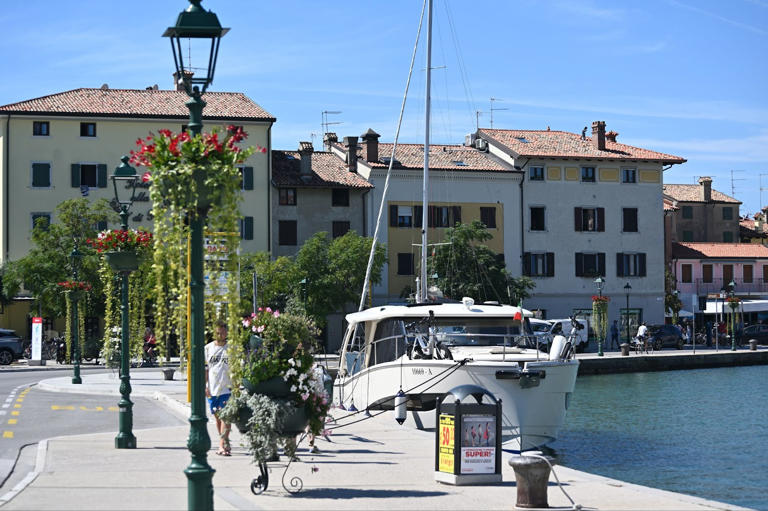

IMAGES
VIDEO
COMMENTS
one mast. triangular mainsail (called a Bermuda sail) a foresail (also called the jib) fore-and-aft rigged. medium-sized (12 - 50 ft) Fore-and-aft rigged just means "from front to back". This type of rigging helps to sail upwind. Any sailboat with one mast and two sails could still be a sloop.
The most common kind of sailboat is the sloop, as it's simple to operate and versatile. Other common sailboat types include the schooner, cutter, cat, ketch, schooner, catamaran, and trimaran. Other sailboat variations include pocket cruisers, motorsailers, displacement, and shoal-draft vessels. The information found in this article is sourced ...
30-70+ feet. Sailing yachts are graceful and use wind power. Motor yachts are speedy and powered by engines. Catamarans stand out with their steadiness and roominess - great for a leisurely cruise. Trawler yachts are great for long-distance trips because they're fuel-efficient and have comfy living areas.
List of sailing boat types. A Windmill sailing dinghy. The following is a partial list of sailboat types and sailing classes, including keelboats, dinghies and multihull ( catamarans and trimarans ).
Sailing creates subgroups of boaters and a very strong culture within each segment. Sailing Dinghy. For beginners and kids, small boats like sailing dinghies are a good way to start because they are light and responsive to wind and maneuvers and will reward or punish the sailor quickly, providing immediate feedback and a great learning platform.
May 10, 2021. Sailboats are powered by sails using the force of the wind. They are also referred to as sailing dinghies, boats, and yachts, depending on their size. Sailboats range in size, from lightweight dinghies like the Optimist dinghy (7'9") all the way up to mega yachts over 200 feet long. The length is often abbreviated as LOA (length ...
A trimaran is a type of sailing yacht that has three hulls, two smaller amas (outrigger hulls) and a central main hull, rather than one. They are known for their speed and stability, and are often used for racing and long-distance cruising. One of the key features of trimarans is their speed. The two smaller amas, which are located on the sides ...
The most common type of sailboat is the racing sailboat, used in sailing competitions around the world. Several international events intended to raise awareness about sailing allow a wide range of craft types to participate, including catamarans and racer-cruiser. For most sailing vessels, sail plans are often drawn up before the vessel leaves ...
Bilge keels are used on many types of boats, including catamarans and trimarans; however, they are most often seen on small sailboats. Centerboard or Dagger board sailboat. A centerboard is a retractable keel that is lowered down into the bottom of the boat. The centerboard is lowered when sailing upwind, so that it can reduce drag on the hull.
Sailboat Types by Primary Use. You can do many of the same things on all sailboats, but some types are more specialized. Sailing dinghies: Small boats usually sailed by one or two people, sailing dinghies are often used to teach new sailors. That said, experts on high tech sailing dinghies compete in athletic racing up to Olympic level.
Buying Considerations. When considering buying a sailboat, it is important to understand the different types of sailboats available and the purpose each serves.Sailboats can be broadly categorized into three types: Racing sailboats: Designed for speed and performance, with minimalistic interiors and advanced sail systems. Cruising sailboats: Built for comfort and longer trips, featuring more ...
Rogers, AR 72756. Phone: (479)339-4795. Email: [email protected]. Sailboats can be divided into three basic types based on their hulls (catamaran, monohull or multihull), their keel and their rigging, and then further subdivided from there. The result is that there are actually well over a dozen different kinds of sailboats out there.
This observation alone will enable you to identify the five main types of sailboats — sloops, cutters, ketches, yawls and schooners - all of which are described here. But apart from the various rig types, you can describe types of sailboats from a different viewpoint - sailing dinghies, dayboats, motorsailors, monohulls, catamarans and ...
Monohulls are the classic sailing boat with one hull. Large, traditional, and older versions have deeper and heavier keels integrated into the hull for greater stability. At the same time, newer designs have fin keels that are attached rather than integrated appendages. Monohull boats can be used for racing or cruising.
Contents show. Several factors determine the types of sailboats, including the hull type, keel type, mast configuration, and sails and rigging. The hull is the boat's body and can be either a monohull, catamaran, or trimaran. The keel is the underwater part of the hull that provides stability and can be either a fin keel, wing keel, bilge ...
The sport of racing sailboats dates back centuries and is today as popular as ever. There is no one type of racing sailboat, and the term in fact covers a broad spectrum of yachts, from one-man dinghies all the way to 100-foot yachts. In fact, any sailing yacht can be raced and there are many classes of sailboats and competitions around the world.
A trimaran is a multihull boat that comprises a main hull and two smaller outrigger hulls (or 'floats') which are attached to the main hull with lateral beams. MOTORSAILER. A motorsailer or "motorsailor", is a type of sailing vessel, typically a pleasure yacht, that derives propulsion from its sails and engine(s) in equal measure.
When narrowing your choices, there are two main yacht types on offer: motor and sail and each type has its unique properties to offer. Traditionally, motor yachts have more space and stability and are a popular choice for families or larger groups, while sailing yachts have the same high levels of luxury but are well suited to those who like ...
Ketch, yawl, or schooner — types of sailboats with two or more masts. Monohull — a boat with only one hull. Catamaran — a boat with two equal-sized hulls in the water that are connected together by a bridge deck. Trimaran — a boat with three hulls in the water, the center of which is much larger than the outer two.
A yacht is defined as a sailing or power vessel used for pleasure, cruising, or racing, with most featuring a cabin designed for overnight use. There are several types of yachts available, each offering unique features and experiences for their users.
There are many types of racing sailboats that range from one-man dinghies all the way to 100-foot yachts. Some racing sailboats are classified as keel boats, multi-hull, and even a tower ship. These boats are built primarily for speed, so comfort is usually an afterthought depending on the brand. For racing sailboats, each one is going to fit ...
3. Genoa. The genoa is a large sail that attaches to the front of the forestay. (In this instance, it's similar to a headsail.) However, the genoa is larger than the headsail and overlaps the mainsail partially or completely to help the boat go faster. Genoa sails are useful when sailing through light or medium wind.
Choosing the correct type of yacht is crucial for a hassle-free sailing experience. Yacht charters have endless types, but this article only gives you in-depth information about the broader ...